Teramae (Dmytrenko) Nataliya
UA View project researcher, author of the articles about Oleksandr Bohomazov and Vasyl Krychevskyi.
Myasnitskaya Street, 24, Moscow, Russia
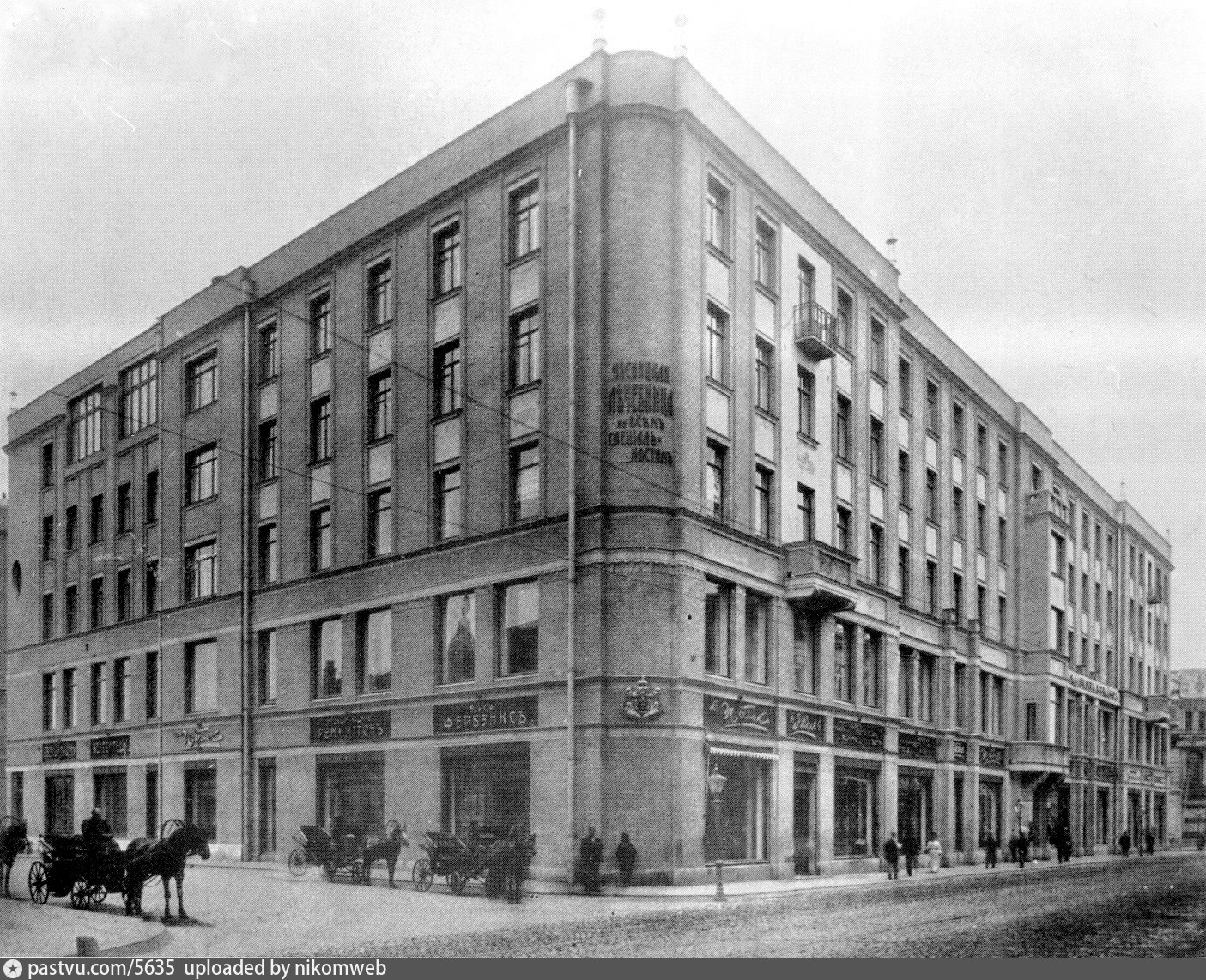
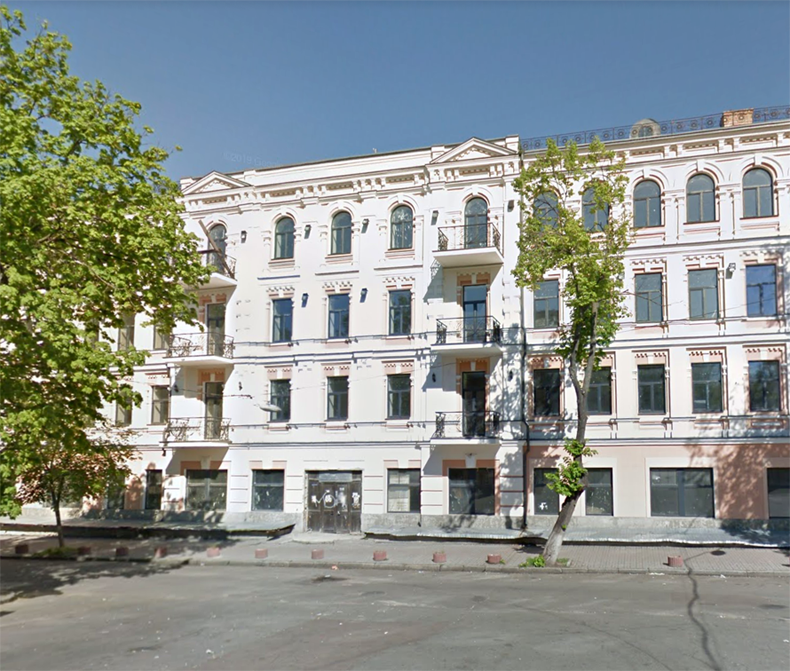
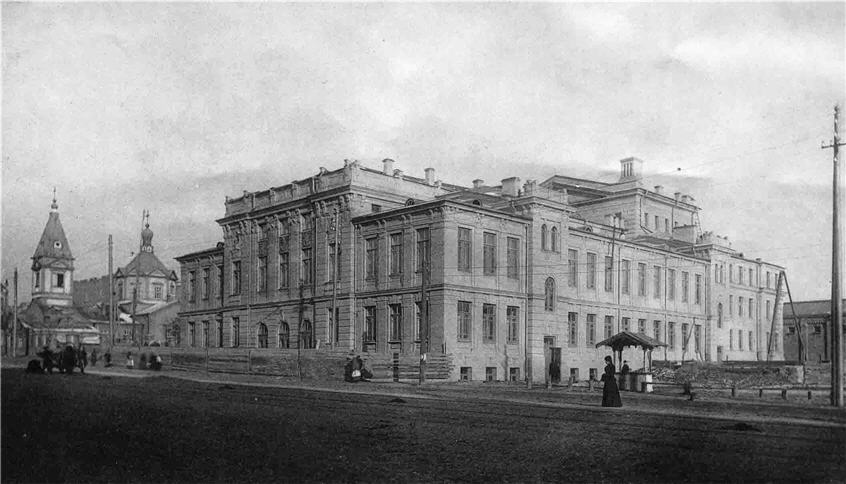
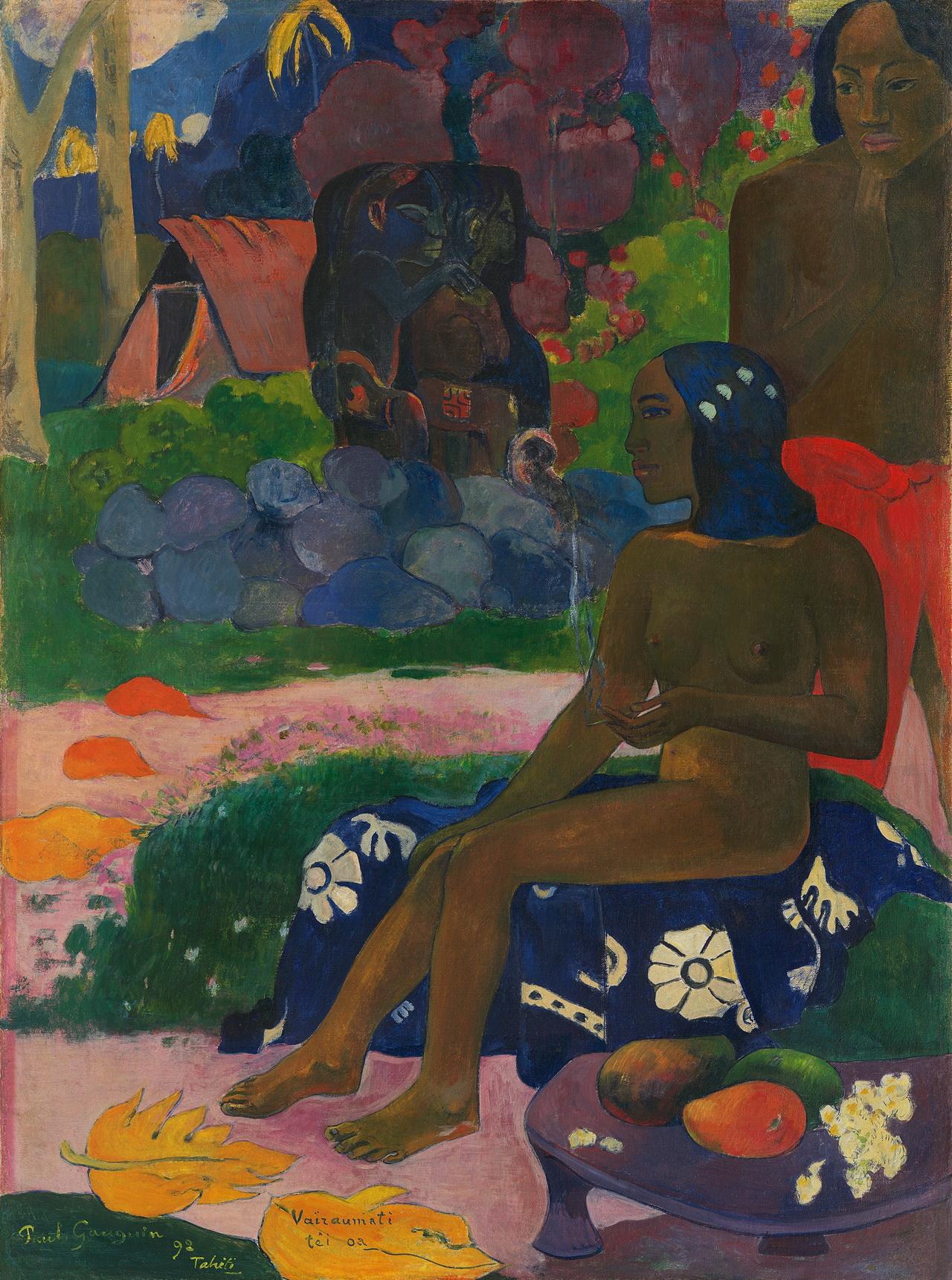
In 1907, at this address, Oleksandr Bohomazov studied in the drawing and painting studio of Fyodor Rerberg, a well-known teacher. At the time of his studies in Moscow he had already received a basic art education from the Kyiv Art College (1902-1905). He had been expelled from the Kyiv college along with Alexander Archipenko for their participation in a strike associated with social unrest in the Russian Empire. In Kyiv, his teachers were Alexander Murashko, Ivan Seleznyov, and Mykola Pymonenko. In Kyiv, Bohomazov hadparticipated in a student exhibition organized by Sergiy Svyatoslavsky, a landscape artist, in the grandiose Troitsky People’s House (now the Operetta Theatre).
In Moscow, Bohomazov studied in two private studios organised by Konstantin Yuon and Fyodor Rerberg. The latter had Kazimir Malevich as a student a year before Bohomazov’s arrival; Bohomazov would meet Malevich in person 20 years later when they taught at the Kyiv Art Institute. In those times, progressive youth dabbling in the arts took to impressionism and post-impressionism. Other than his studies, an obligatory part of a young artist’s schedule was familiarizing himself with “great paintings by Gauguin” from Schukin’s collection and from visiting the Tretyakov Gallery.
After his return from Moscow, Bohomazov finished his studies at the Kyiv Art College (1908-1910). A note in his diary from 1910-1911 sums up his starting point in the arts: “I am an artist. This is both my strength and my weakness. I cannot give it up because I already know that at the very first opportunity this passion will return with new power. This is not a whim; it is a need, the meaning of my life.”
Khreschatyk Street, 52, Kyiv, Ukraine
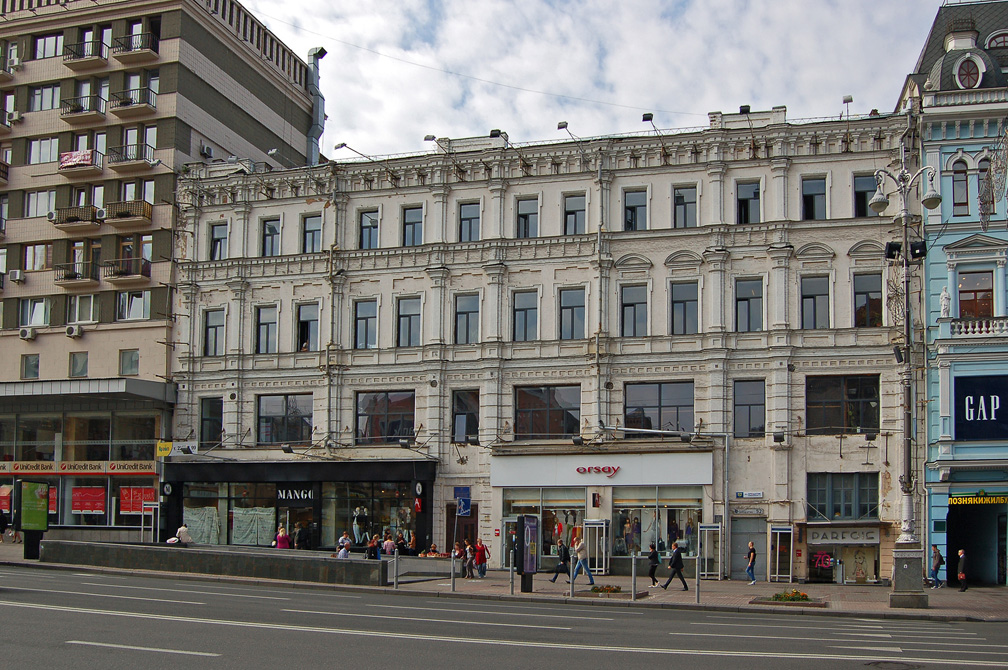
On 2 November 1908, on Kyiv’s central street, the Lanka exhibition opened; this was a conditional starting point of the Ukrainian avant-garde – the first of a series of exhibitions showcasing young avant-garde artists and making evident the connection between old and new art. Young artists – David and Vladimir Burliuk and Alexandra Exter – invited students to exhibit their works, Oleksandr Bohomazov among them. This was a well-organized event: with announcements and advertising in the leading press, newspaper discussions, and “A Night of Contemporary Poetry”, a multidisciplinary event at which authors read their poems to music accompaniment. The exhibition did not attract many visitors, but its critique accompanied by caricatures and satirical articles was devastating. Oleksandr Bohomazov, who resumed his studies at Kyiv Art College, showcased four works classified as sketches in the catalogue. “At the Lanka exhibition you will not see too many artful paintings. Not because the exhibition is ‘new’ and the painting style in many works is unusual for our eye, but because, with few exceptions, this is an exhibition of talentless artists,” wrote the Kyivska Dumka newspaper.
The article also mentioned Bohomazov, calling him a “penciller” and claiming he had no connection with famous art groups. So, here’s a fun fact in the artist’s biography: three years later, Kyivska Dumka would send Bohomazov on a business trip to Finland.
Jagiellonian Library, aleja Adama Mickiewicza 22, Kraków, Poland
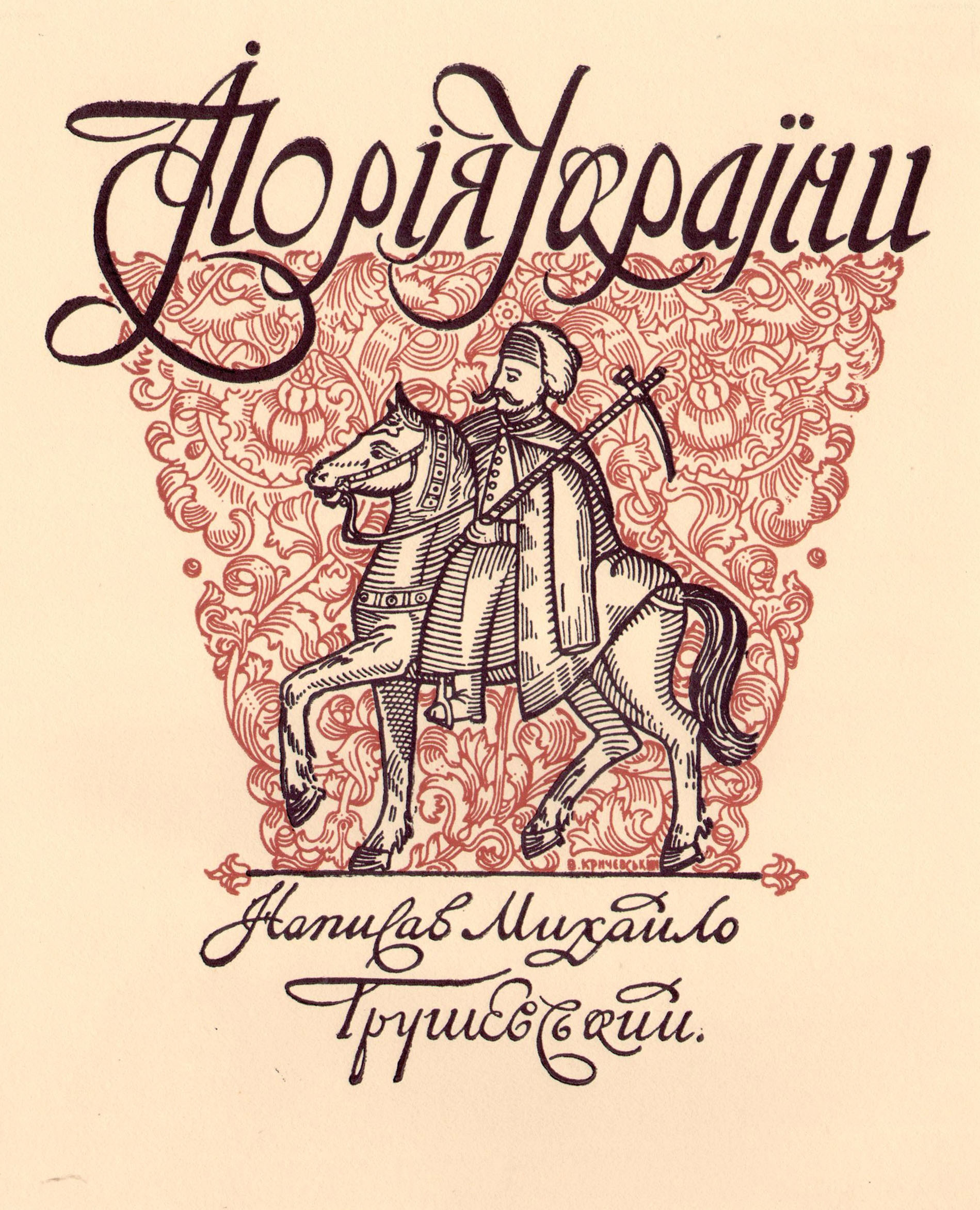
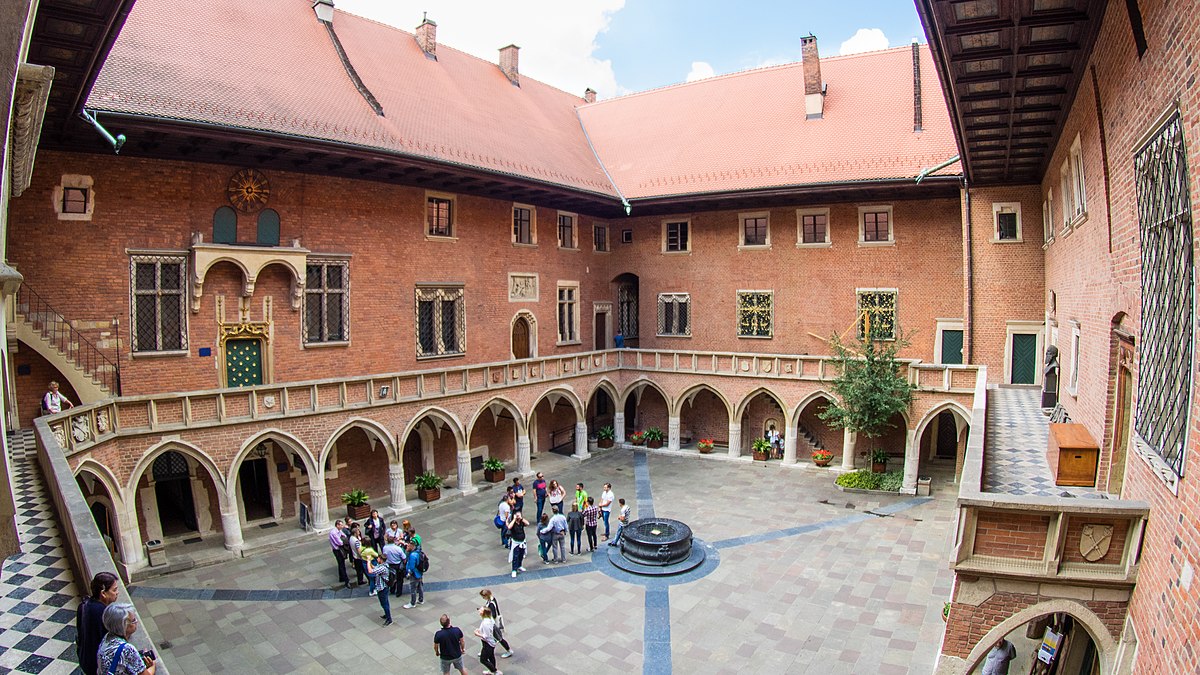
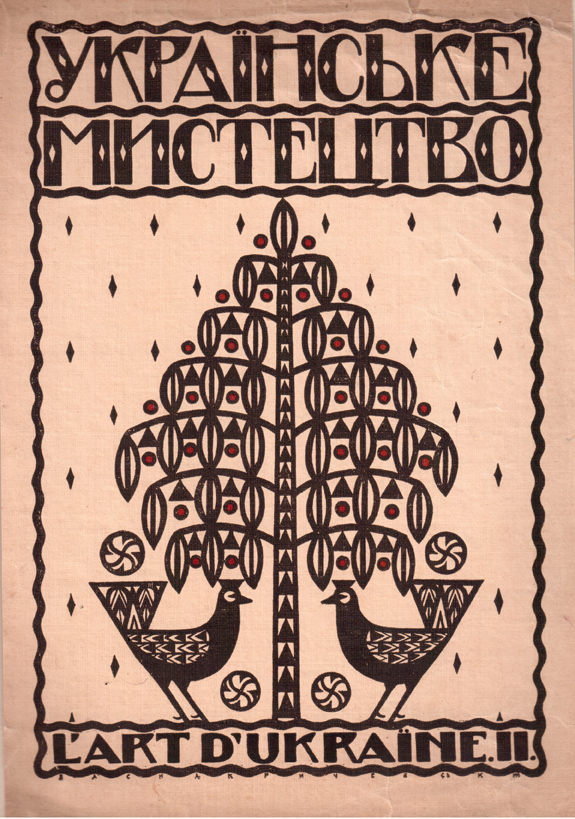
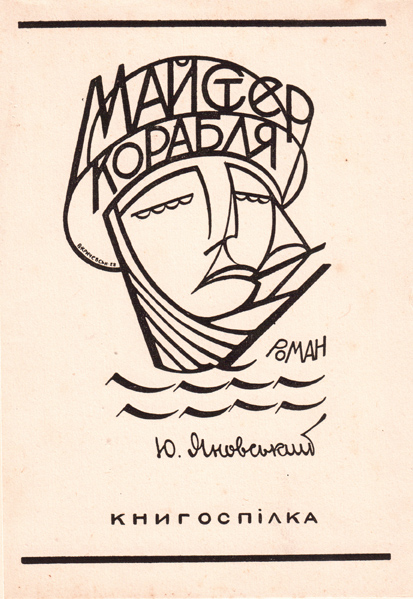
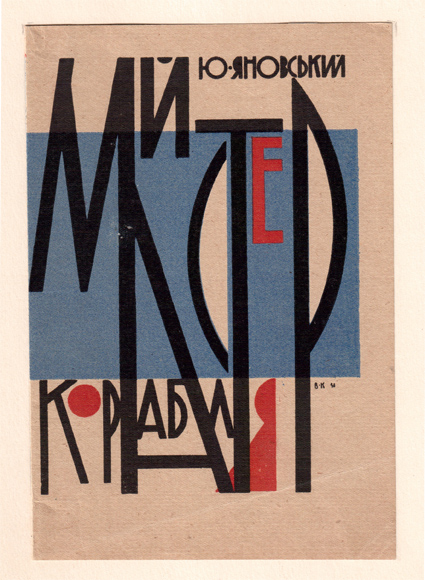
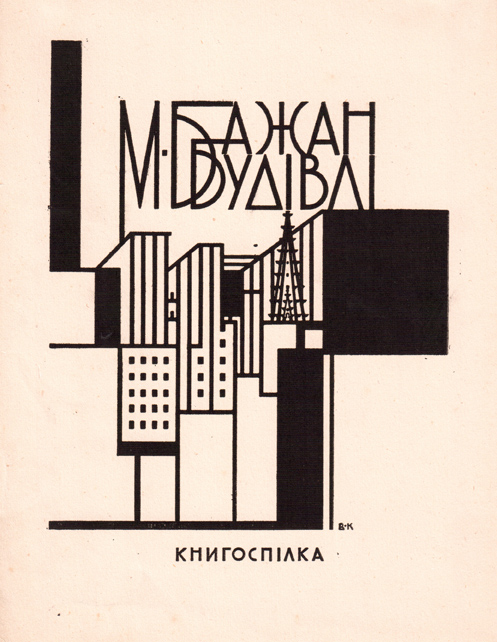
Vasyl Krychevskiy, already an acclaimed architect and painter, immersed himself in his new passion – illustration. Commissioned by historian Mykhailo Hrushevskiy, he took on the visual design of The Illustrated History of Ukraine, a popular publication for general audiences. The publishers had taken on a task considered innovative at the time: Illustrating a book with photographs and drawings of artefacts instead of “artist renderings” which were the common practice then. On this occasion, in August 1911 Krychevskiy travels to Krakow to research the archives of the Jagellonian Library, which to this day preserve unique memorabilia from Ukrainian history. At the time the library was housed in a gothic 15th century edifice of the Collegium Maius, in Krakow’s centre. The artist created over 30 drawings and the designed the cover of Hrushevskiy’s book.
In his book illustrations Vasyl Krychevskiy chose to be a co-author – his designs and drawings were to reflect the spirit of the work, and he usually offered dozens of options for cover designs. ”Thoughtful asymmetry with contrasts, with gradual development and architectural austerity produces the same effect as the growth or development in a dramatic or musical work,” he explained. Over decades of work in illustration Krychevskiy had developed a unique and recognisable style: laconic, geometric (the reason he excelled at constructivist drawing), often with elements of folk symbols and Ukrainian book design of the 17th-18th centuries. A very typical Krychevskiy tool was drawing a grape cluster as a triangle with smaller triangles inside arranged in checkerboard fashion. A similar pattern of grapevines – designed as an elongated hexagon, another characteristic feature of Krychevskiy’s style – decorate his tombstone.
Piazza Giuseppe Mazzini, Roma, Italy
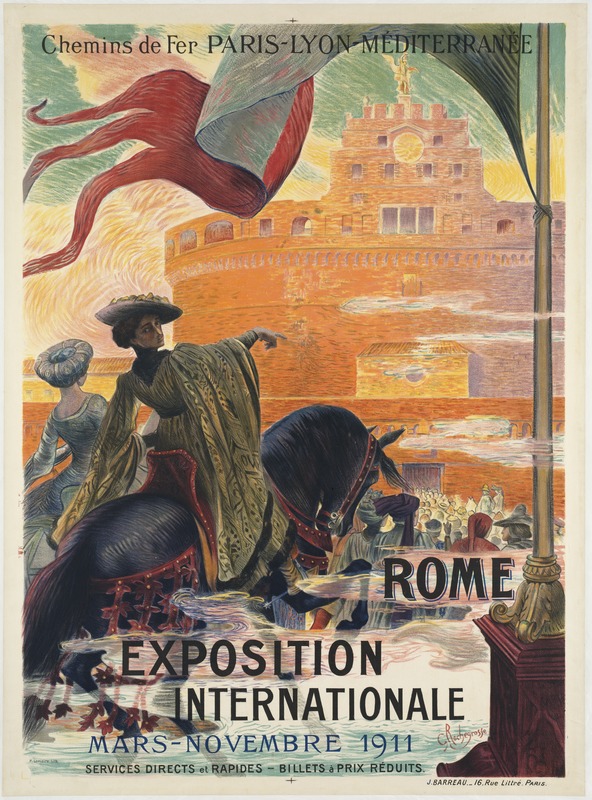
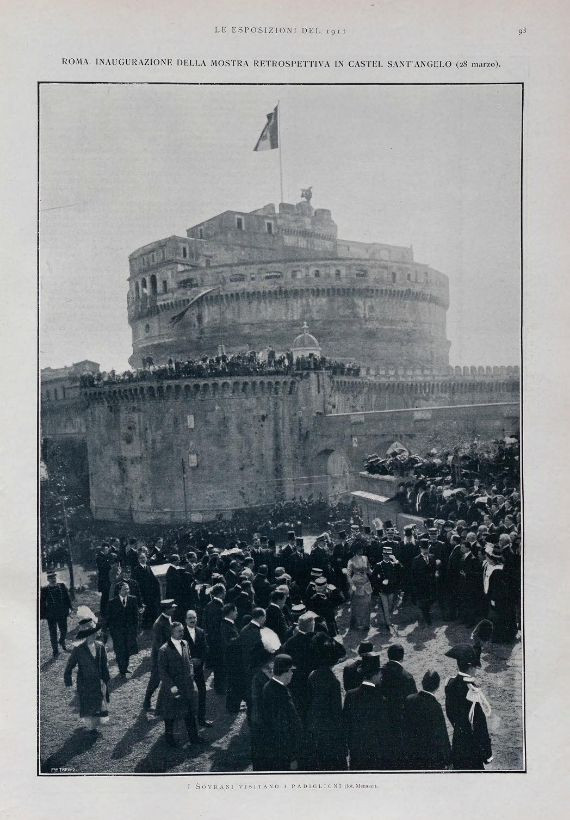
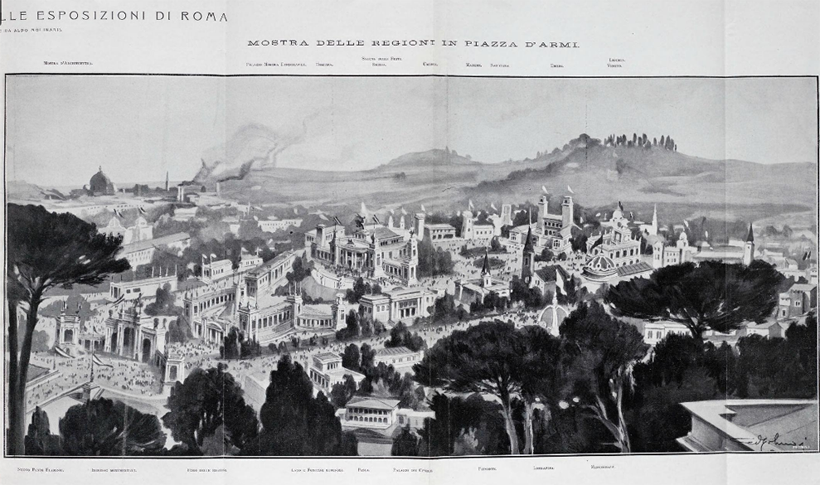
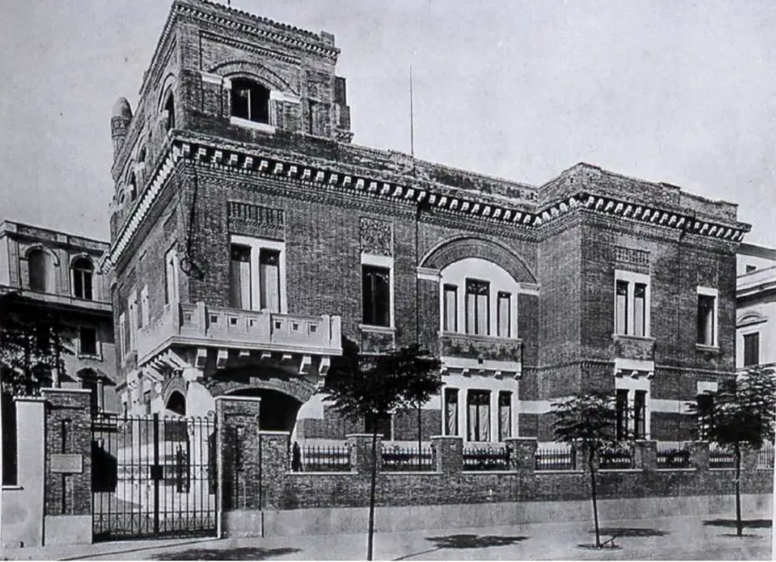
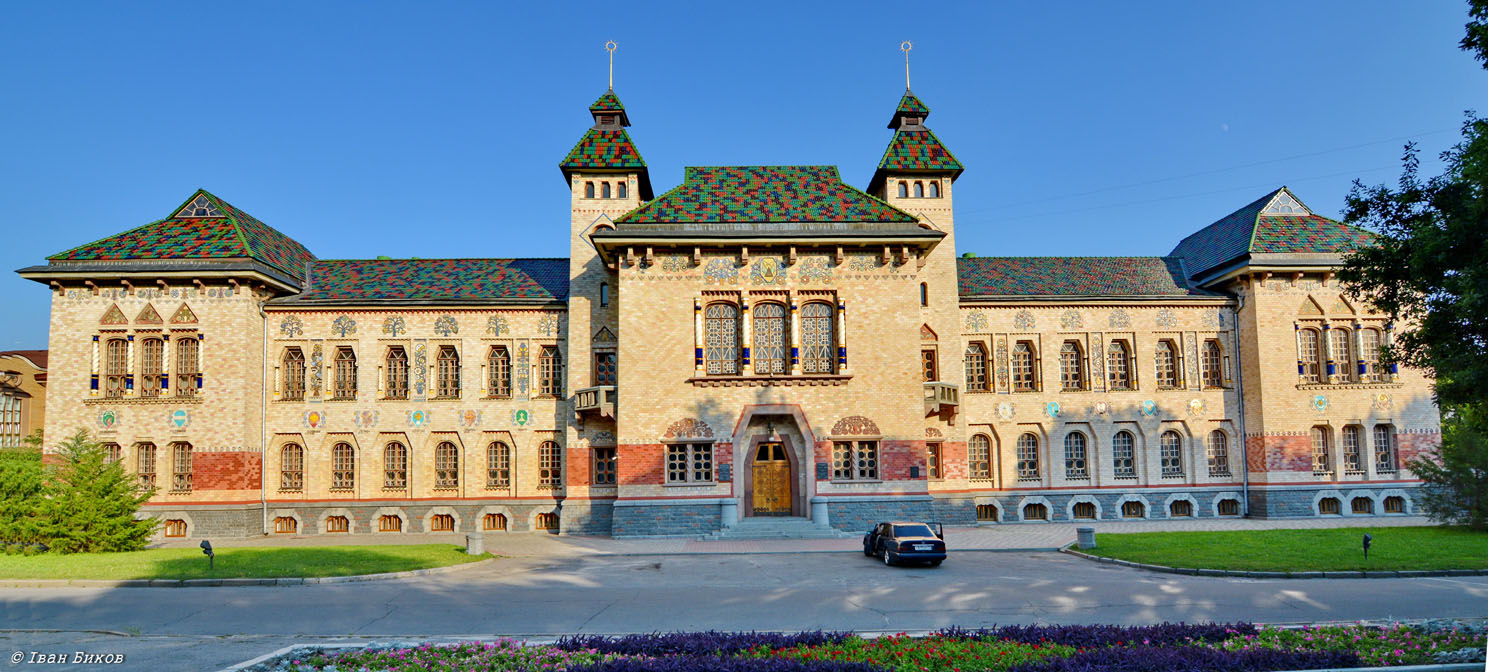
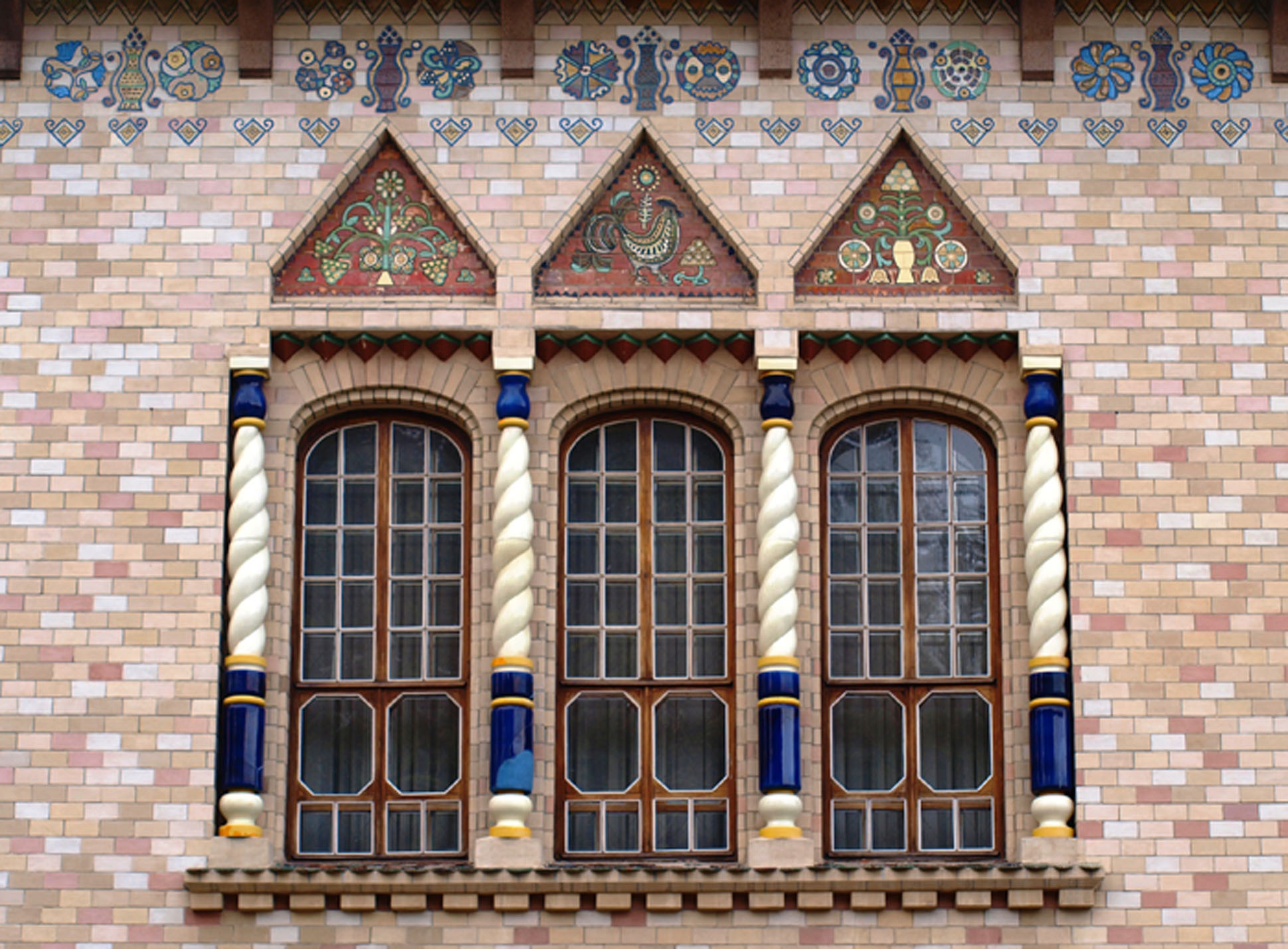
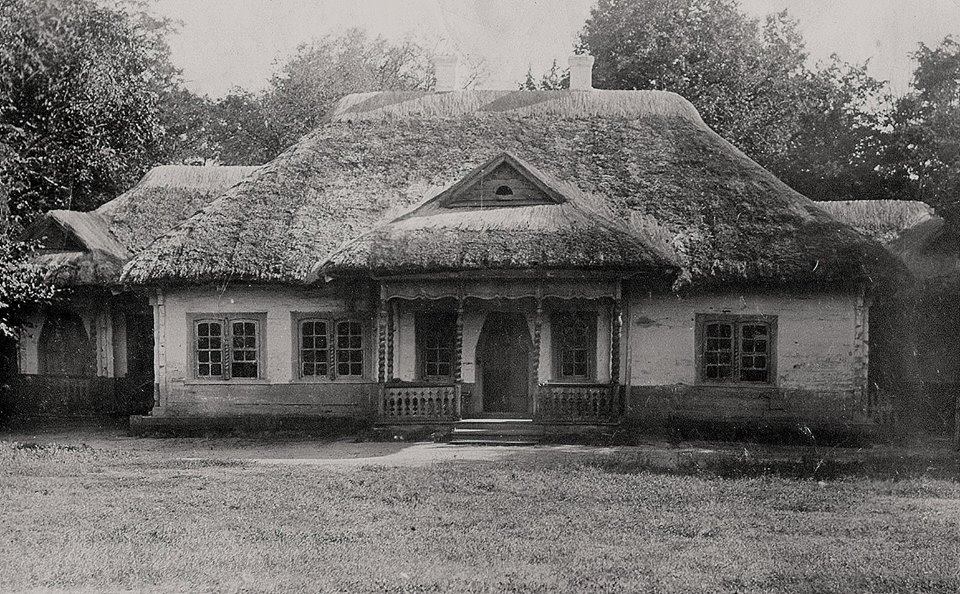
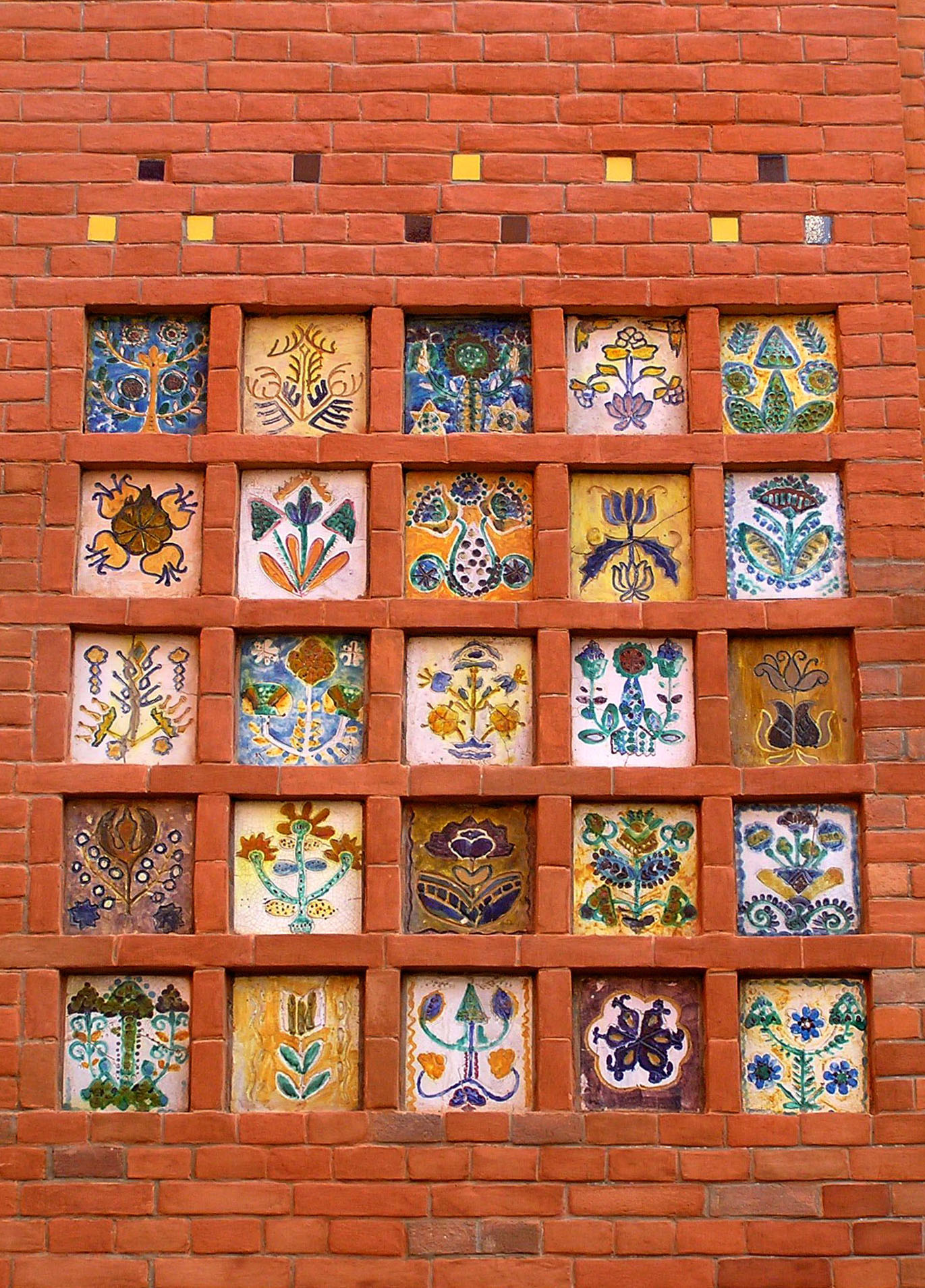
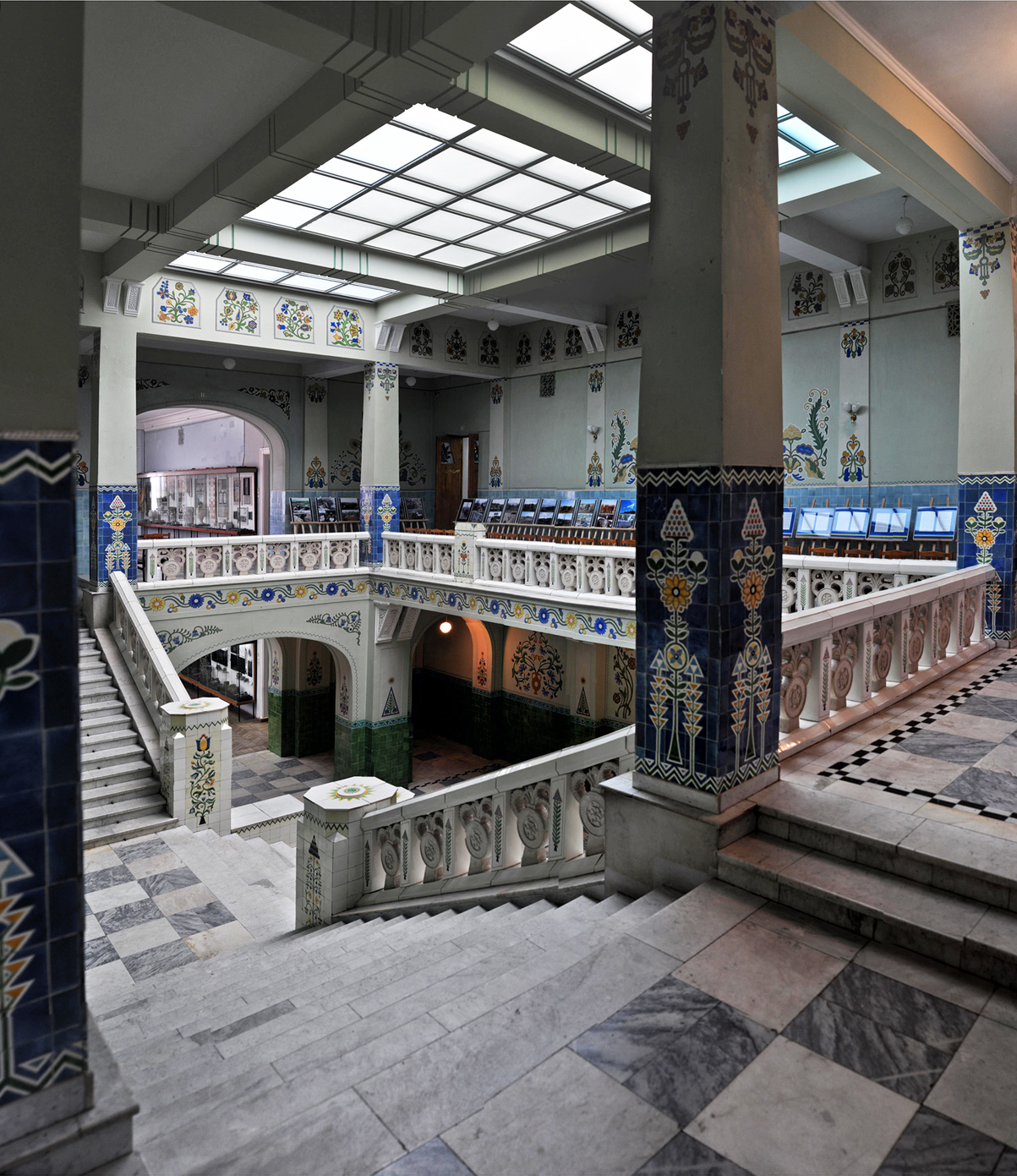
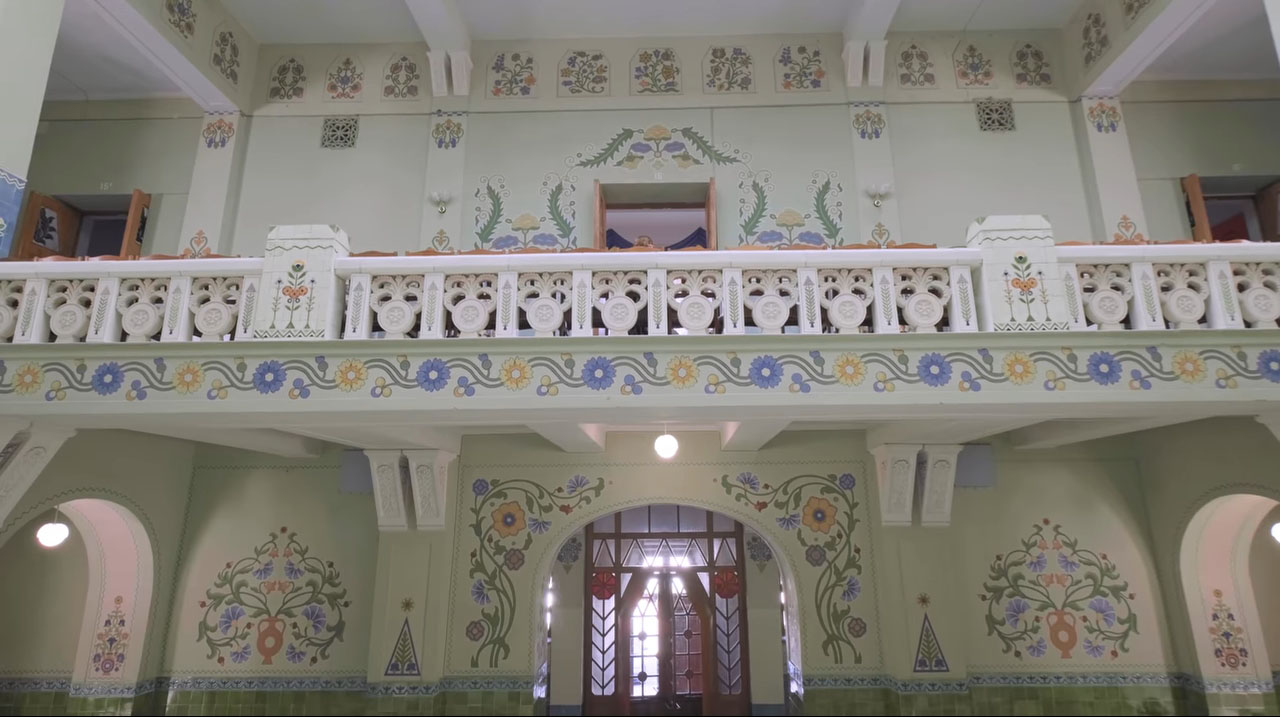
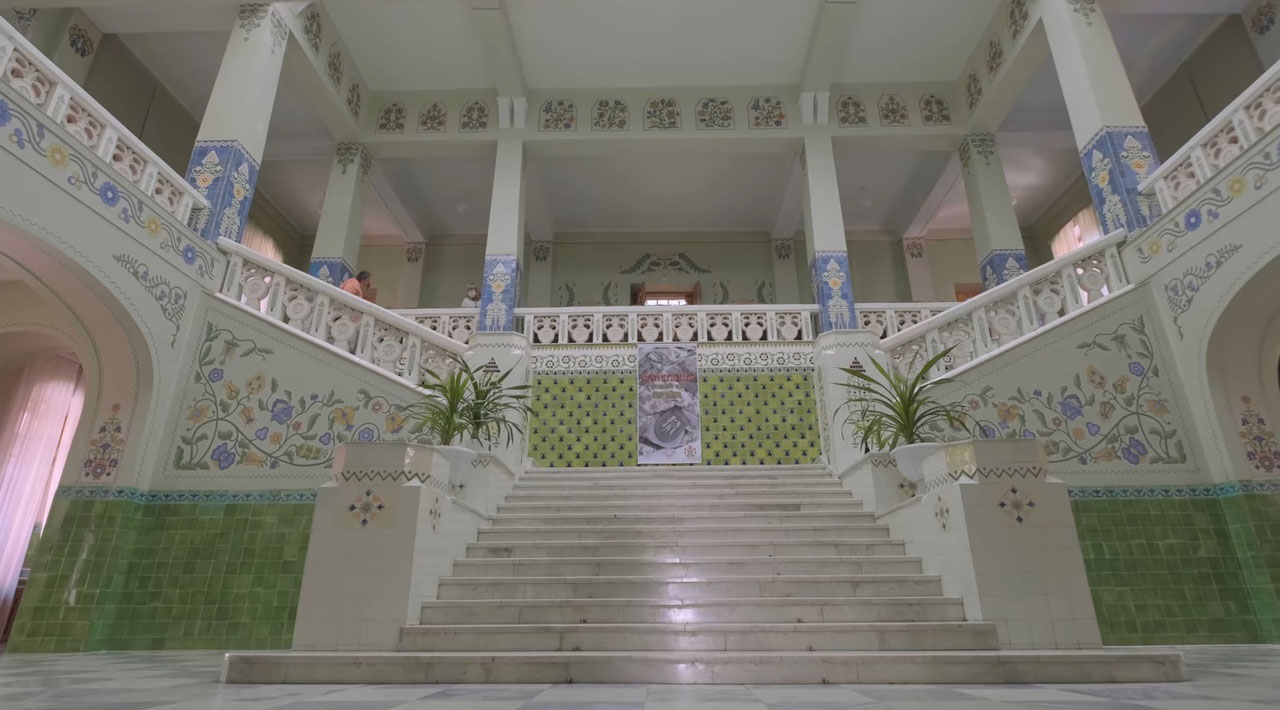
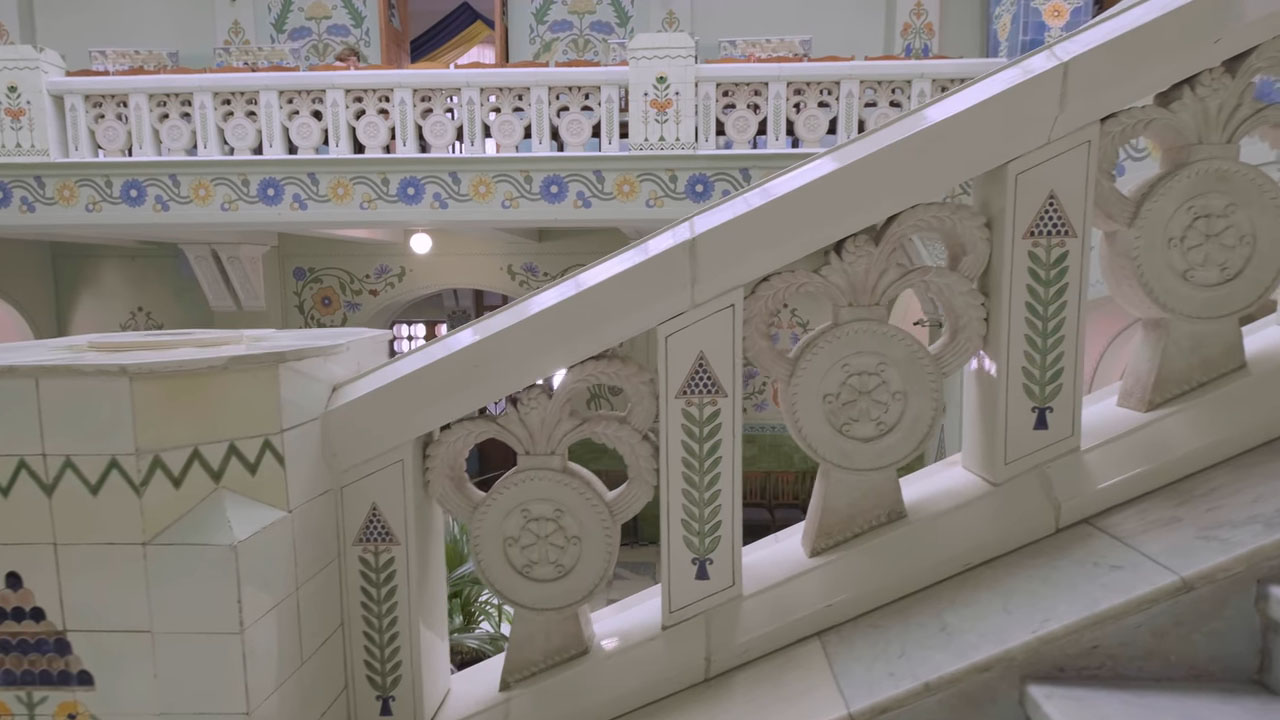
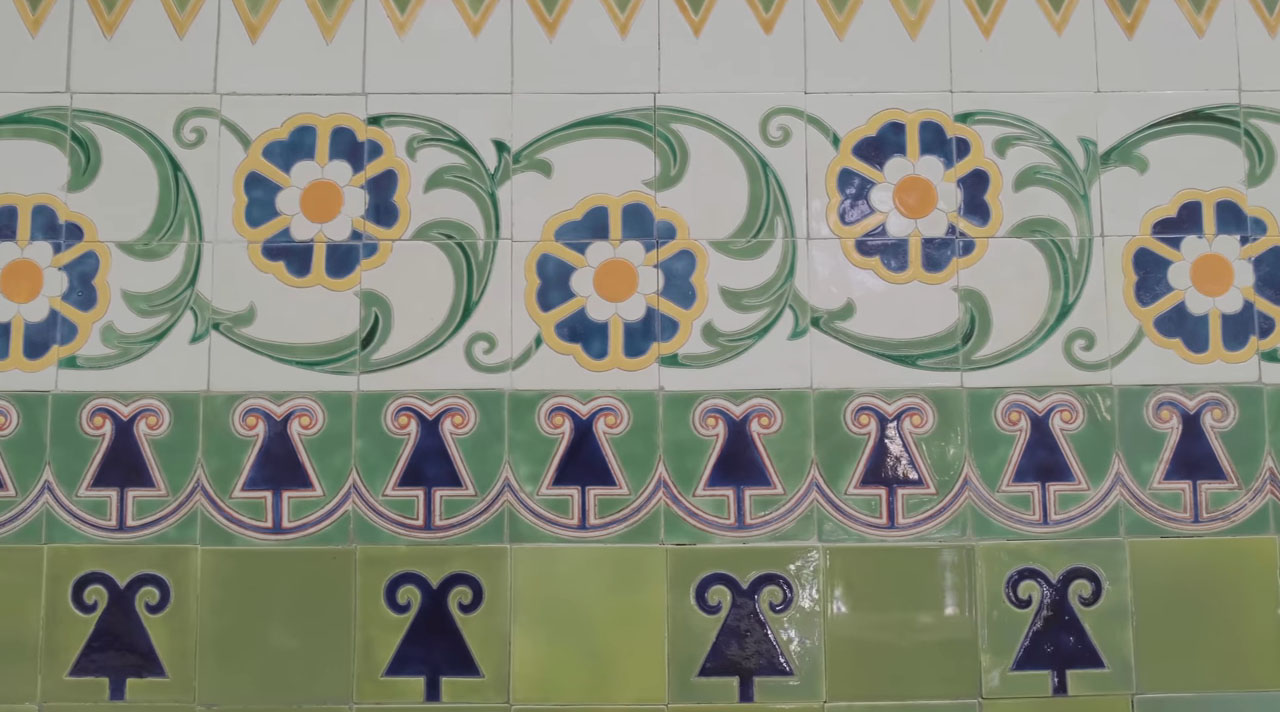
In 1911, Krychevskiy attended the grand International Arts Exhibition (Esposizione internazionale d'arte) in Rome. The exhibition was dedicated to the 50th anniversary of Italy’s Unification and showcased the country’s entire art history – from ancient to modern times, as well as the artistic achievements of other countries. Krychevskiy was particularly interested in the International Architectural Exhibition, with the modern home (Casa Moderna) as its central theme. At the time, the 38-year-old Krychevskiy was already celebrated as an innovative architect. His first solo work was so impressive that it became his most famous. It’s the house of the Poltava Province Council (1903-1908), wherein Krychevskiy laid the foundation for Ukrainian modernism in architecture. In its design he accumulated all his knowledge of national architectonics and decor, having mastered interior design as well. The likely starting point for this creation was a legendary house of the well-known patron Hryhoriy Galagan, recreated in 1854 in the village of Lebedyntsi according to the Ukrainian aristocratic tradition in the architecture of 17th-18th centuries. ”This house has been erected to revitalise the legends about the lives of our ancestors in the memory of future generations”, reads the inscription on the ceiling beam of this house. In this way Krychevskiy restored the legacy of the national traditions of the elites and the common folk. Hexagonal doorways and windows and twisted columns draw their inspiration from the Galagan house. Painted roosters and lush flowers come from traditional murals. Polychrome tiles and majolica, barantsi and qumans (traditional ceramic ware) were ordered by Krychevskiy himself from folk artisans from the nearby village of Opishnya. Today this building houses the Vasyl Krychevskiy Poltava Ethnographic Museum.
Krychevskiy was to receive the title of architectural academician for building the Poltava Province Council House; prominent Kyiv architect Leontiy Benois offered to submit all the required documents on his behalf. However, the lack of time and money compelled Krychevskiy to decline the offer.
Scandic Imatran Valtionhotelli, Torkkelinkatu 2, Imatra, Finland
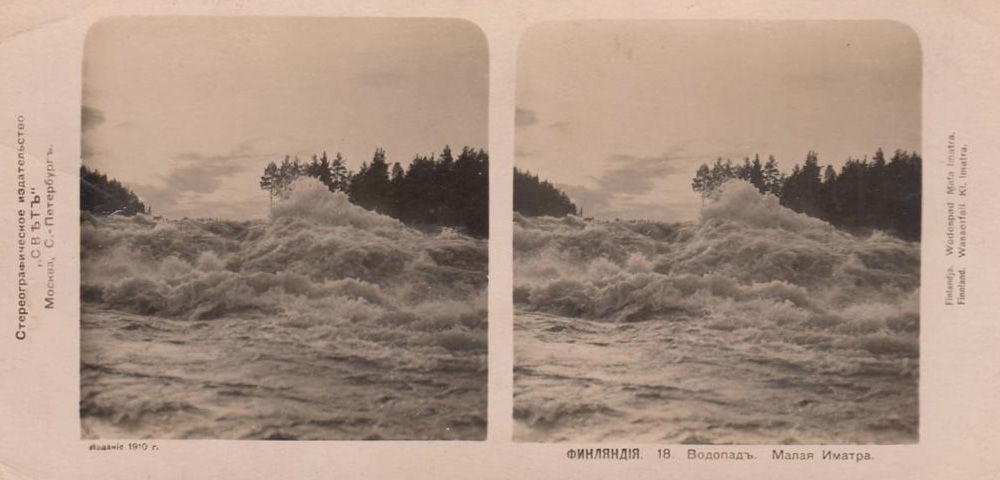
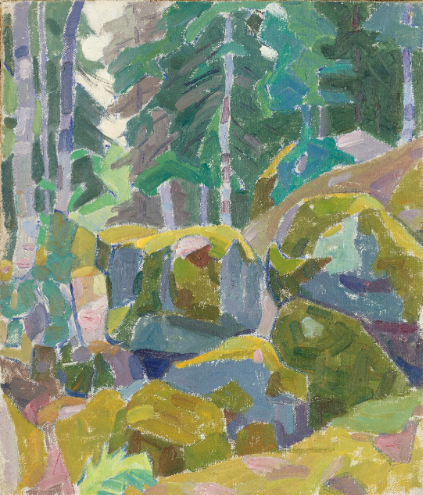
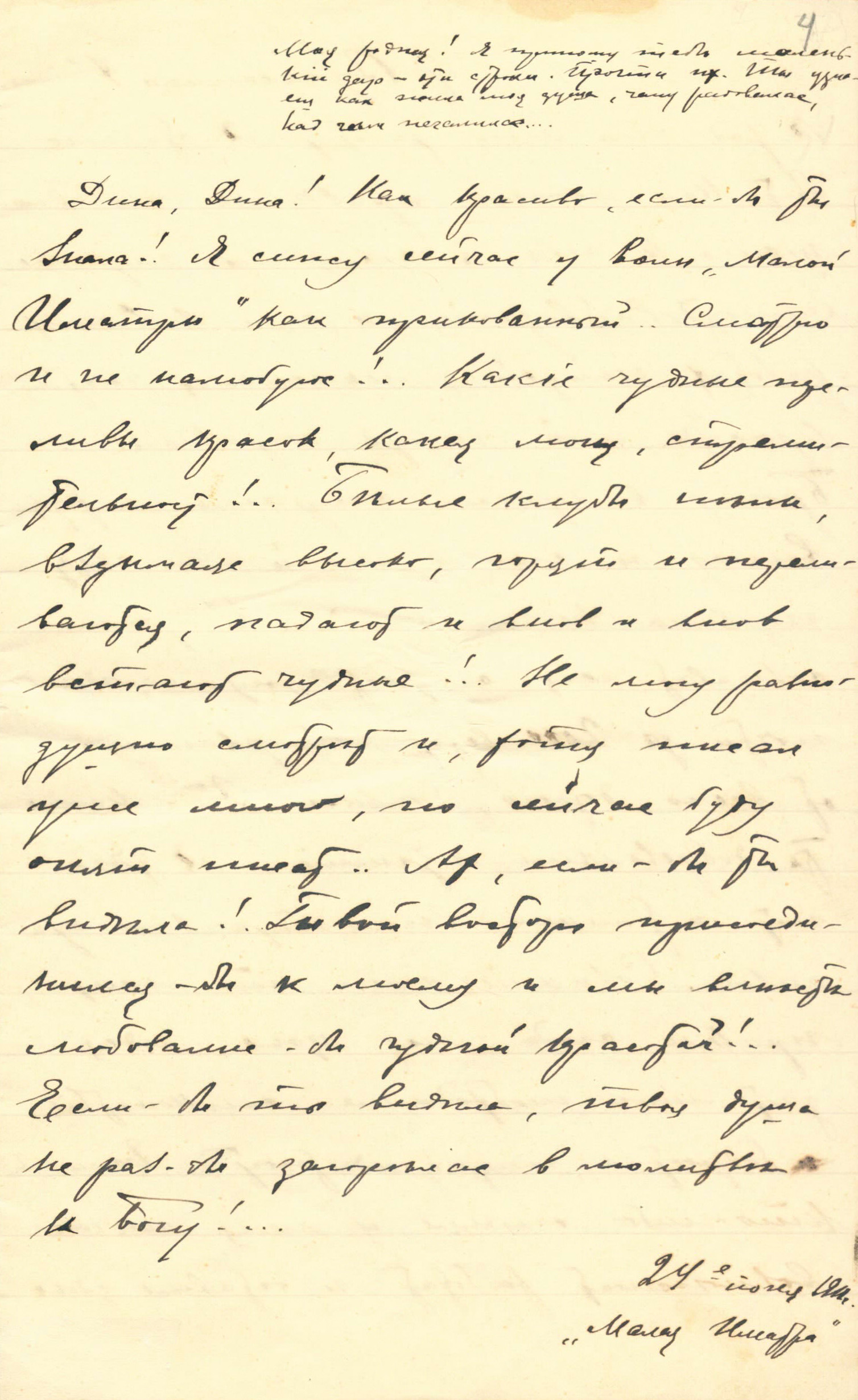
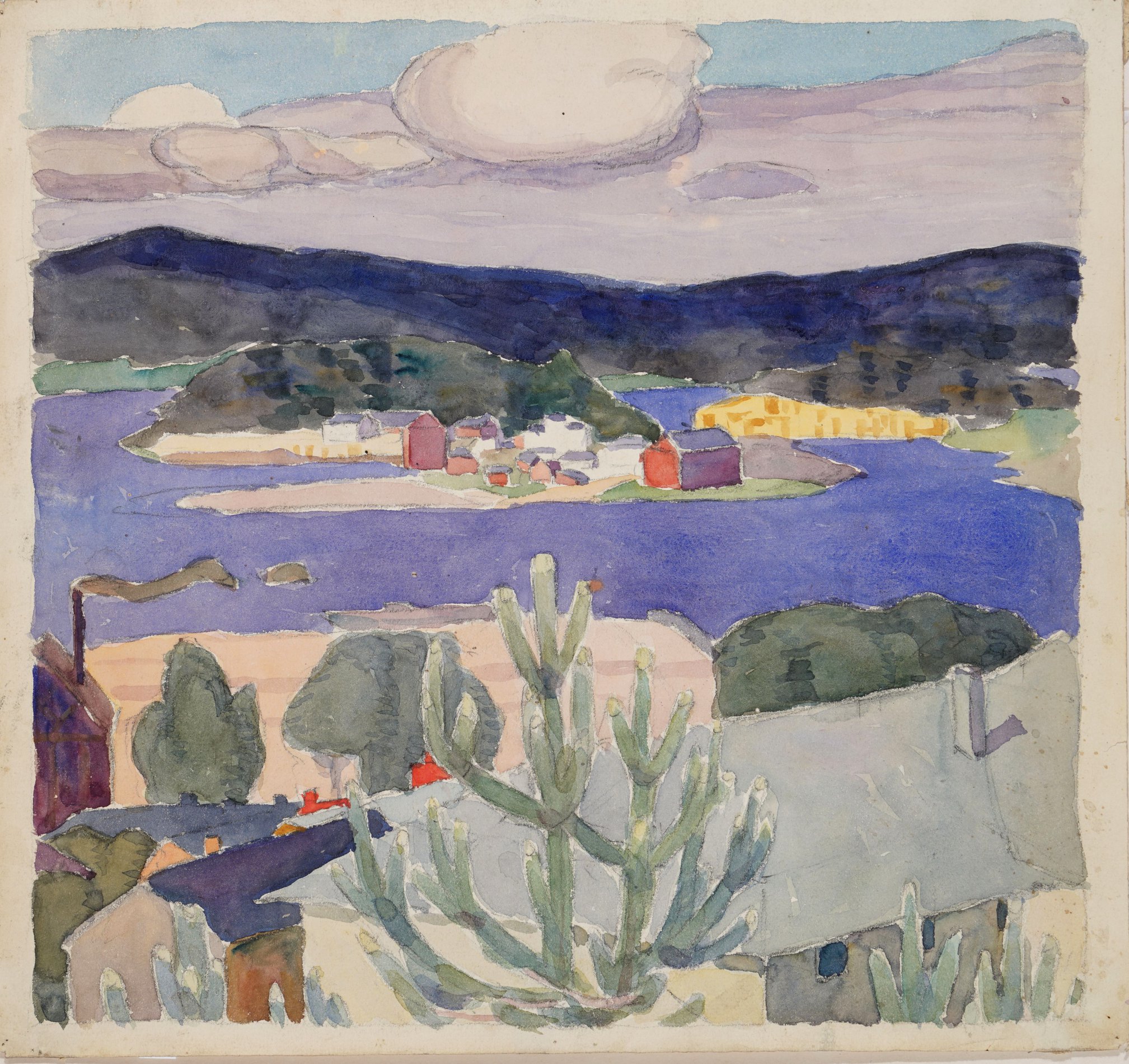
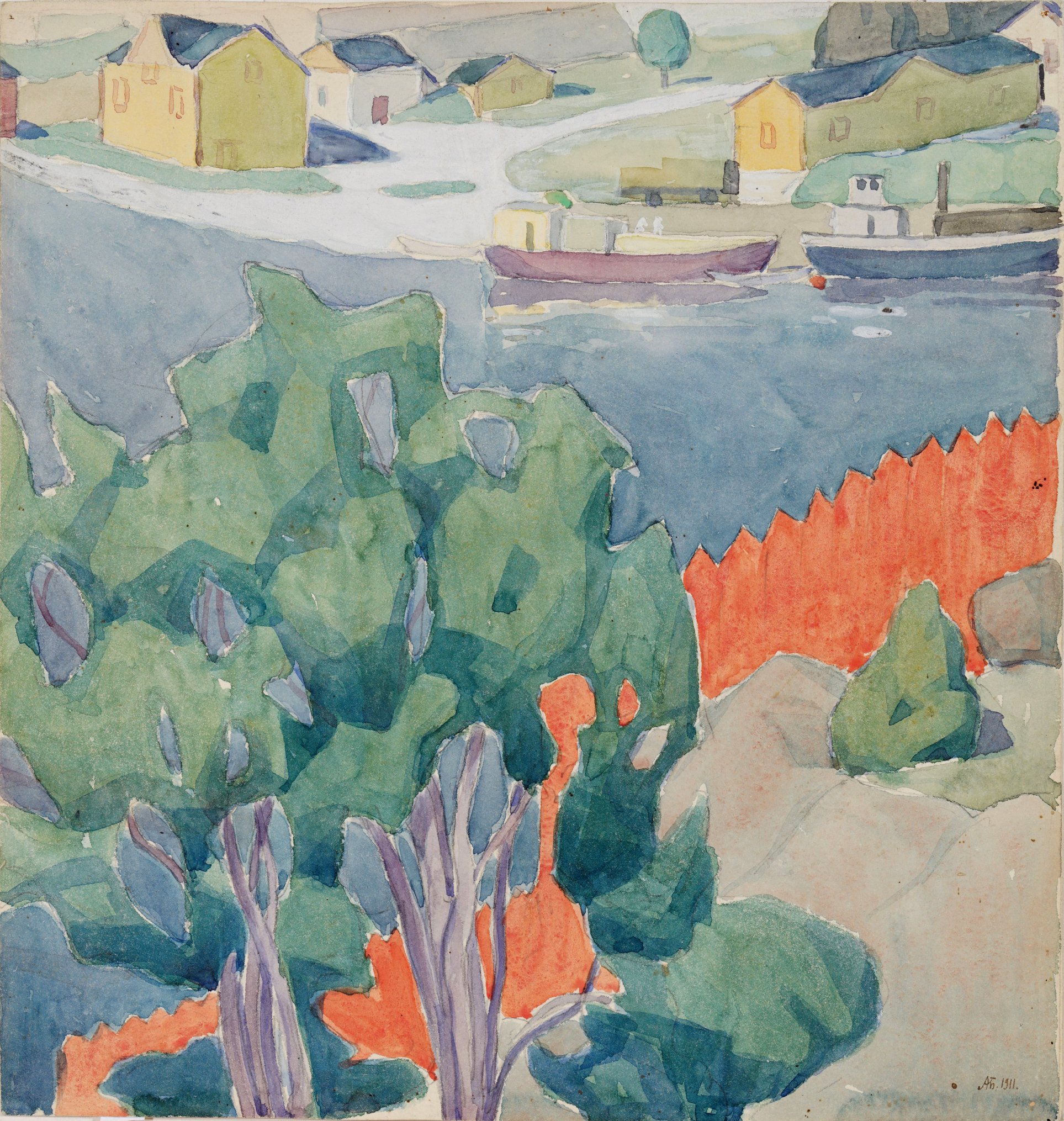
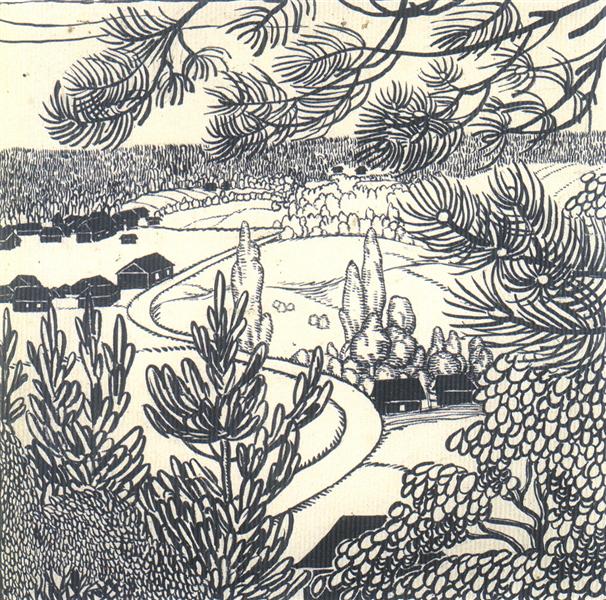
In the summer of 1911, Oleksandr Bohomazov travelled between well-known resorts in the Principality of Finland during a business trip on behalf of the Kyivska Dumka newspaper. He discovered Nordic modernism with its crude granite slabs, local flora and fauna, and national folklore characters. This is how The Tower painting appears, portraying the exterior of Valtionhotelli, a famous hotel in Imatra.
In general, the artist covered a tourist route popular among wealthy Russians of the time: Imatra with its rapids and waterfalls, rolling and winding ridges in Punkaharju (currently Lappeenranta), and the fortress city of Nyslott (currently Savonlinna). All these locations were within the water system of beautiful Saimaa Lake in eastern Finland. “Dina, Dina! How beautiful it is, I wish you could see it! I am now sitting next to the waves of Little Imatra and cannot leave… I am admiring it and cannot get enough of it: these wonderful pearly colours, power, and speed! White tufts of foam rising high above burn and sparkle, fall and come back again as if charmed!”, this is what Bohomazov wrote excitedly to his bride Vanda Monastyrska on 24 June 1911.
The Finnish landscape reflects Bohomazov’s passion about modernism based on symbolic and romanticized images, the decorative quality of colour, and smooth lines.
Dr.-Lahmann-Park, Hermann-Hesse-Straße, Dresden, Germany
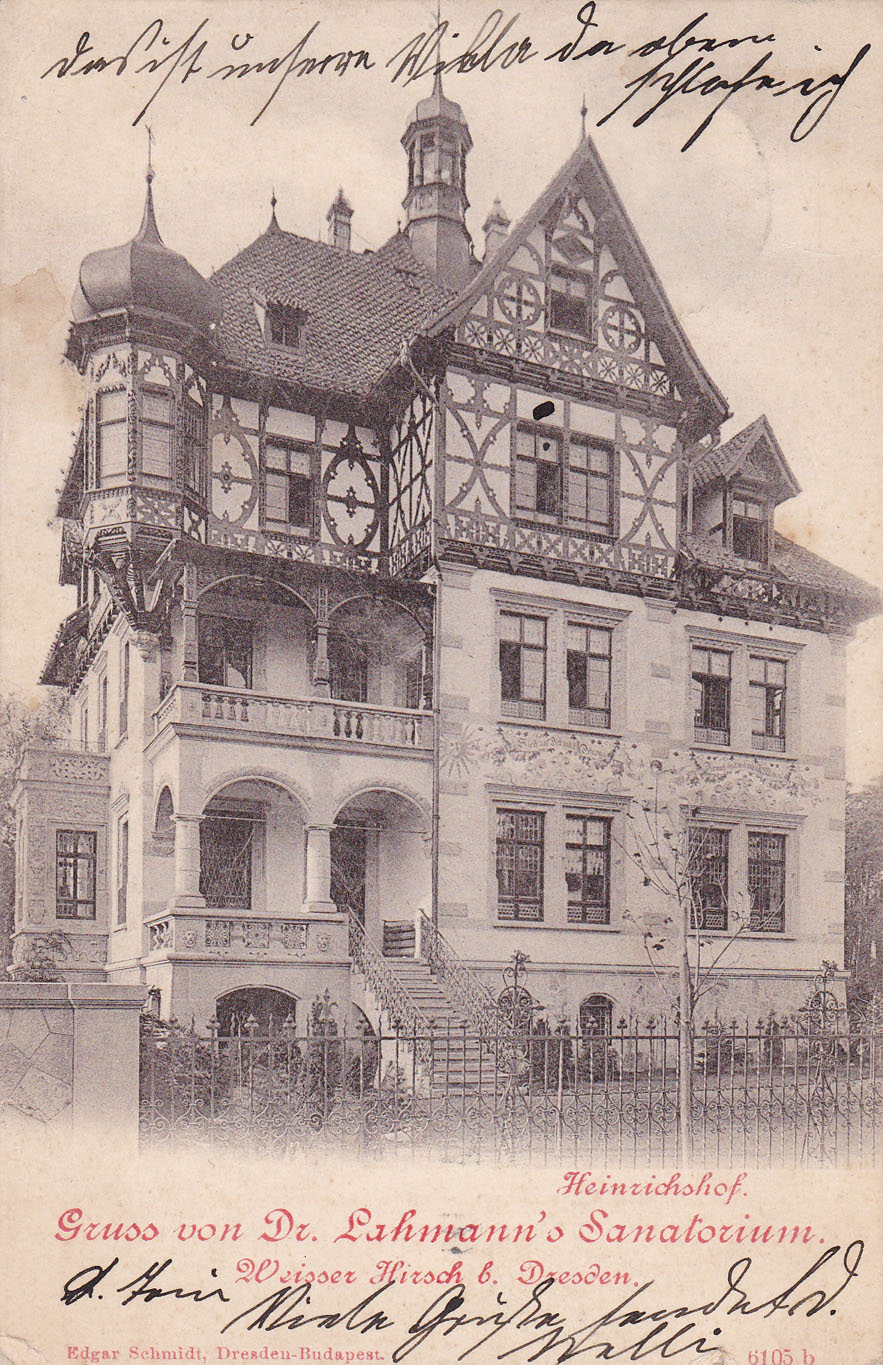
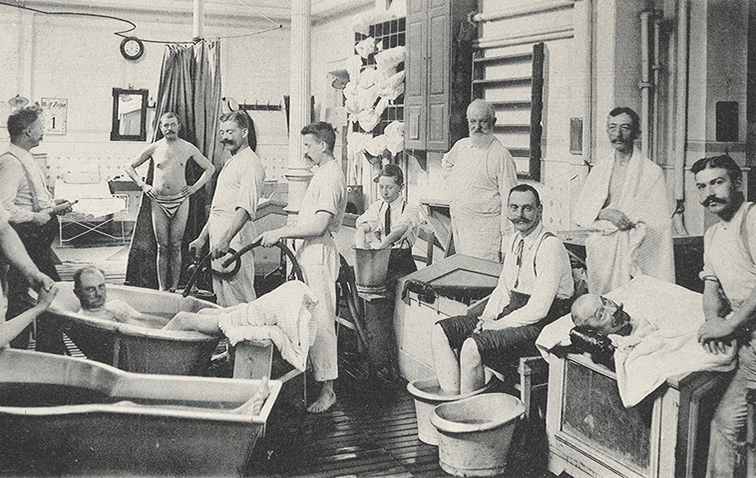
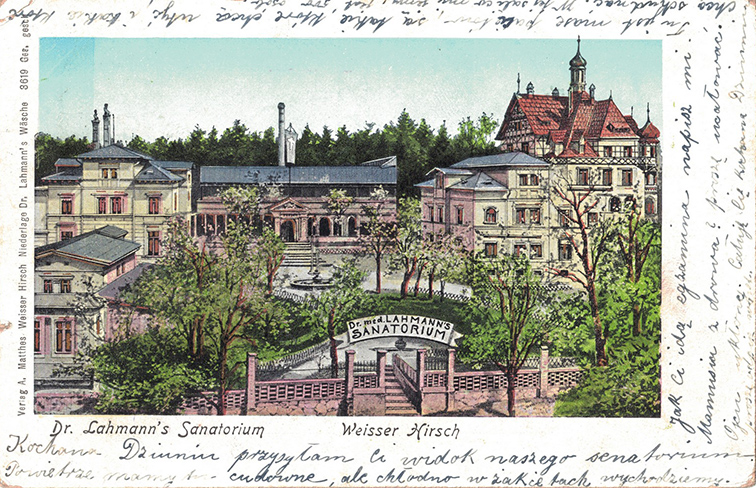
In the autumn of 1912 Vasyl Krychevskiy embarked on another journey abroad. The tour lasted for a month and was divided into two parts: health-related and art studies. At first, he travelled to the popular spa retreat of Doctor Lahmann, located in Weisser Hirsch near Dresden. At the resort where luminaries like Rainer Maria Rilke, Franz Kafka, and Thomas Mann had previously sought treatment, Krychevskiy takes mineral baths, aerotherapy, and engages in physical exercise.
When he is joined by his future wife Yevhenia Pavlovska (1882-1964), the couple travels to Dresden, Munich, Nuremberg, Berlin, and on their way home, makes a stop in Warsaw. Visiting these cities, museums and exhibitions, Krychevskiy creates a series of sketches and drawings and takes photos with a camera bought during this trip. He also takes home a large assortment of new art publications. An ardent collector, the artist also acquires pieces of German ceramics and glassware. The latter resulted in a humorous situation at the border: customs officers couldn’t understand why an artist would bring home so many objects of varying quality instead of a proper set of dishes.
Thus Krychevskiy, now more mature, concludes his personal acquaintance with the art and architecture of Western Europe. An acquaintanceship that began in the summer of 1911 with a tour across Rome, Florence, Ravenna, Venice and Vienna. The Byzantine mosaics which influenced the arts of the Kievan Rus, and original works by Italian masters undoubtedly made a great impression on him. However, according to the artist’s stepson and biographer Vadym Pavlovskiy, this trip ”did not have an immediate effect on Krychevskiy’s artistic practice”. He already was a full-fledged master.
Botanical Gardens of Peter the Great, Professora Popova Street, Saint Petersburg, Russia
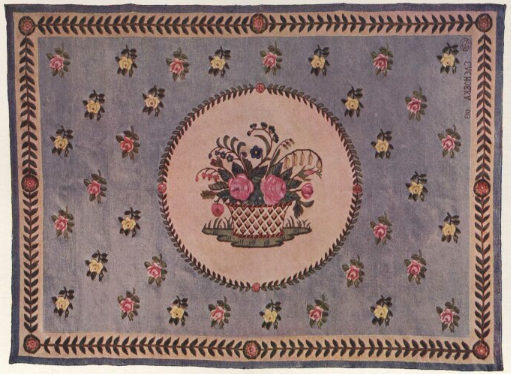
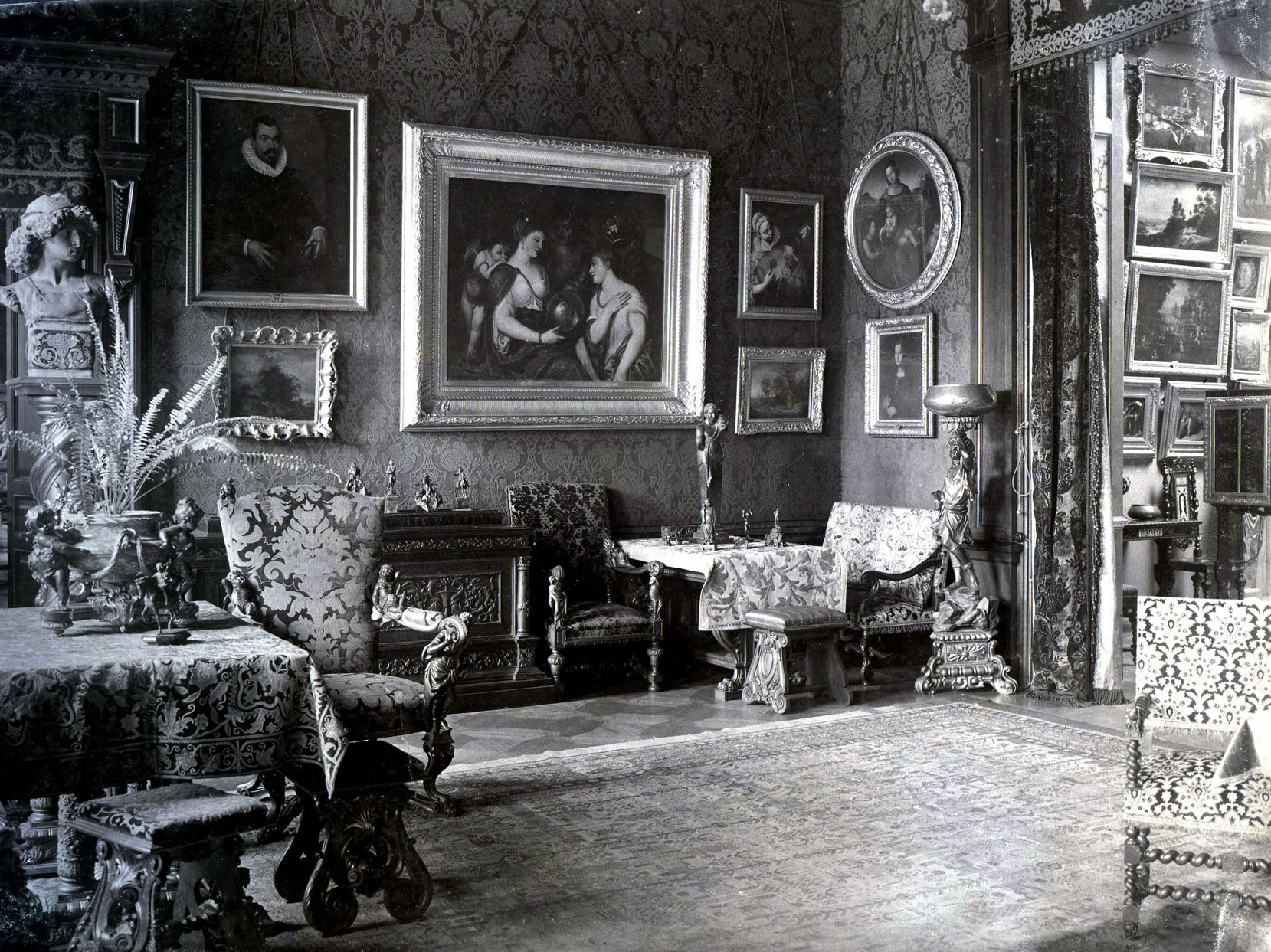
In March 1913, the Russian capital hosted the 2nd All-Russia Artisanal Exhibition, an important event in the promotion of local crafts. The exhibition included works from a carpet and woodblock workshop from the village of Olenivka in the Kyiv province managed by Vasyl Krychevskiy. The workshop was owned and financed by Varvara Khanenko, a wealthy Kyiv collector who, together with her husband Bohdan, possessed a valuable collection of Western and Eastern art (now The Bohdan and Varvara Khanenko National Museum of the Arts in Kyiv). She pursued the then-popular trend among empire high society of owning folk crafts workshops. With the high demand for that kind of product, the artistic value of these goods received a boost from the involvement of serious artists.
Mrs. Khanenko commissioned Krychevskiy to create several sketches for carpets and woodblock patterns for the Russian exhibition. One of these – the tapestry Ilya Muromets, was purchased for a museum in Salt Town (a district in Petersburg). The workshop was awarded the gold medal of the exhibition for the works they presented. Yevhenia Krychevskiy writes in her memoirs that woodblock textiles for decorating interiors - curtains, draperies, furniture - were in particular demand there. The following year, the Olenivka workshop participated in exhibitions in Berlin and Paris. Business was going so well that Mrs. Khanenko opened a store in London.
Khreschatyk Street, 43, Kyiv, Ukraine
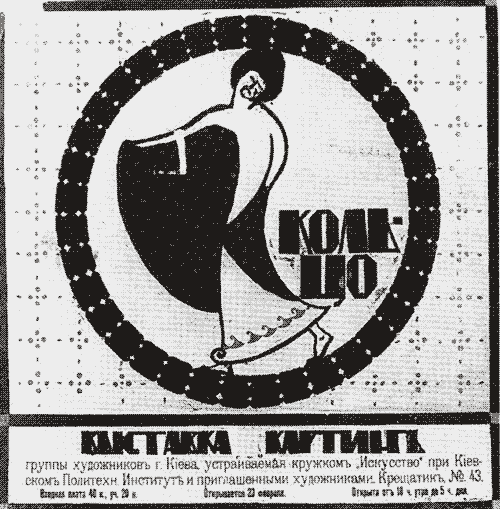
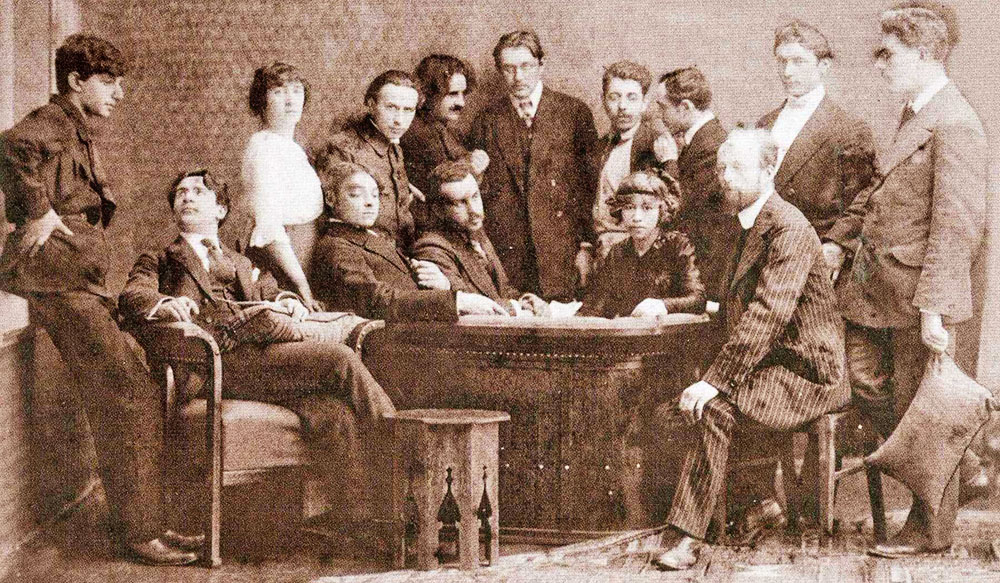
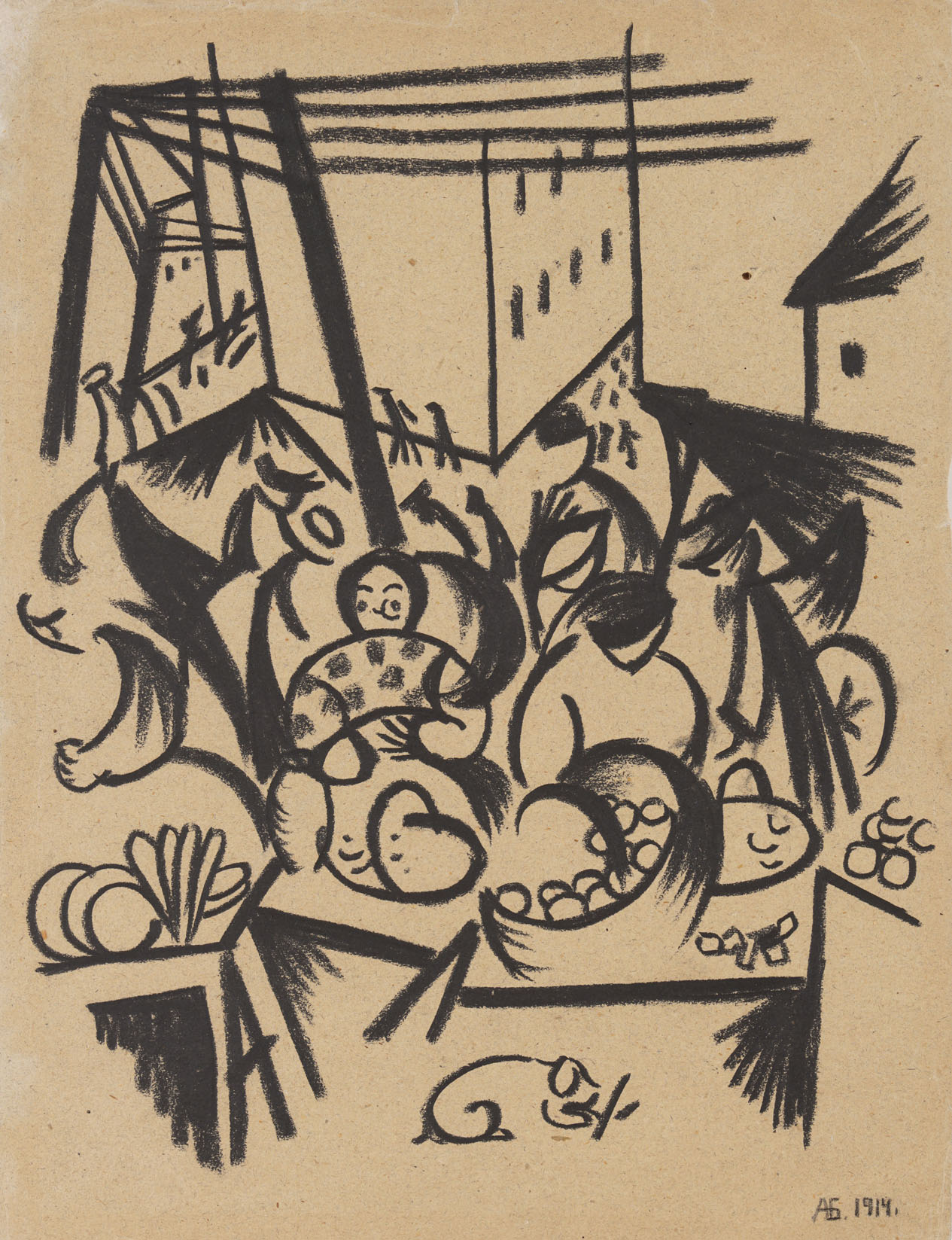
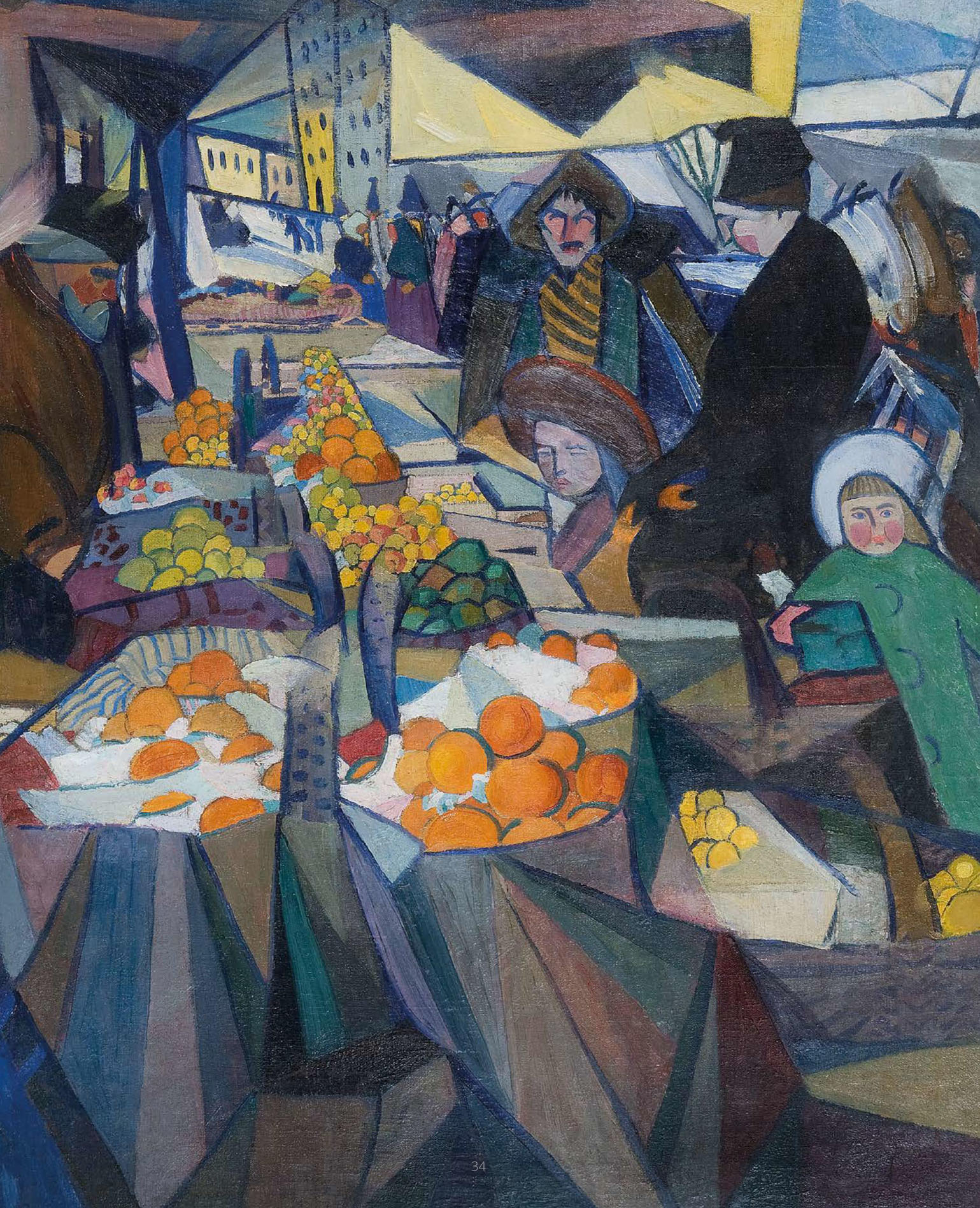
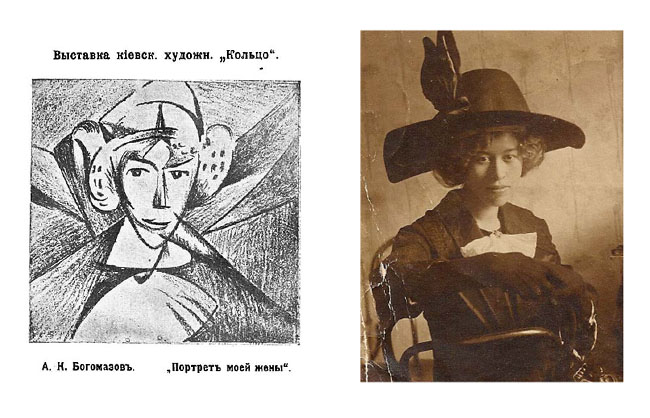
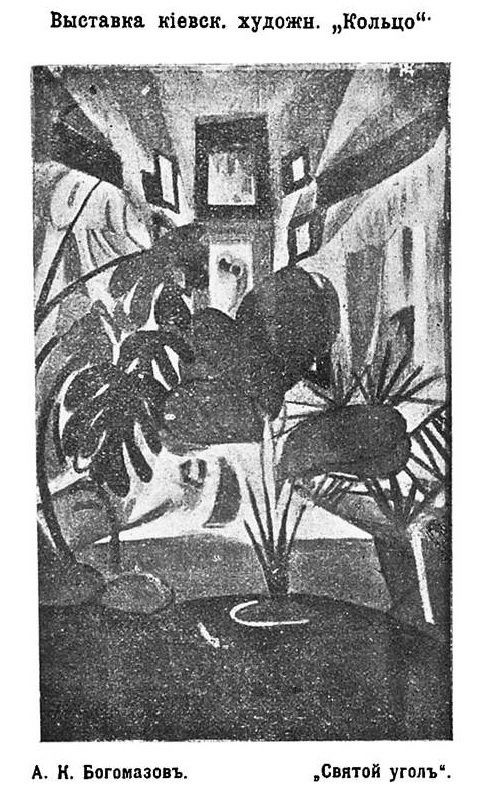
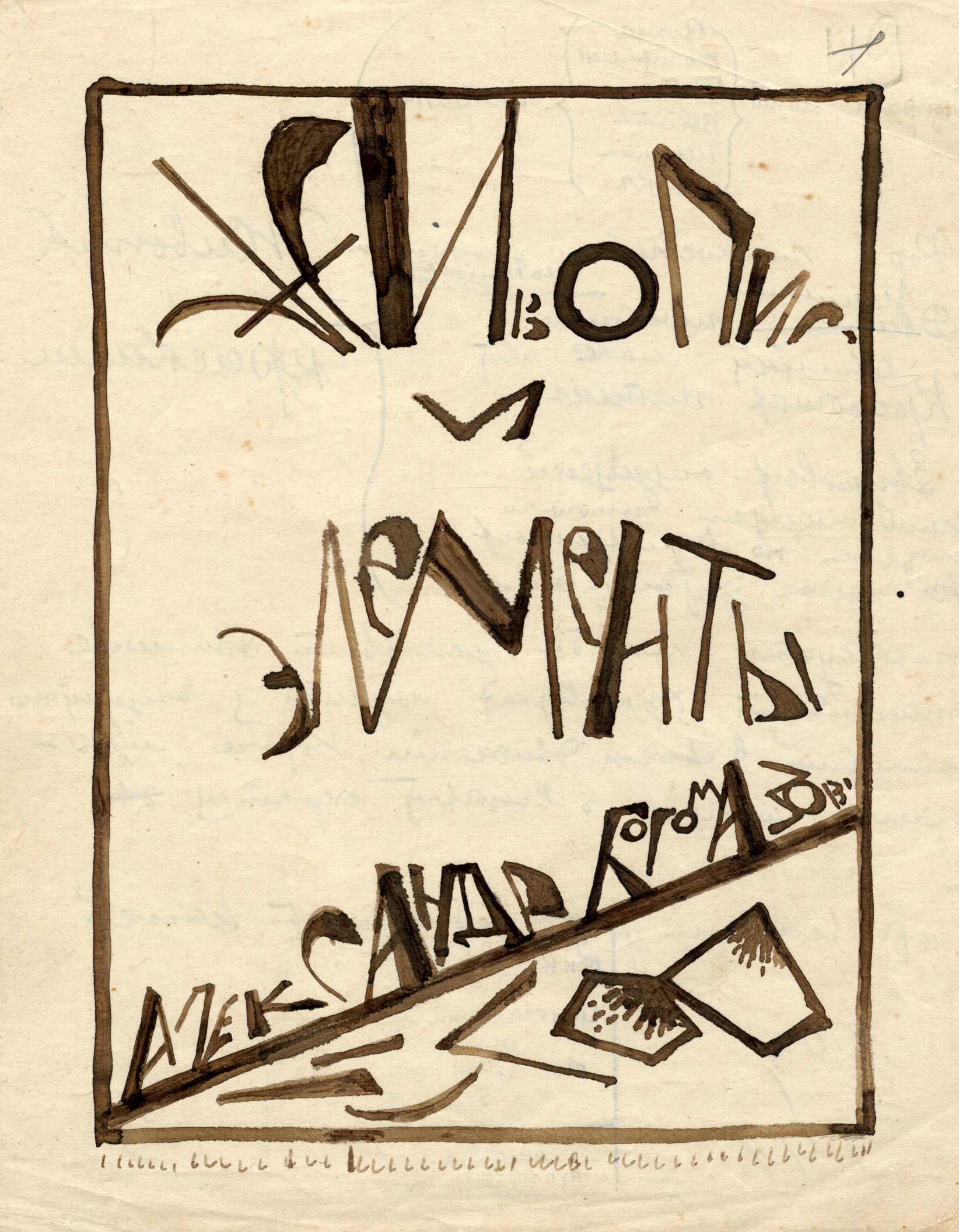
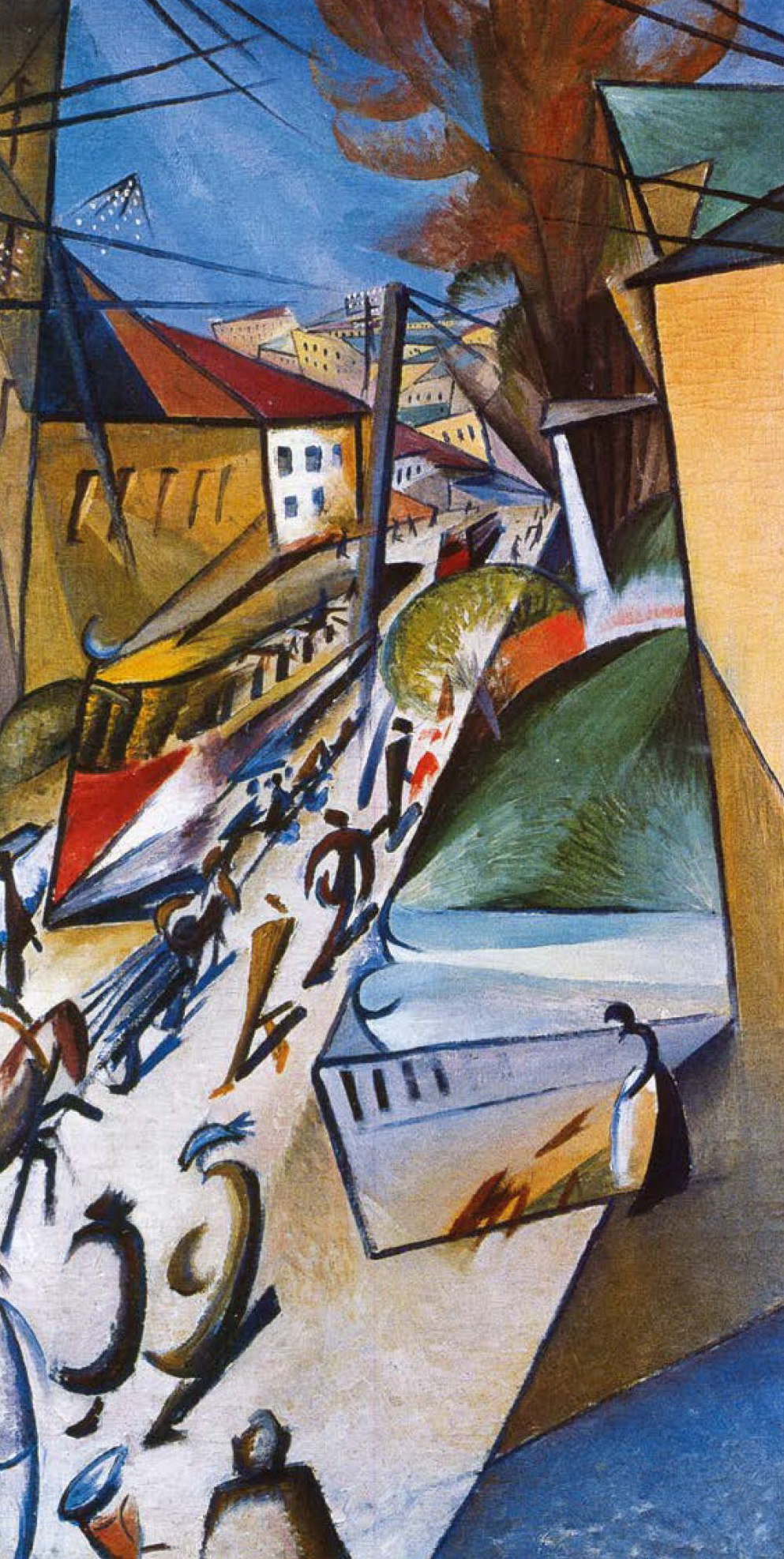
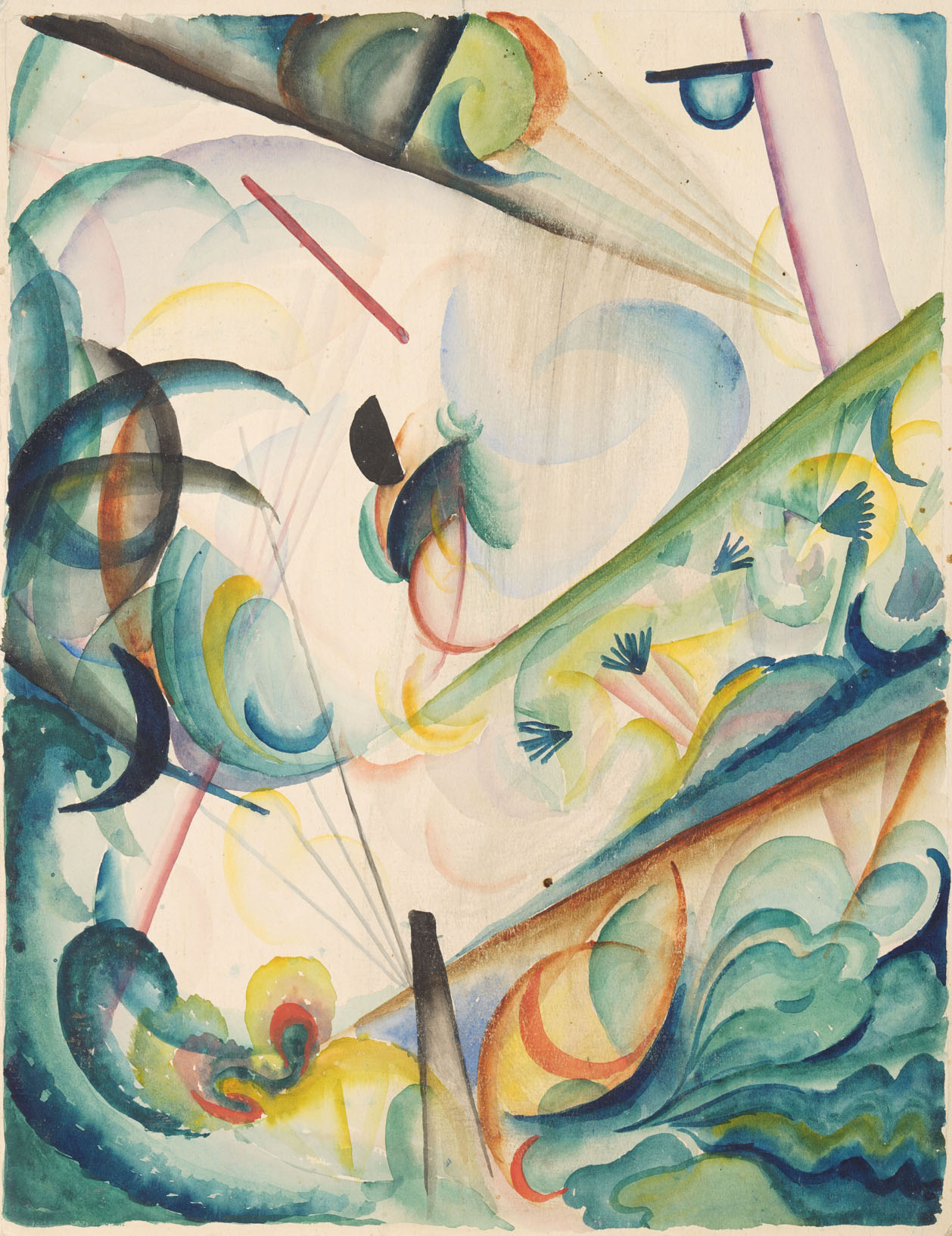
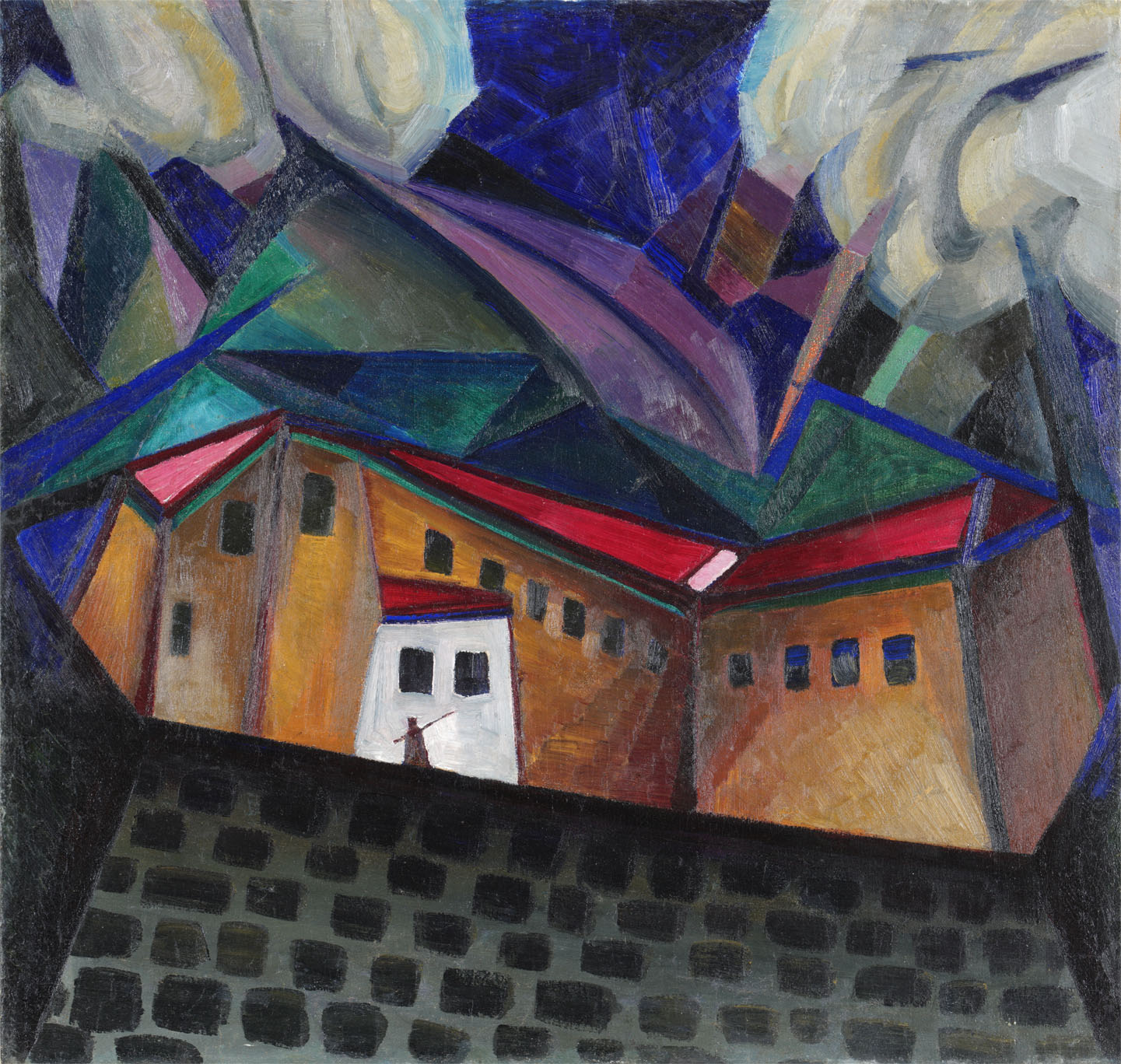
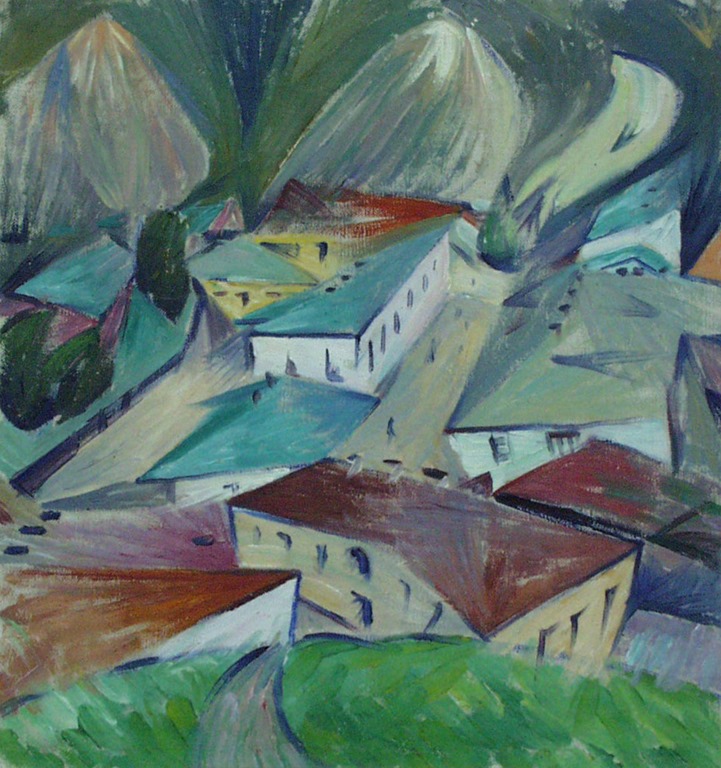
On 23 February 1914 what would become a famous exhibition--The Ring--opened in the centre of Kyiv where Bohomazov participated as both artist and avant-garde art scholar. The Ring group included Alexandra Exter, Oleksandr Bohomazov, Mykhaylo Denysov, Katerina Vasilyeva, Vanda Monastyrska-Bohomazova, and Christopher Knorr (Norway). At the exhibition, Bohomazov showcased 88 works, among them his brilliant cubofuturist paintings The Market, Wife’s Portrait, and Holy Nook. He also designed the catalog and wrote an introductory article and programme text--The Gist of Four Elements--which he would soon develop into a longform research article--Painting and Elements. “We applaud the artist’s inspiration to break the shell into which the academic tradition has put his creative personality,” said The Ring organizational committee, presenting publicly a description of four elements in which the work develops: line, shape, painting plane, and colour.
This time Bohomazov’s work was fully supported by the critics. Mykola Kulbin, a Russian art scholar and artist, named 34-year-old Bohomazov “a breakthrough”, which is “the main advantage of the exhibition”. And Kyiv art theoretician (later theatre director) Mykola Foregger even called his works “masterpieces”: “Bohomazov is showcased in the richest and the most prominent way as opposed to other artists. He is the most valuable among the Ring artists… One can see his love for new composition forms and the search for an integral expressive nature of a painting. In that vein, he does not go to extremes… His Holy Nook and The Market are masterpieces worthy of any contemporary art collection.”
That year, 1914, the artist created his signature cubofuturist painting Tramway. In 1986, when avant-garde researcher Jean Chauvelin saw the painting for the first time, he said, “I have travelled all over the Soviet Union observing leftist art, but this is the best thing I’ve ever seen!”
It was Kyiv that inspired the restless soul of Bohomazov. On the one hand, it is replete with quiet nooks. On the other, it is a place of rapid change and innovation. A good example is Kyiv’s electric tram, the first in the Russian Empire and one of the first in Eastern Europe. Bohomazov was interested in conveying this rhythm, tempo and dynamic on canvas. The rhythms of Kyiv buildings, windows, lights, passers-by and workers still vibrate on Bohomazov’s paintings produced in the late 1910s: Khreschatyk, The Locomotive, Prison, and Potters.
53 Movses Khorenatsi Street, Goris, Armenia
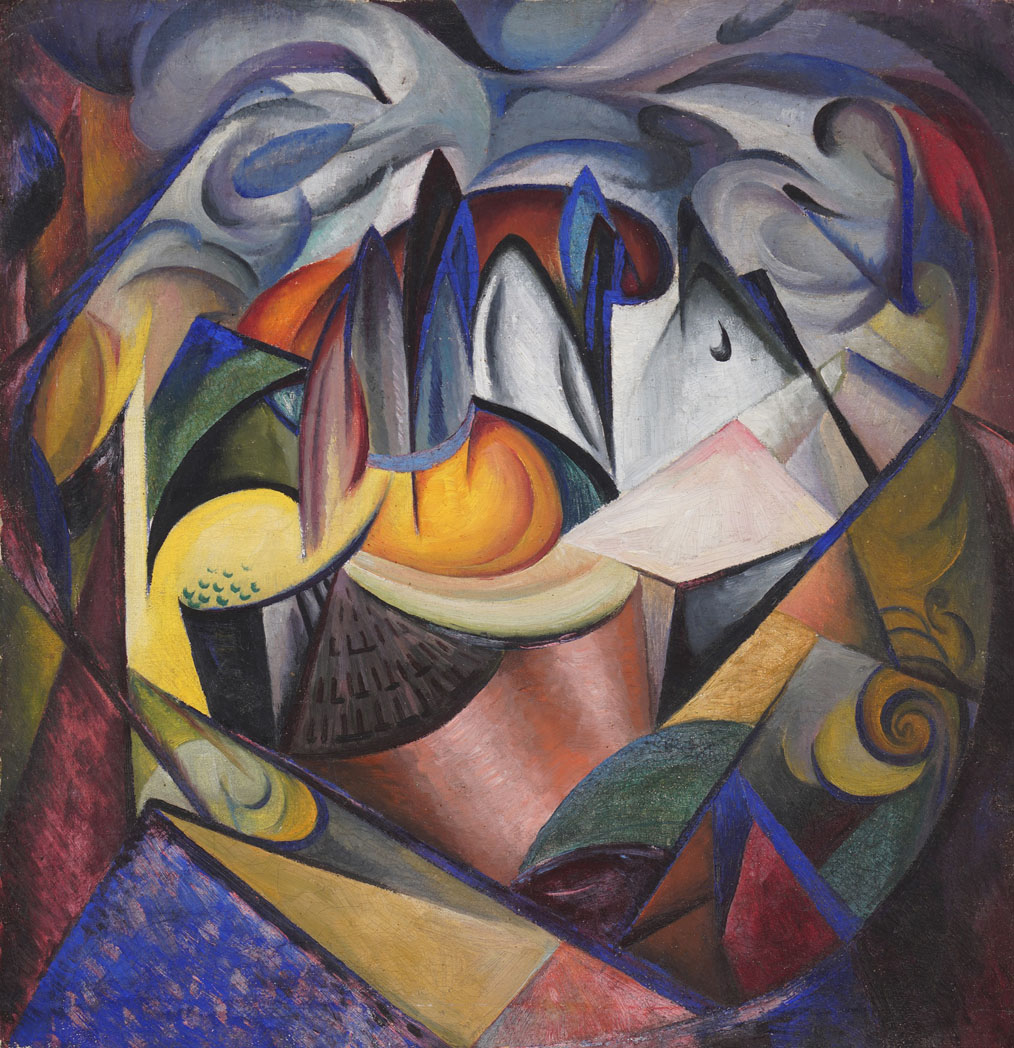
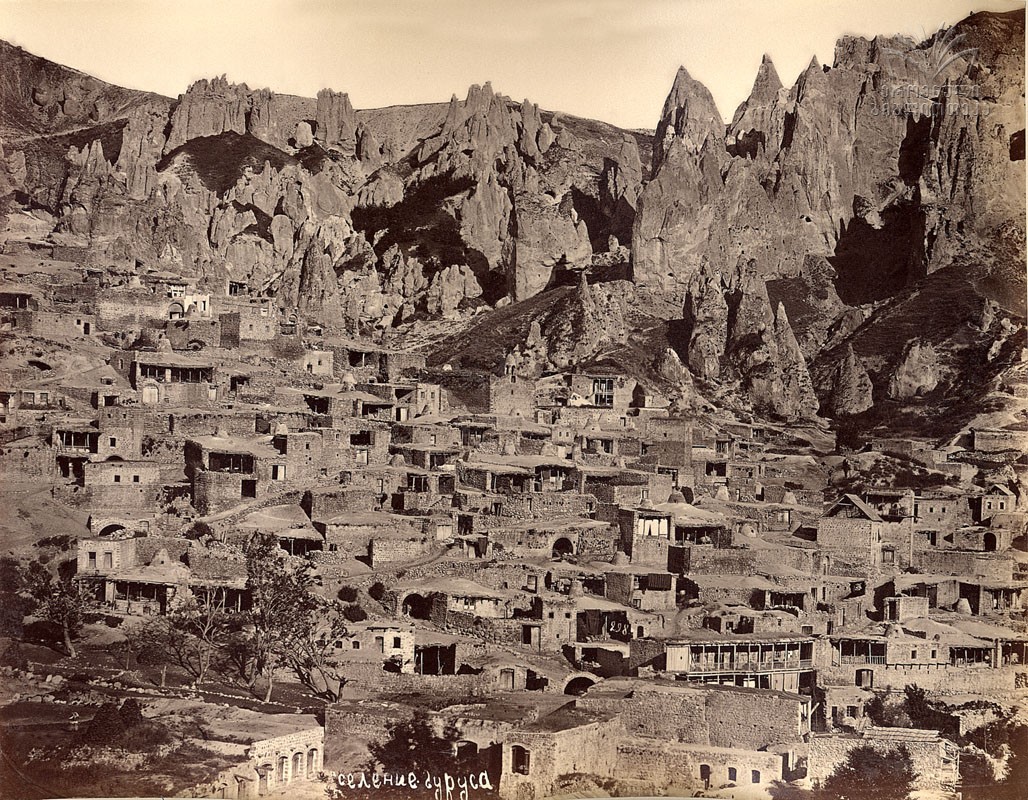

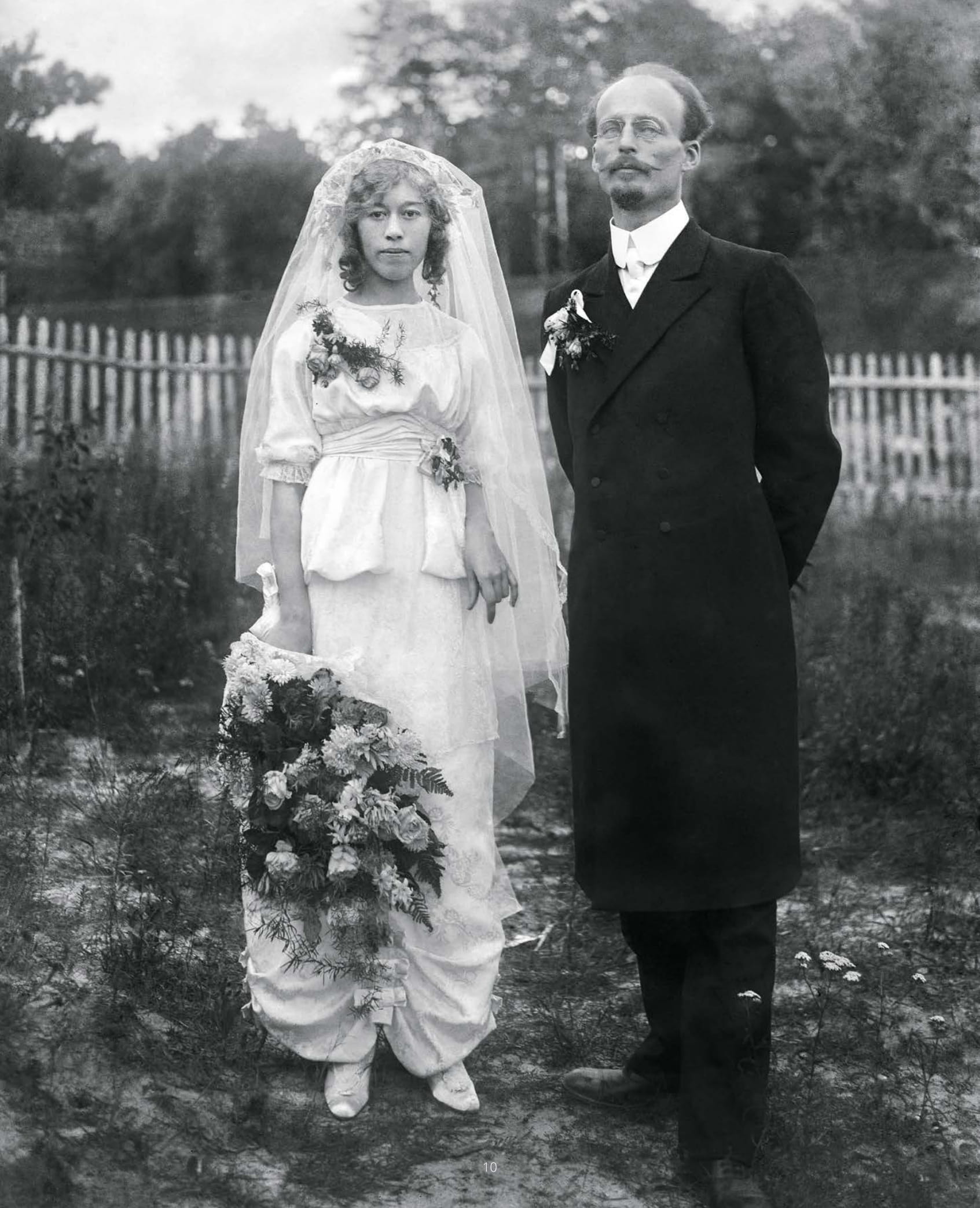
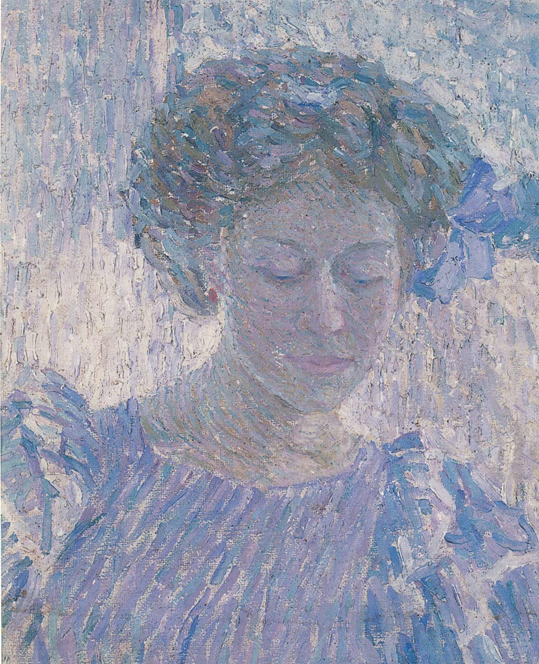
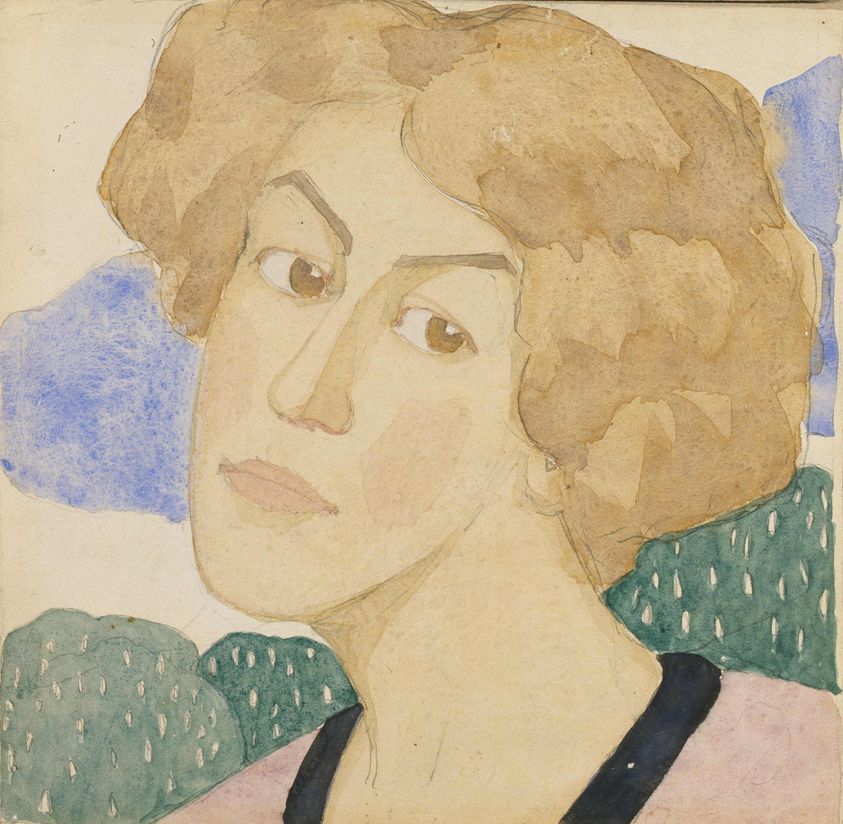
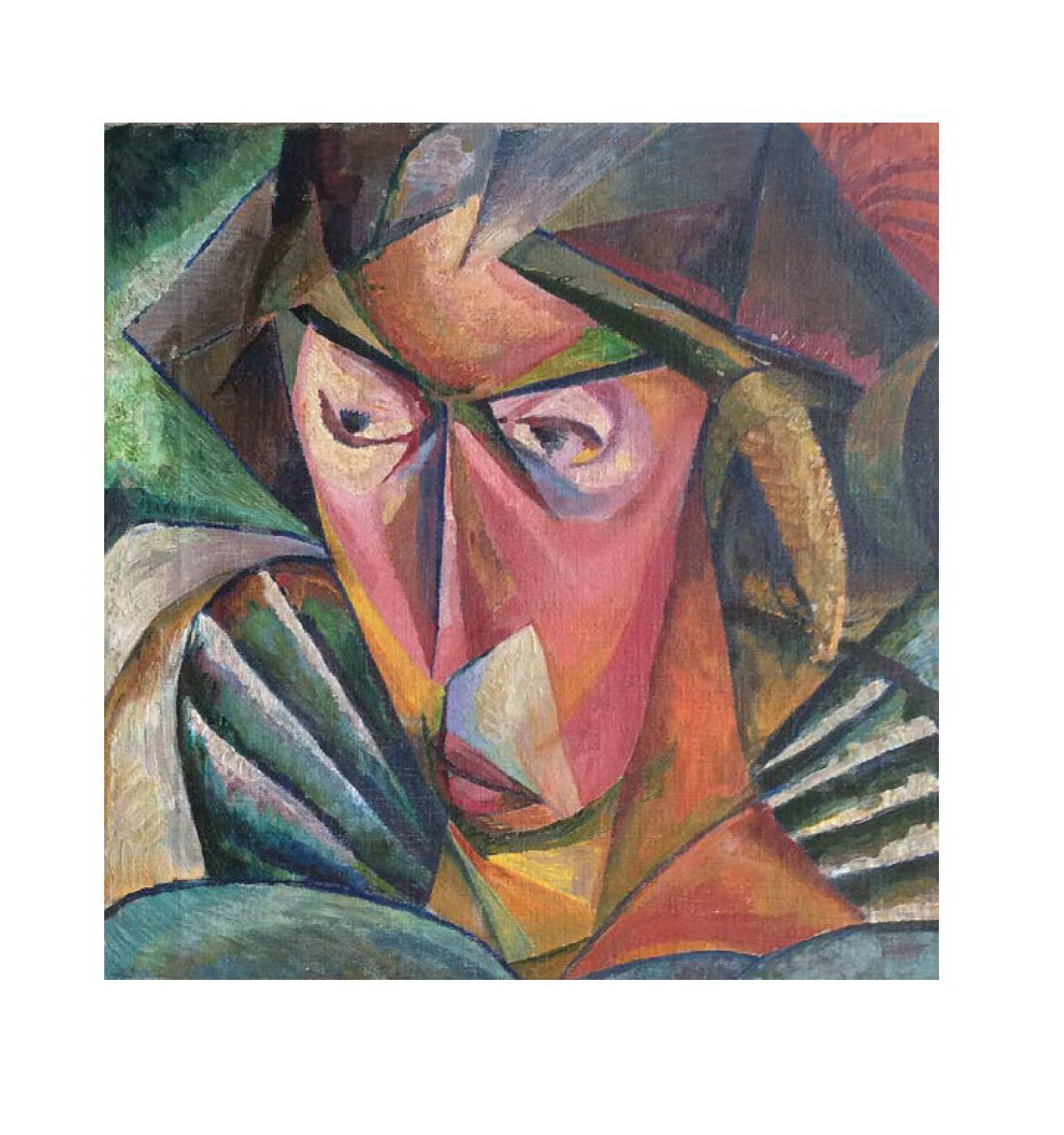
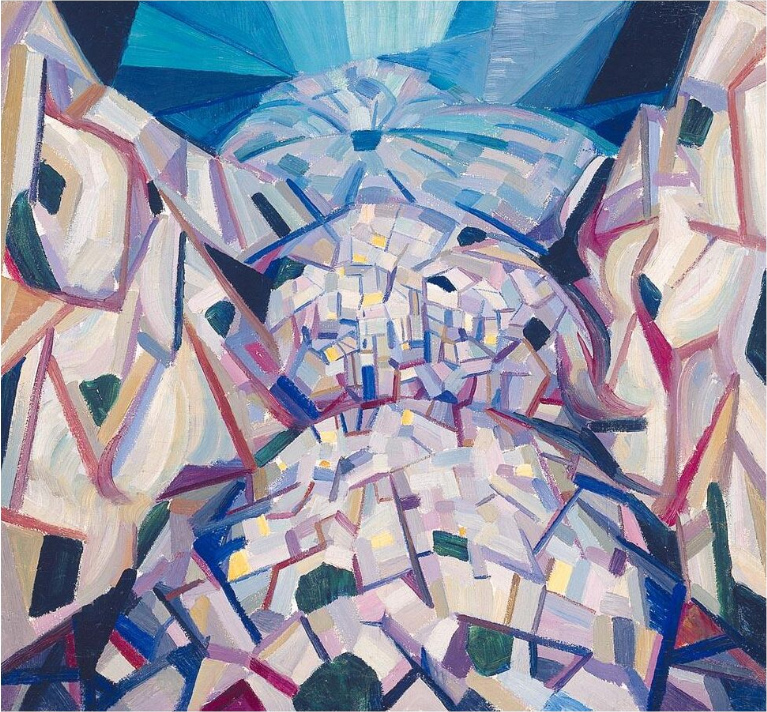
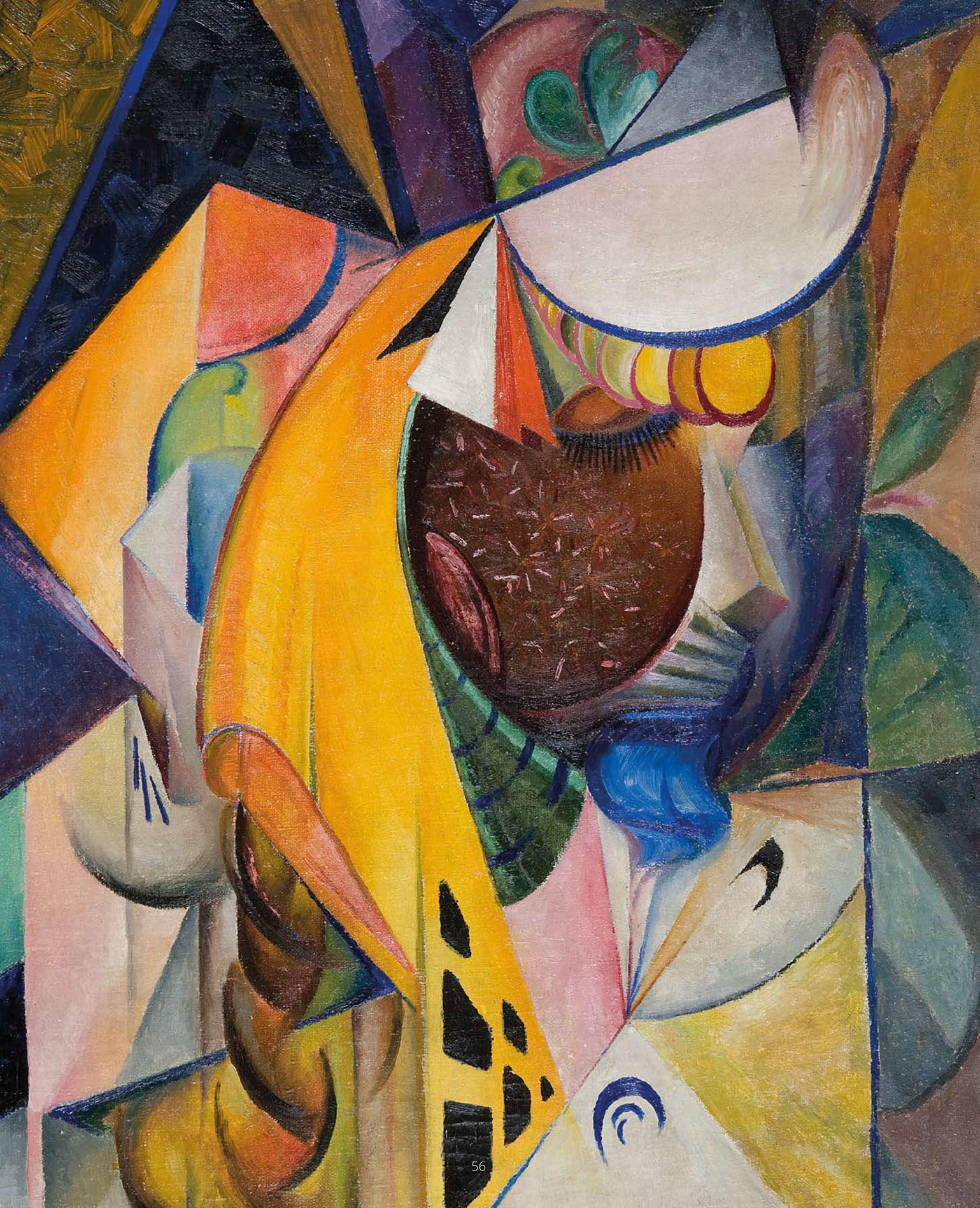
In 1915-1916, Bohomazov was living in the Caucasus where he produced a series of his best cubofuturist works. He worked as a drawing and painting teacher in the village of Geryusi (now the town of Goris). His wife Vanda, also an artist, his muse and faithful life partner as well as careful overseer of his works after his death, also spent time with him in Geryusi. Actually, it was his marriage to Vanda Monastyrska (1888-1982) that added some energy to the life of the melancholic artist. The dynamics of his professional development can be tracked via the frequent and numerous portraits of Vanda that Bohomazov painted. First, pointillism painted after they first met, followed by later expressionist portraits, and finally cubofuturist drawings of an extremely fruitful period following their marriage. When the artist died in 1930, Vanda carefully kept his archive. There is a story that during World War II she personally transported Bohomazov’s archive on a cart from the centre of Kyiv to the Svyatoshyn neighbourhood—a distance of 15 km. Later, she would bring the works back in the same way.
An Abstract Landscape created during the “Caucasian period” was sold at Sotheby’s in 2005 for 736,000 GBP. Another work, Memories about the Caucasus (1916), is called by experts one of the best abstract works in the world. In Armenia, Bohomazov met hard times: his salary was delayed or not paid at all, so he had to save on food and heating. His daily routine included going to sleep between 8 and 9 PM, and getting up at 4 AM to start to painting. In addition, he held a teaching job during this period.
81 Rue de Grenelle, 75007 Paris, France
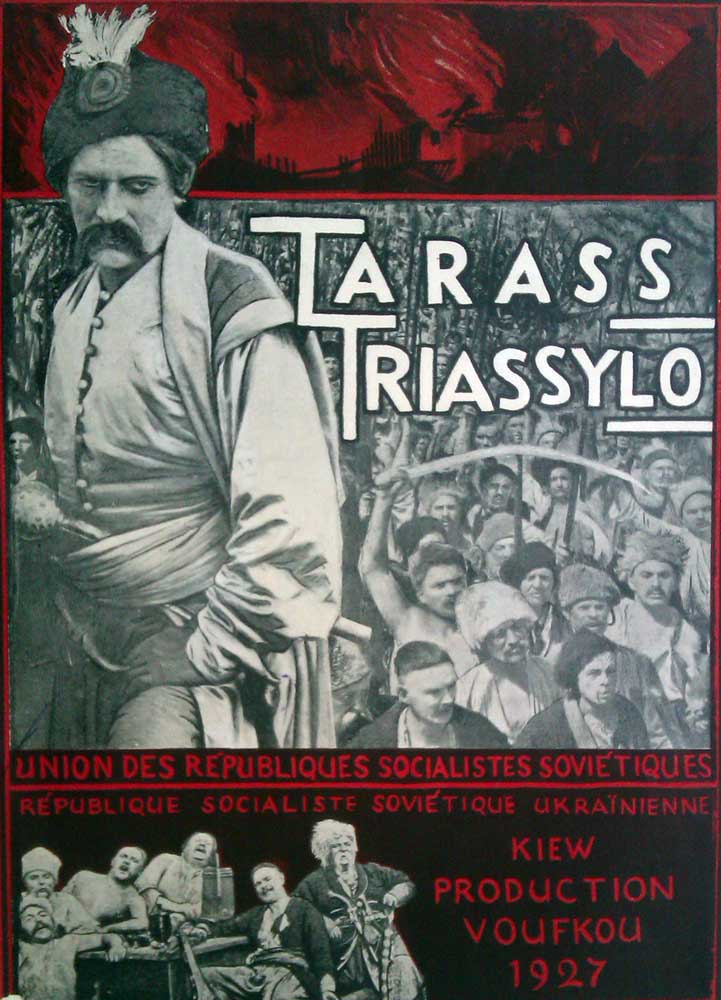
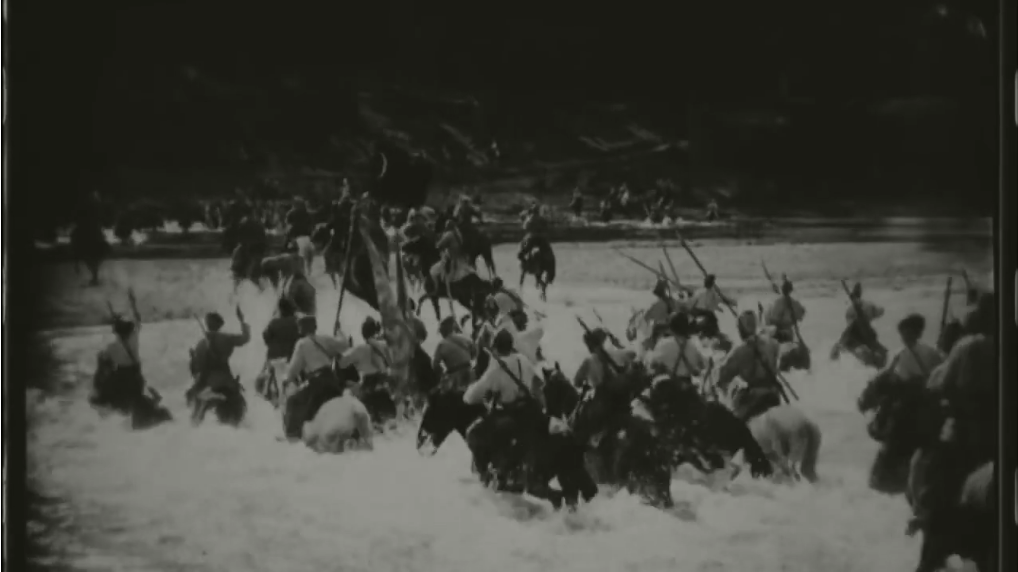
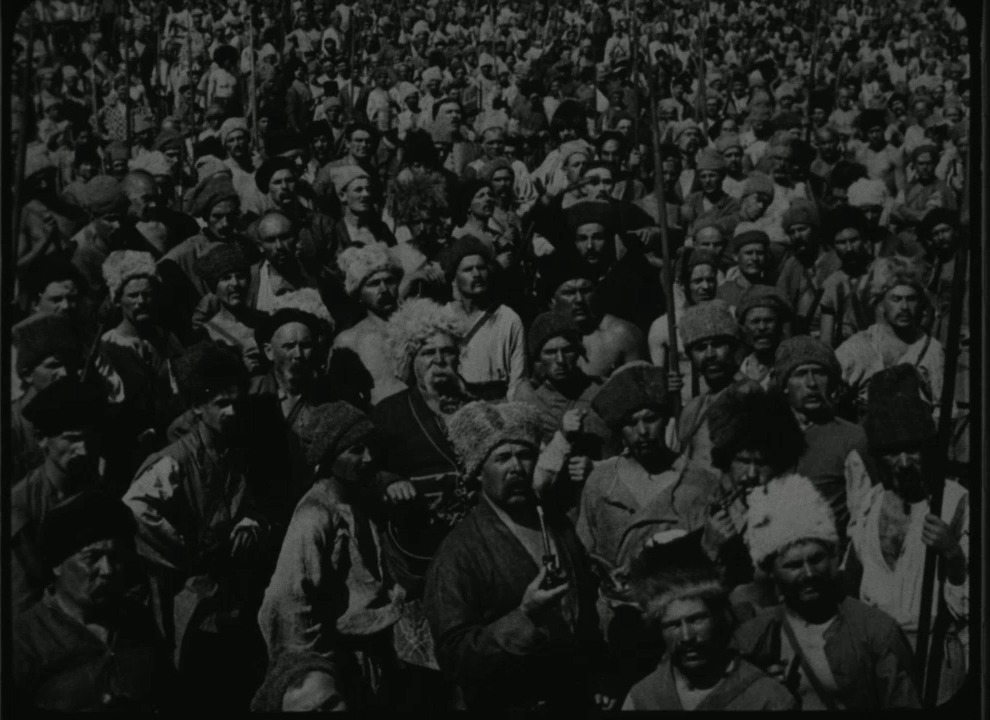
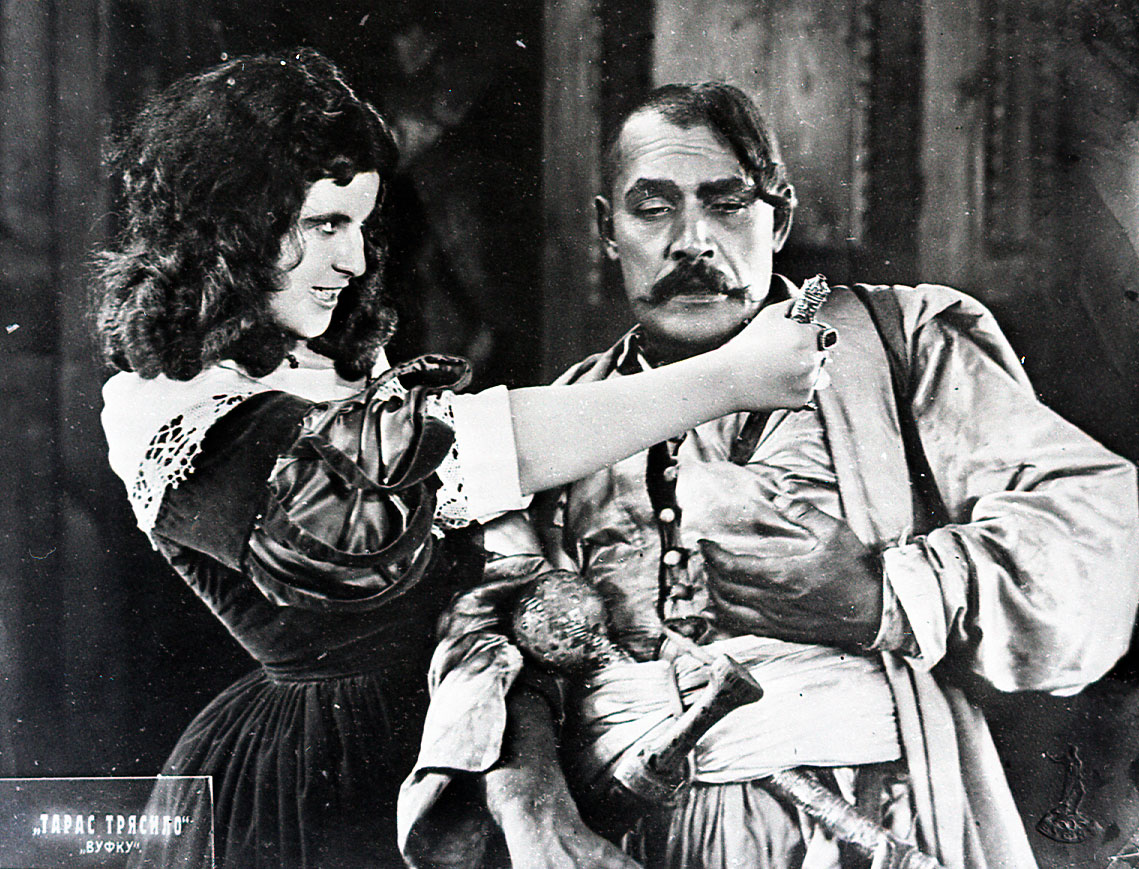
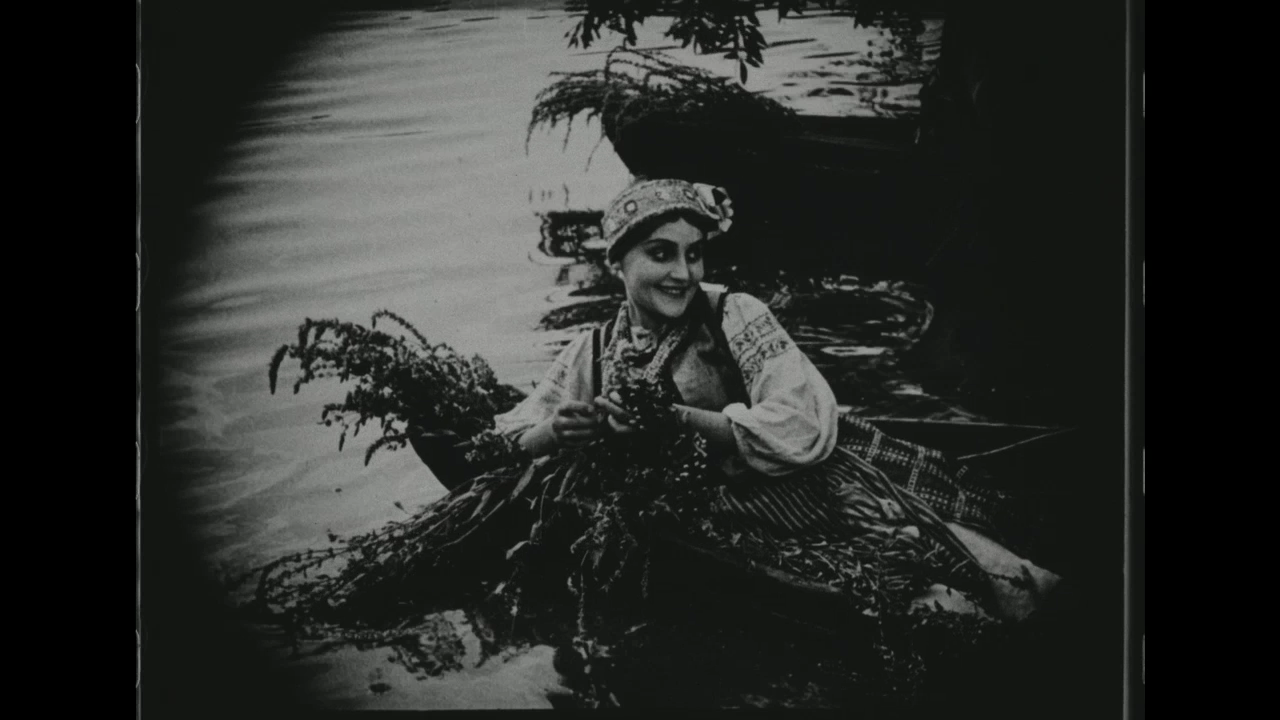
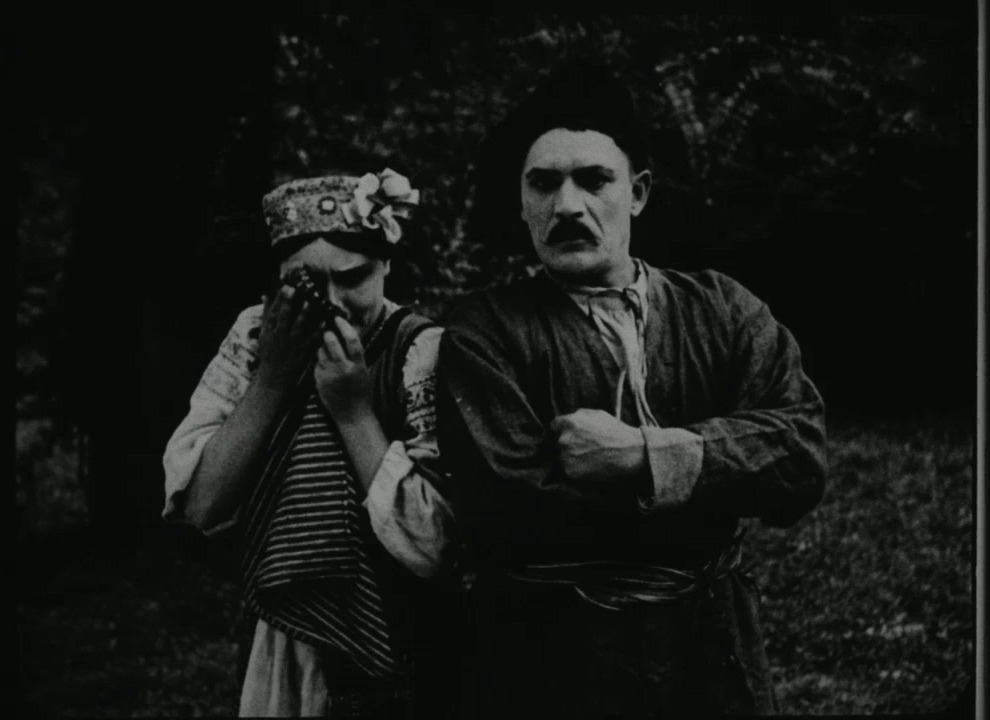
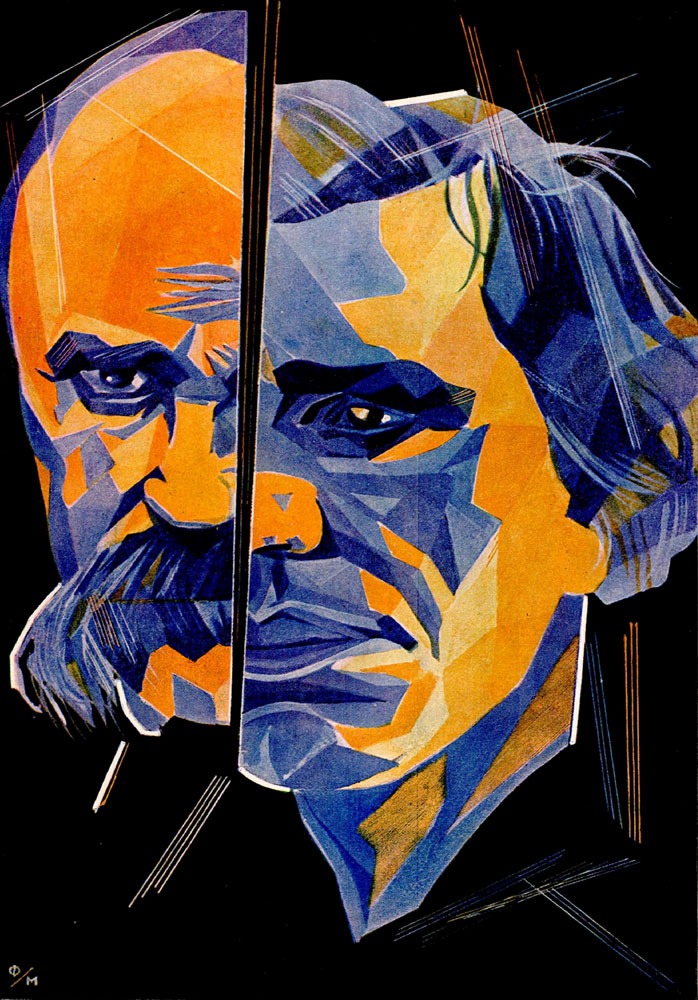
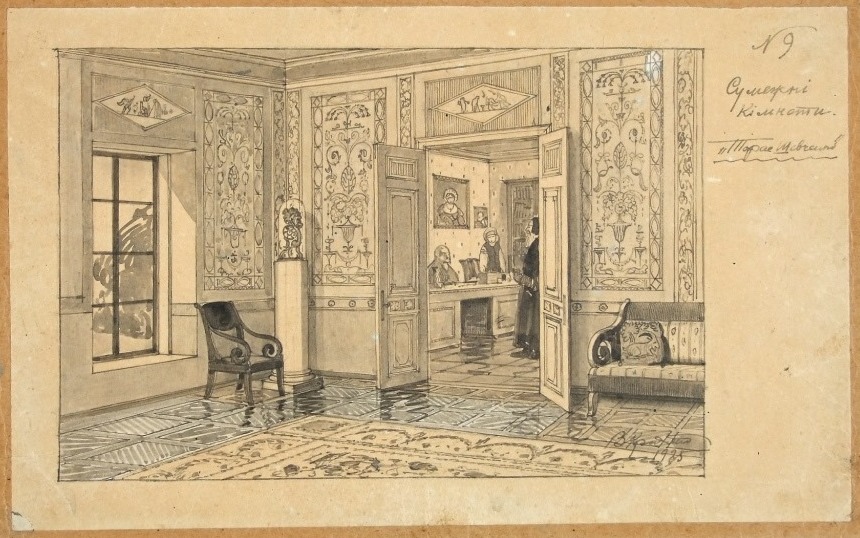
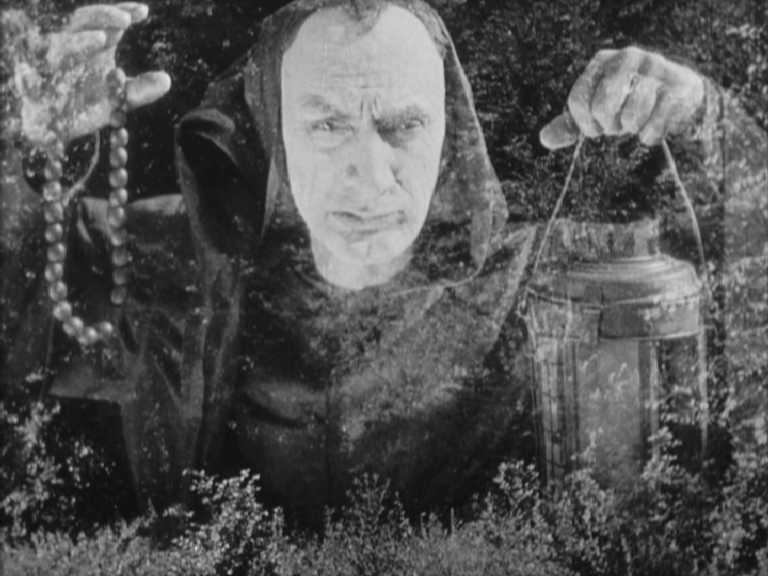
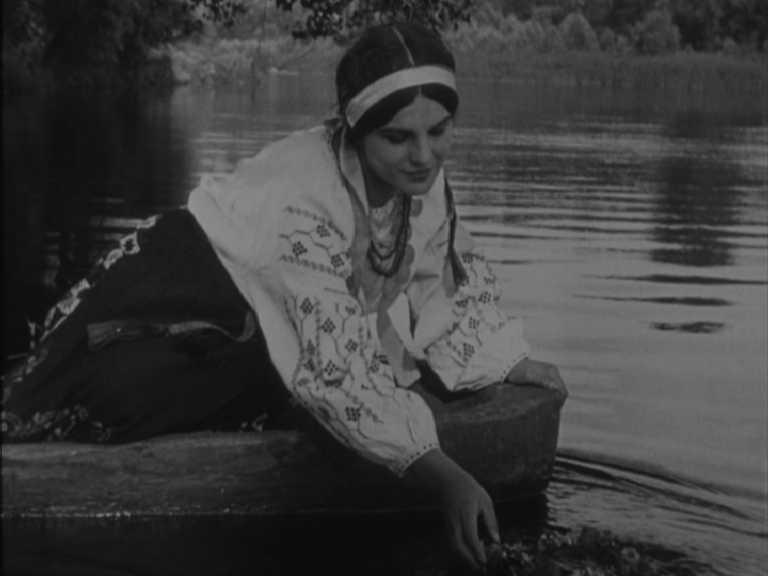
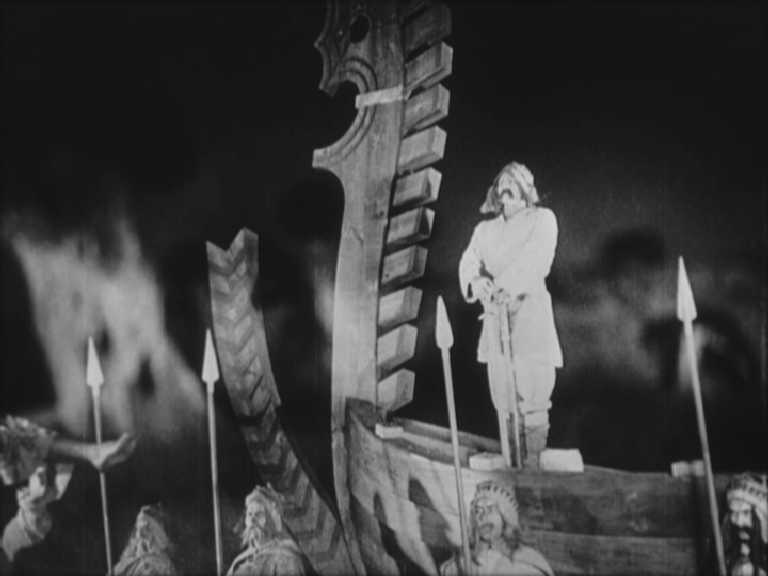
In March 1928, a Ukrainian historical drama – Taras Tryasylo – on which Vasyl Krychevskiy worked as production designer, premiered in Paris. This was the first Ukrainian film about the history of Ukraine to be distributed in France. French audiences welcomed this epic tableau with 10,000 extras, massive battle scenes, a variety of locations and lavish costumes. It was called ”a historical fresco”, and viewers noted the ”power of the film’s realisation”. For a long time Taras Tryasylo was considered lost, until researcher Lyubomyr Hoseyko discovered it at La Cinémathèque française under the title Tatars in 1998.
Taras Tryasylo (director Petro Chardynin) was commissioned by VUFKU (Ukrainian Photography & Cinema Administration), which successfully produced popular and avant-garde films through almost nine years of activity engaged in in virtual independence from Moscow. Vasyl Krychevskiy was in that pool of auspicious talent hired by VUFKU. The artist created the entire visual aspect of the film, everything from set decor to haircuts. According to renowned Ukrainian poet and scholar Mykola Bazhan: ”The old master knew a lot. He wasn’t boasting about his knowledge, but gladly sharing it, and had become an undeniable man of artistic weight for all filmmakers, and especially for two people - (Oleksandr) Dovzhenko, who otherwise was not inclined to bend to anyone’s authority, and (Yuriy) Yanovskiy”. At the Odesa Film Factory, Krychevskiy worked on more than ten silent films, among them renowned works such as the epic biopic Taras Shevchenko, and legendary arthouse film Zvenyhora by Oleksandr Dovzhenko. He concluded his career in film with a sound and colour film, the musical The Sorochyntsi Fair (director Mykola Ekk).
Giardini della Biennale, Calle Giazzo, Venice, Metropolitan City of Venice, Italy
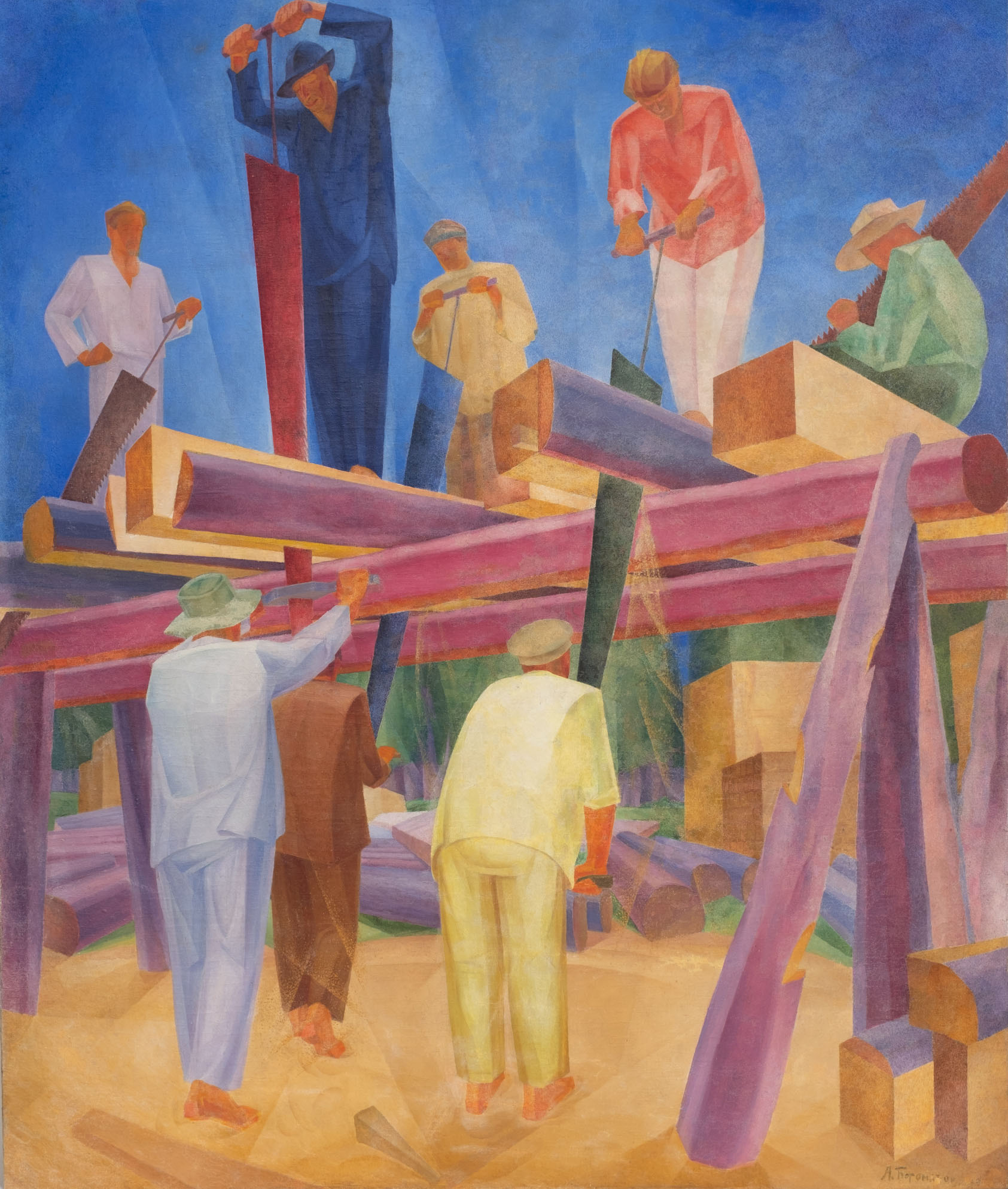
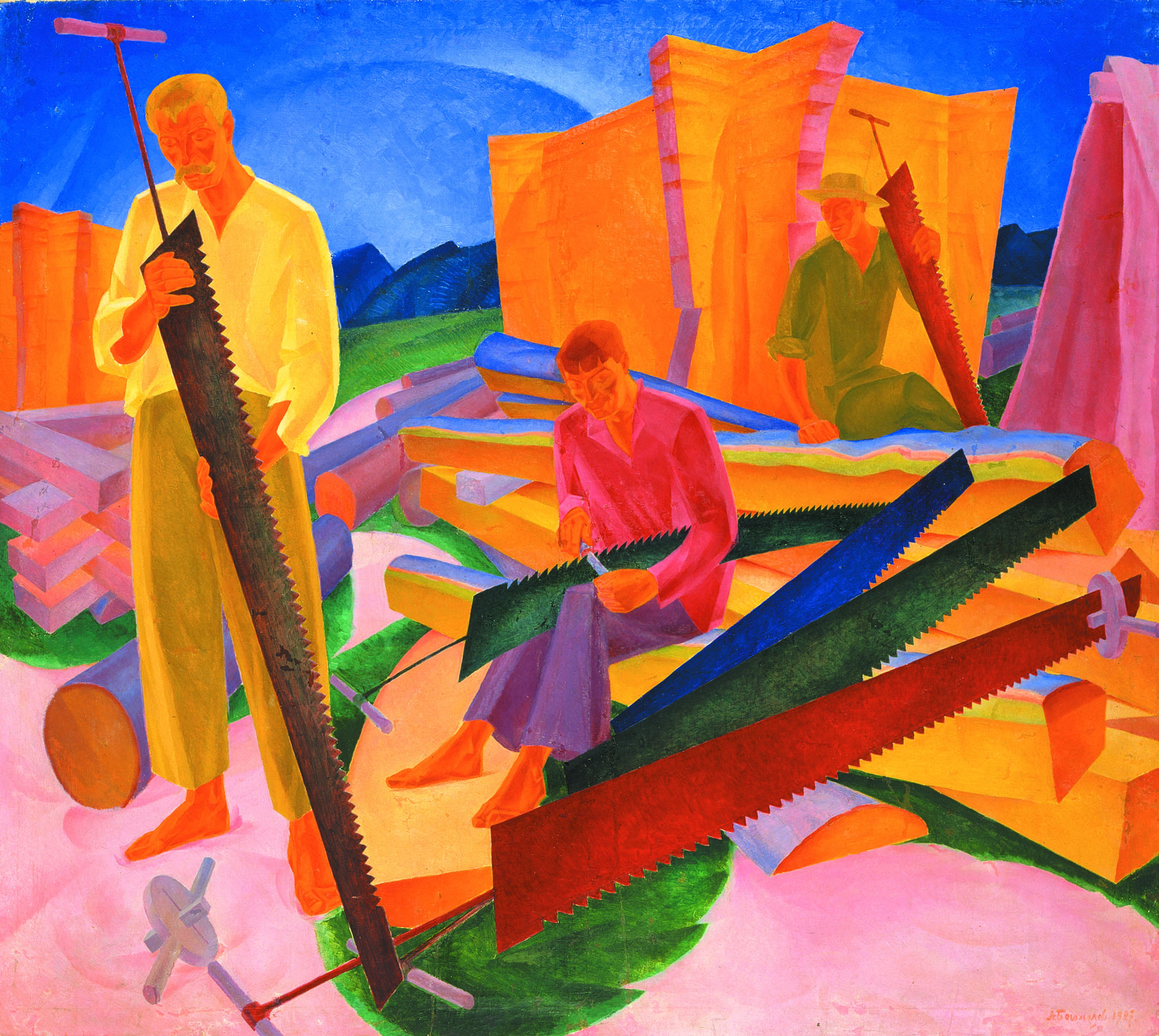
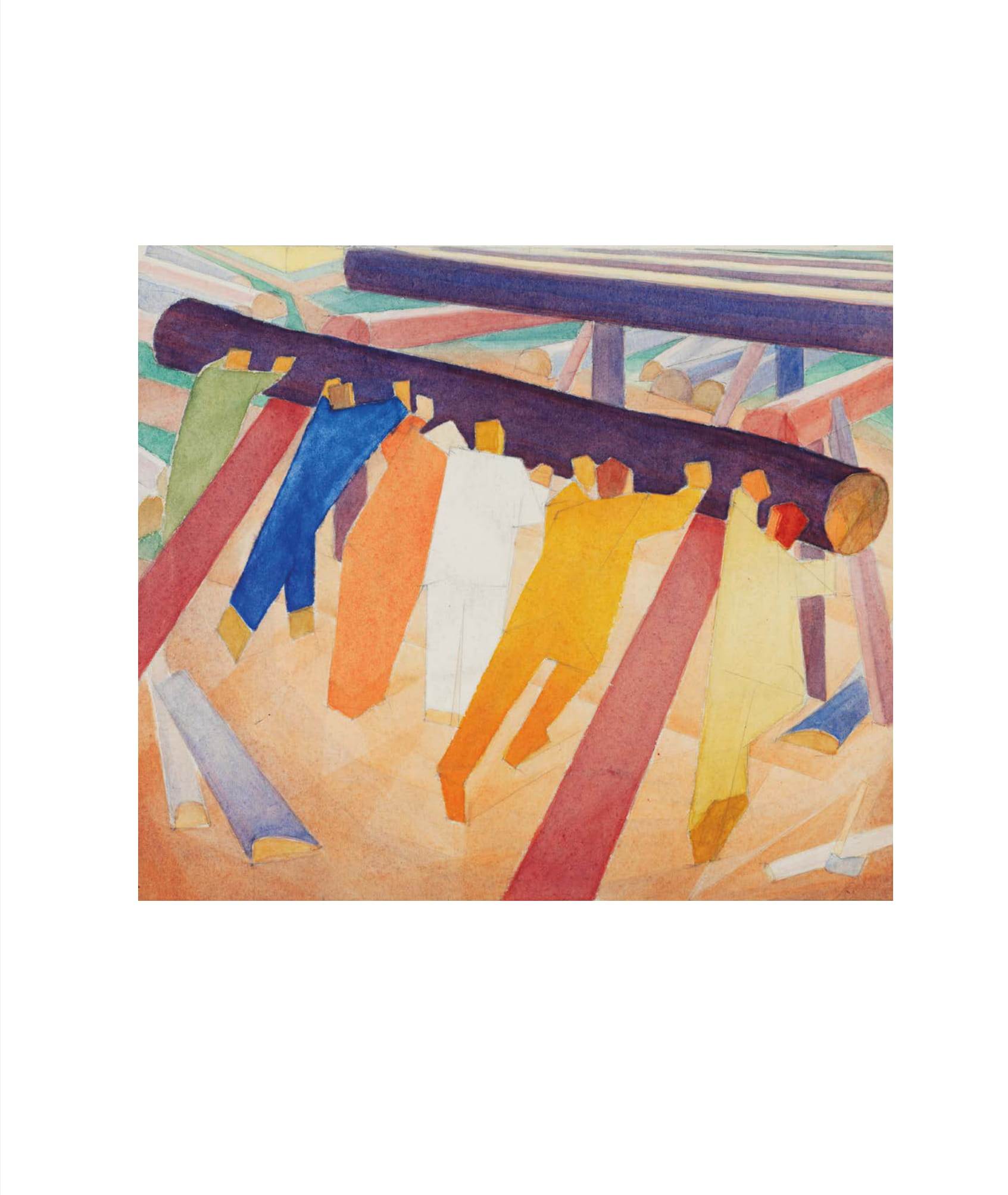
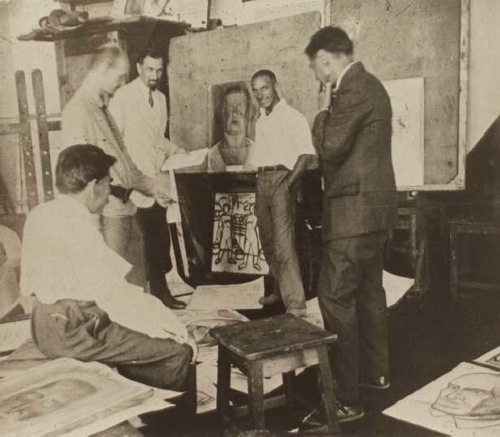
In the summer of 1930, Bohomazov’s painting The Woodcutters was exhibited in the Soviet pavilion of the 17th Venice Biennale. At that time, the USSR’s participation in the biennale had become quite politicized: Russian ideologists viewed exhibitions as a vector of propaganda activities. However, young Soviet art was still relatively free from state censorship. So, together with Bohomazov other Ukrainian avant-garde artists saw their artwork make it to Venice—artists like Anatole Petrytsky, Ivan Padalka, Vasyl Sedlyar, and Sofia Nalepynska-Boychuk. The latter three would be executed seven years later under the trumped up charges of “Ukrainian bourgeois nationalism and leading a national-fascist terrorist organization.”
At the time, Bohomazov had already been working as a professor of easel painting at Kyiv Art Institute for eight years (founded as the Ukrainian Academy of Arts in 1917), and participation in the biennale meant his recognition as an artist and a theoretician. Unfortunately, Bohomazov did not live until the biennale opening which had been delayed for five weeks: he died in Kyiv just before it opened.
He created The Work of Woodcutters in 1927-1930 in Boyarka, a dacha condominium. “The clearing was strewn with fresh sawdust, the logs almost rang in the sun, resinous and glistening. The figures of workers on the scaffolding seemed huge against the background of bright blue sky. The high sound of the saw resonated in the air,” remembered Yaroslava, Bohomazov’s daughter. The Work of Woodcutters triptych includes two paintings: The Woodcutters (1929) and Sharpening Saws (1927); the third one to be titled Rolling Logs remained only an idea, reproduced in many sketches and watercolours.
Bohomazov resumed easel painting after a long pause due brought on by his grave emotional state following the death of his father-in-law, revolutionary perturbations, and tuberculosis. Obviously feeling that the end was near, Bohomazov put all his effort into the development of the triptych defined by its dynamicrhythms and gleaming colours (corresponding to his theoretical concept of the artist engaging with four elements of art). “I have joy from work, sun, warmth, and energy. In my painting, I don’t want to show the necessity, complicated nature and adaptation, but the joy and energy, the call – so that the audience is compelled to work, to feel like a organized part of the whole,” Bohomazov wrote in his notes.
Wolfensberger Building, Bederstrasse 109, 8002 Zürich, Switzerland
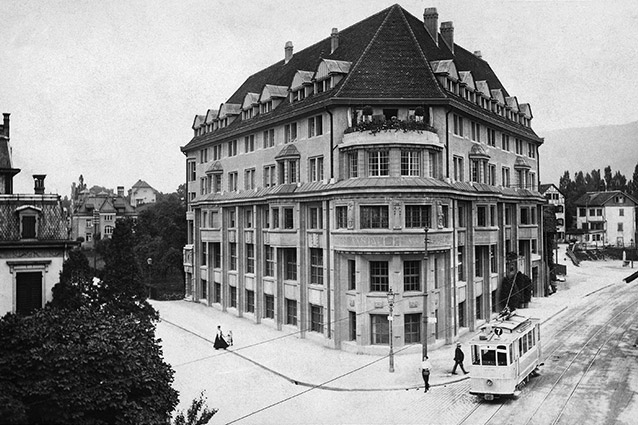
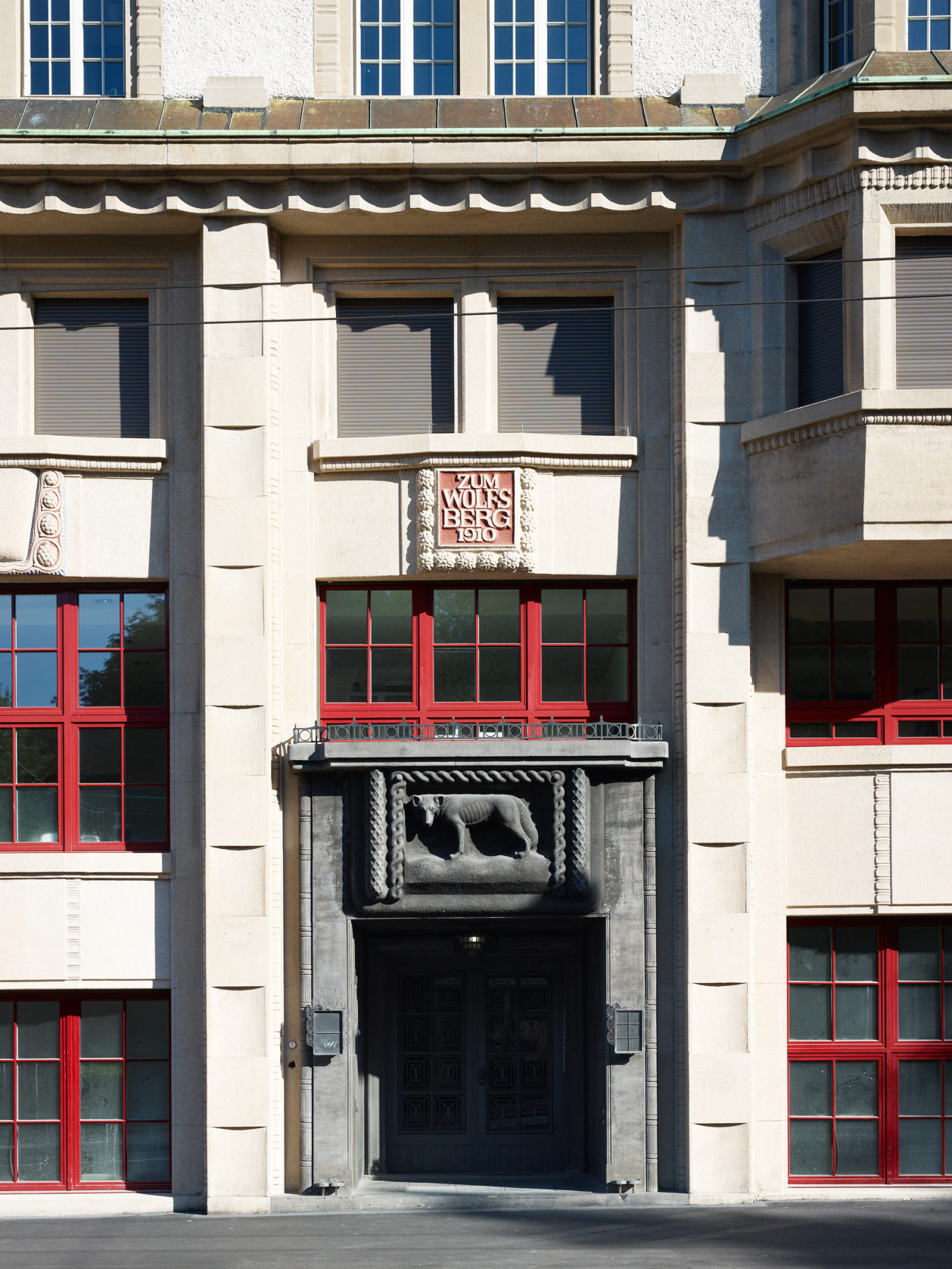
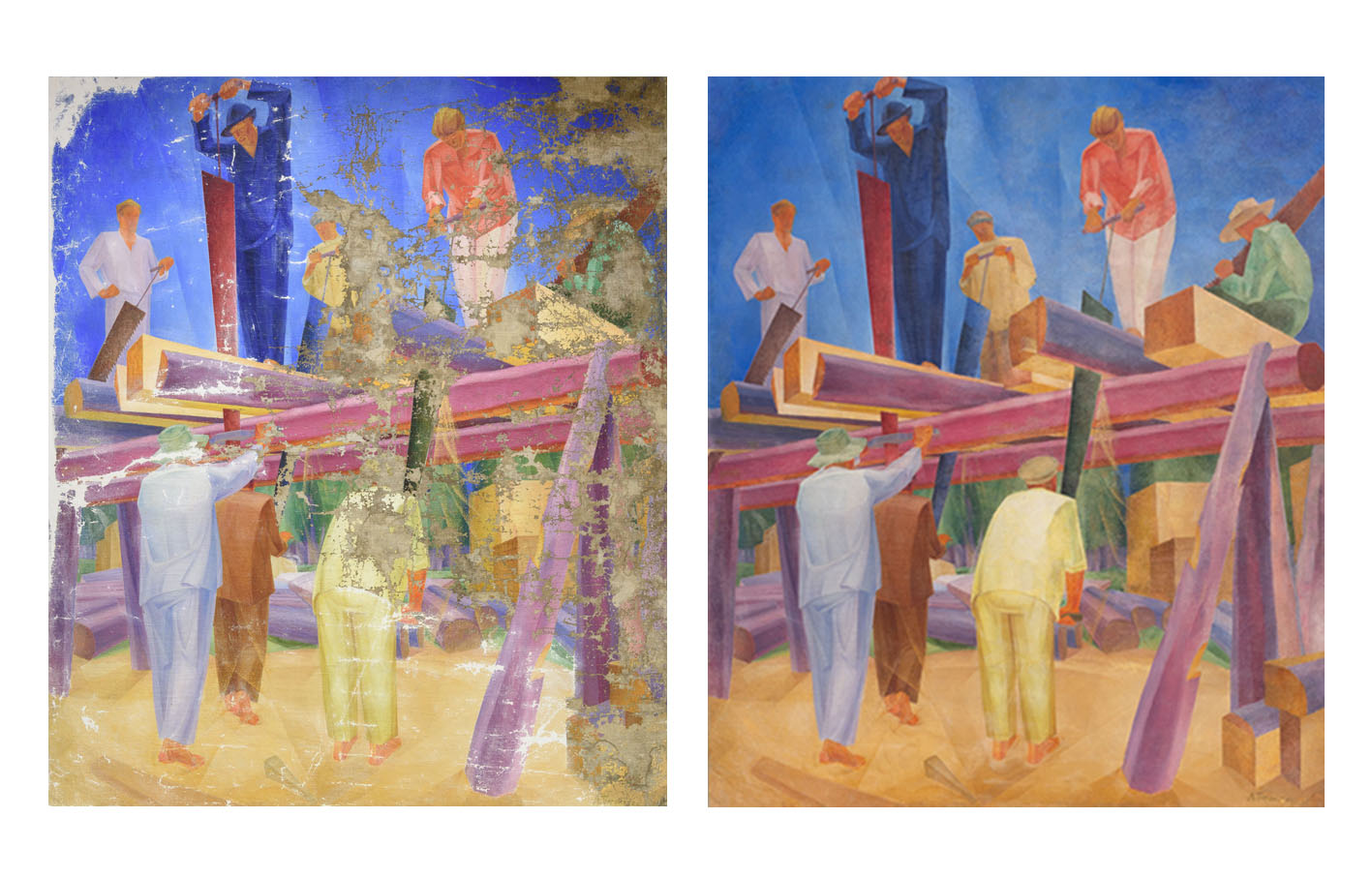
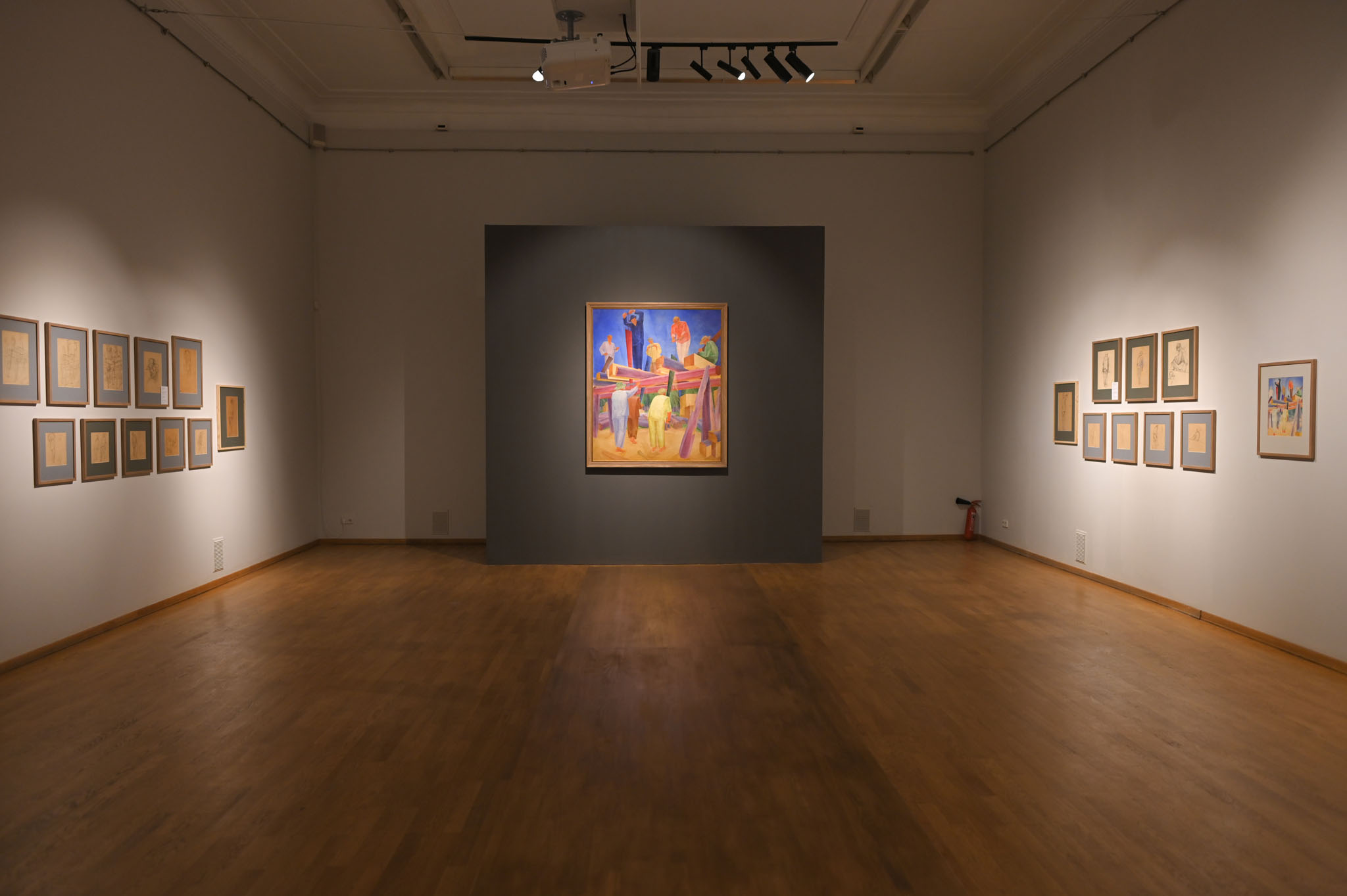
The Woodcutters, a mature masterpiece by Oleksandr Bohomazov, continues to wow audiences all over the world. In 1931, the painting was exhibited in Zurich, and in 1932, in Japan (researchers have yet to uncover in which city the exhibition took place.) The painting was returned to Kyiv damaged. For about 90 years it remained in this state in a closed museum “special fund” where works were sent in late 1930s to be destroyed. At that time, during the fight for pure Soviet art, the avant-garde art was declared to be “formalist”, and work by these artists were banned. Only in 2019 was The Woodcutters exhibited in the National Art Museum of Ukraine--the first time in years at the exhibition “Oleksandr Bohomazov: the creative lab”. Restorers had worked on the painting for three years before releasing it for the exhibit.
For decades it was forbidden to mention the work of world-renowned cubofuturist artists. Only in late 1960s did Bohomazov’s name resurface from its enforced oblivion. Modest exhibitions were held in Kyiv, and European avant-garde researchers, namely Jean-Claude Marcadé, Jean Chauvelin and Andrei Nakov – turned their attention to Bohomazov. His works became fashionable additions to collections ranging far beyond the Soviet Union. Bohomazov’s works are currently exhibited in the National Art Museum of Ukraine, Guggenheim and MOMA in New York, Ludwig Museums (Germany) as well as in numerous private avant-garde collections.
Cerkiew Opieki NMP, 33-336 Łabowa, Poland
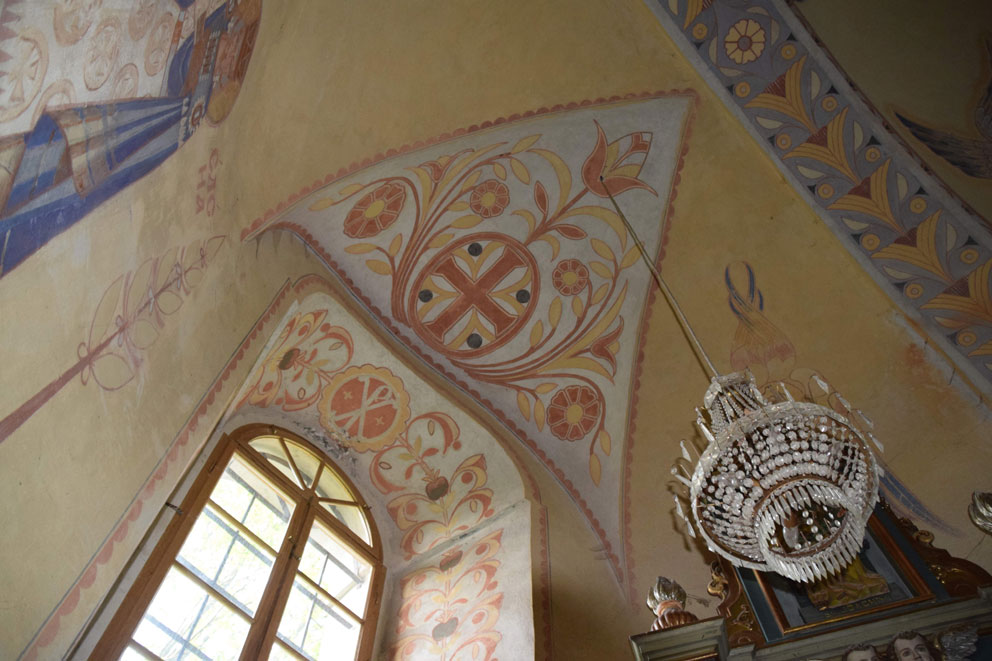
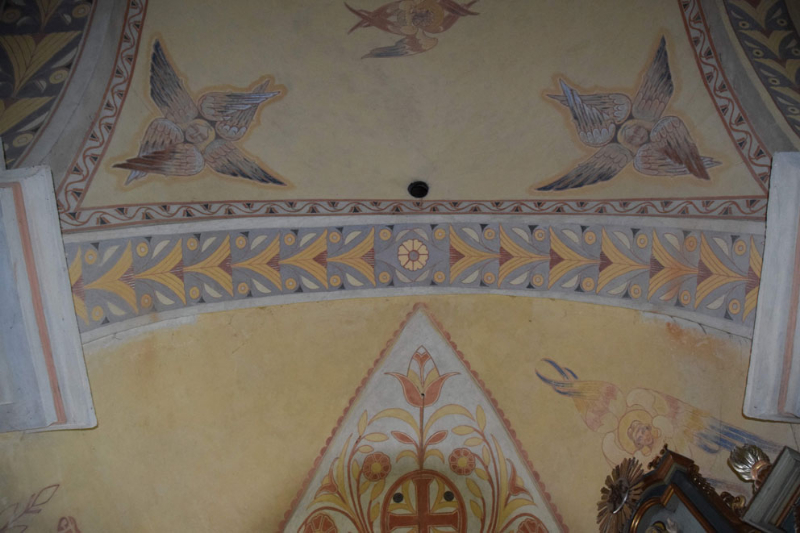
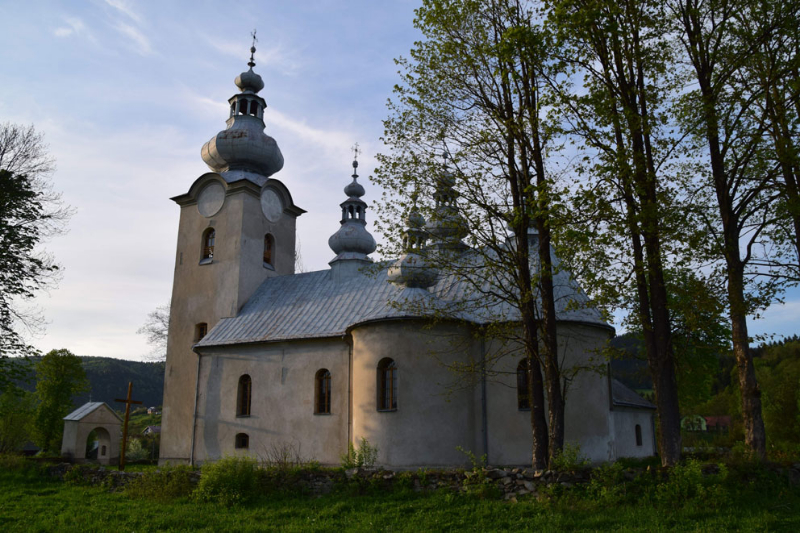
In the summer of 1944, moving westward from the warfront, Vasyl Krychevskiy and his colleagues and students from the Fine Arts Studio in Lviv made a stopover in the historically Ukrainian Lemko region of eastern Poland. Decorating a local church built in 1789 offered the refugees a chance to earn an income. Krychevskiy used his skills as artist and architect here. The problem was with the high humidity inside the church that quickly damaged older frescoes. To avoid the recurrence of this misfortune, Krychevskiy insisted on building a drainage system in the building. One of the workers on that project – Serhiy Lytvynenko –recounts: ”We decorated it using ancient methods, we made the paints ourselves from plants, using Krychevskiy’s recipes.” The paints were mixed with cheese and egg yolk. They painted using the fresco technique. Krychevskiy supervised the placement of compositions and created the ornamental elements. And though this redecoration was a group effort (for instance, Mykola Butovych created the images of St. Constantin, St. Elena, Sts. Vladimir and Olga, while Leonid Perfetskiy painted the scene Jesus Christ in Gethsemane), Krychevskiy’s signature style defined the work - the church interior was clearly Ukrainian modernism. In 2014, these polychrome frescoes of Ukrainian artists were added to the list of historical and artistic monuments of Poland.
36 Rue de Verneuil, Paris, France
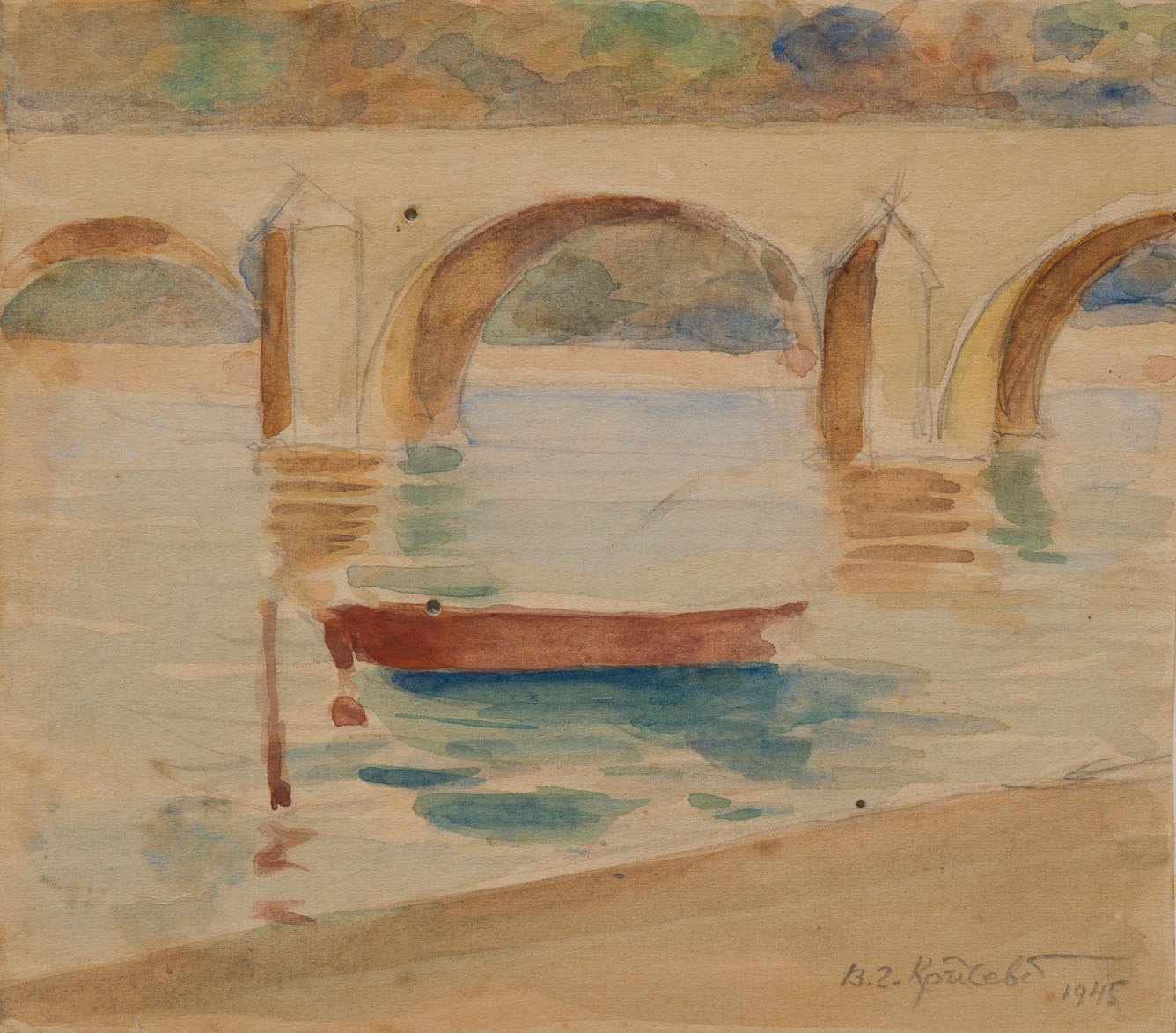
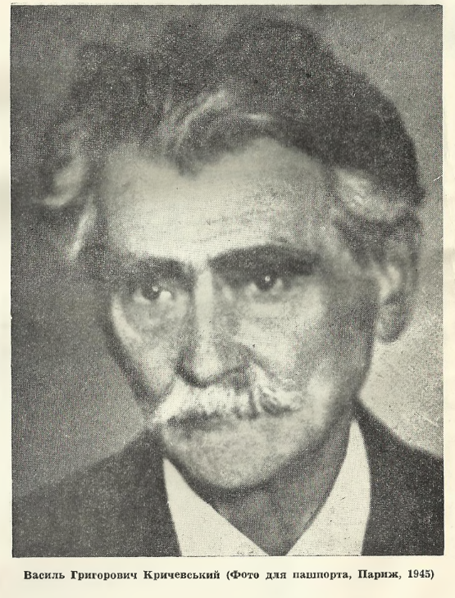
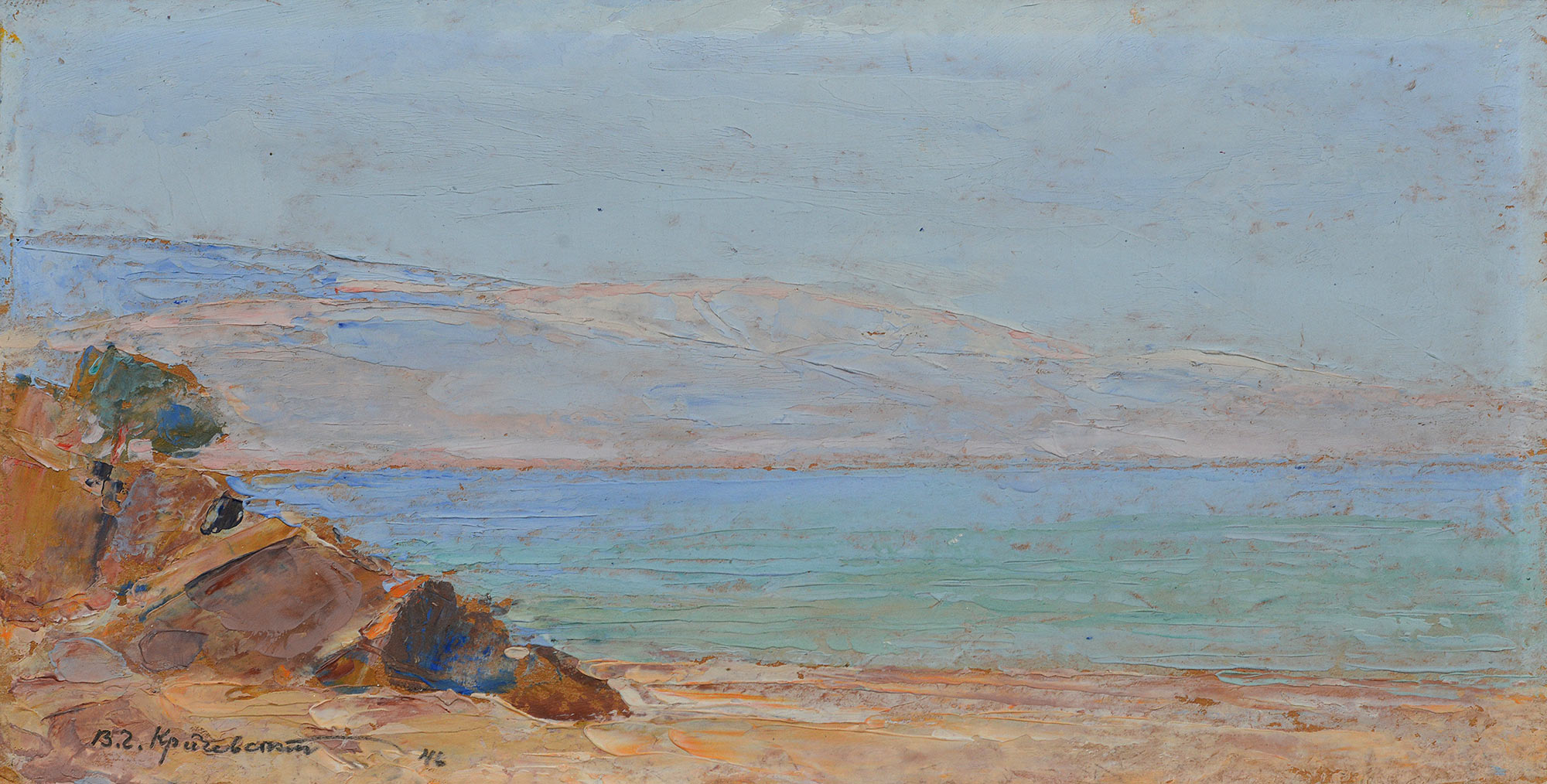
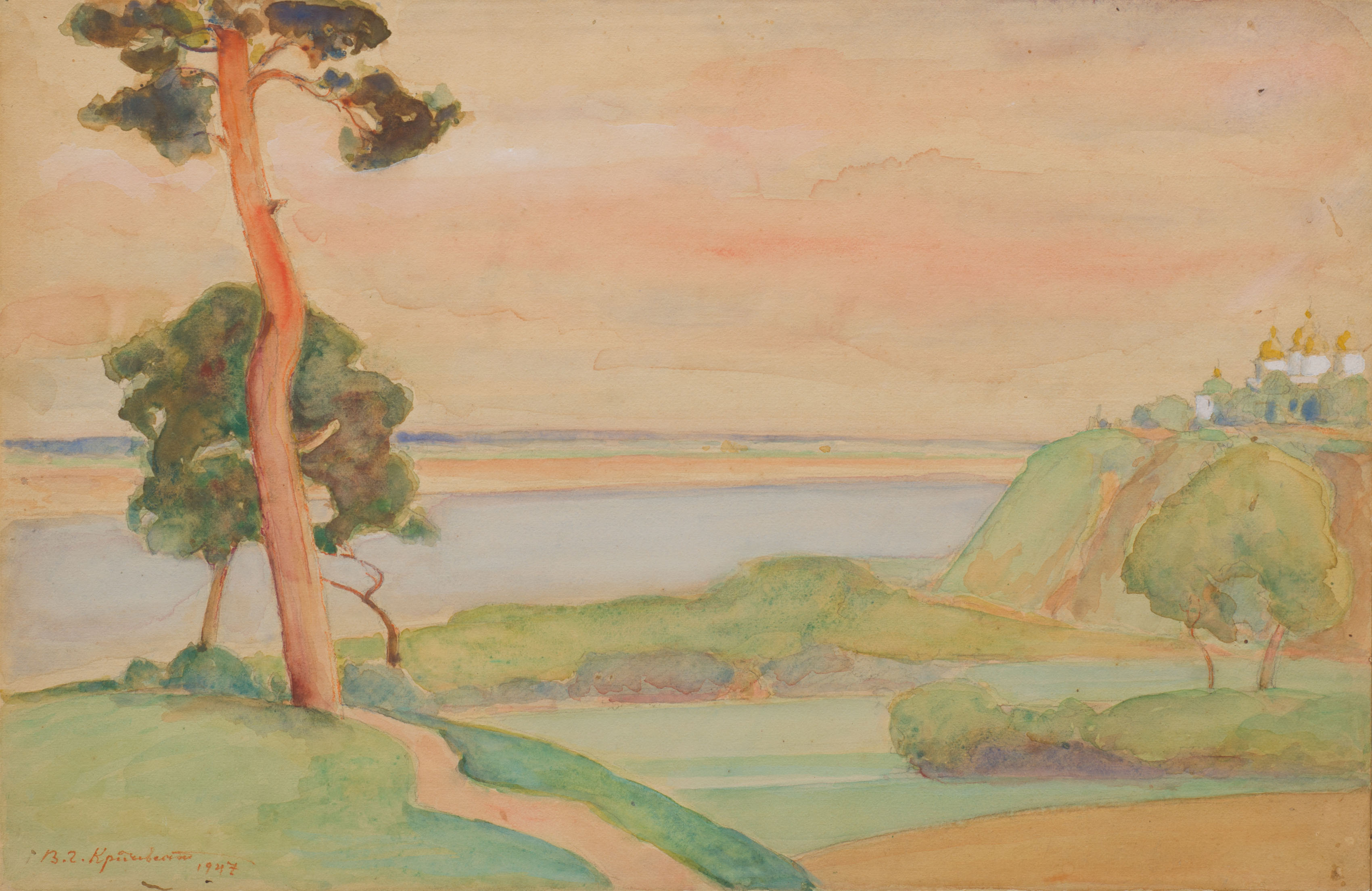
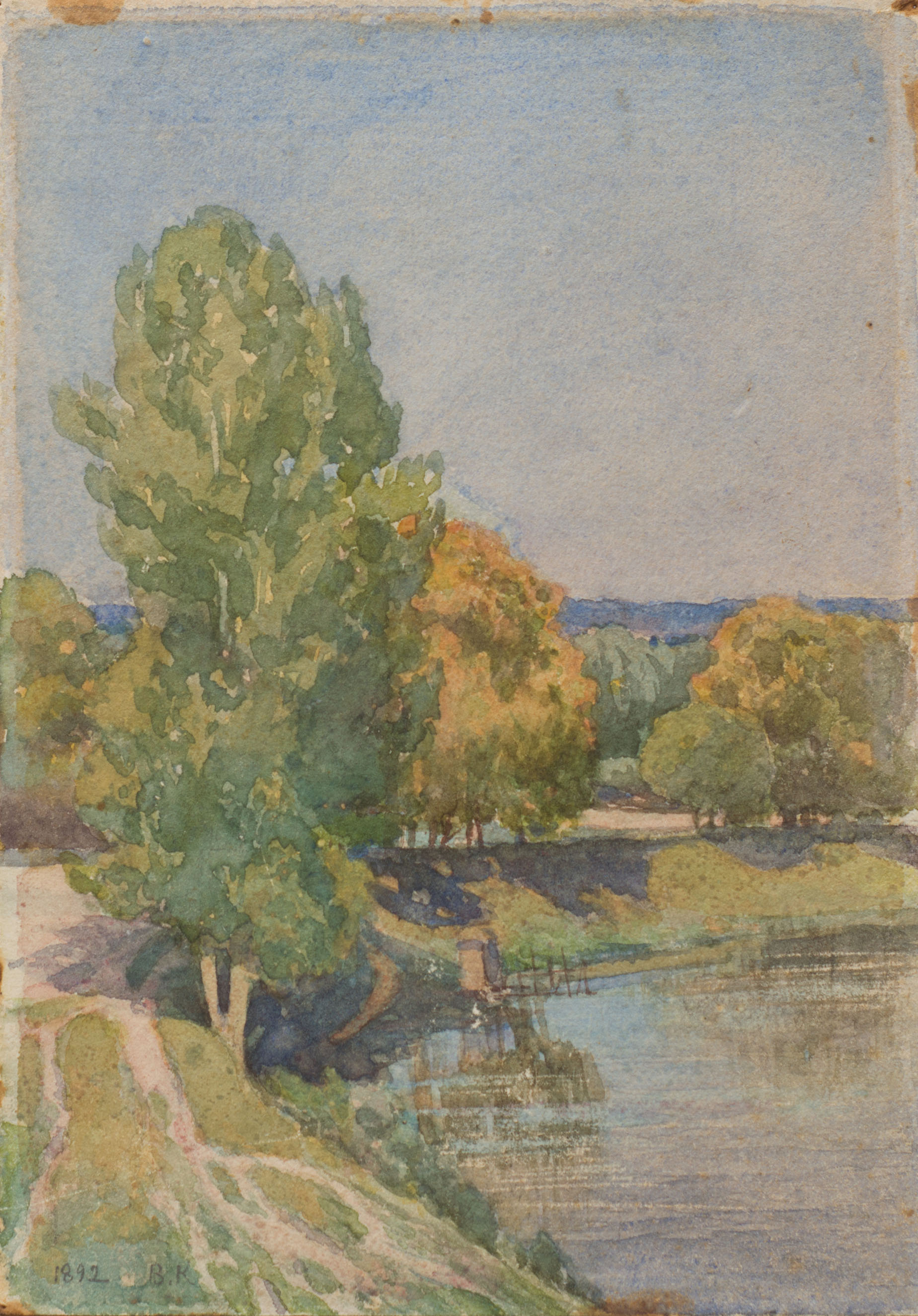
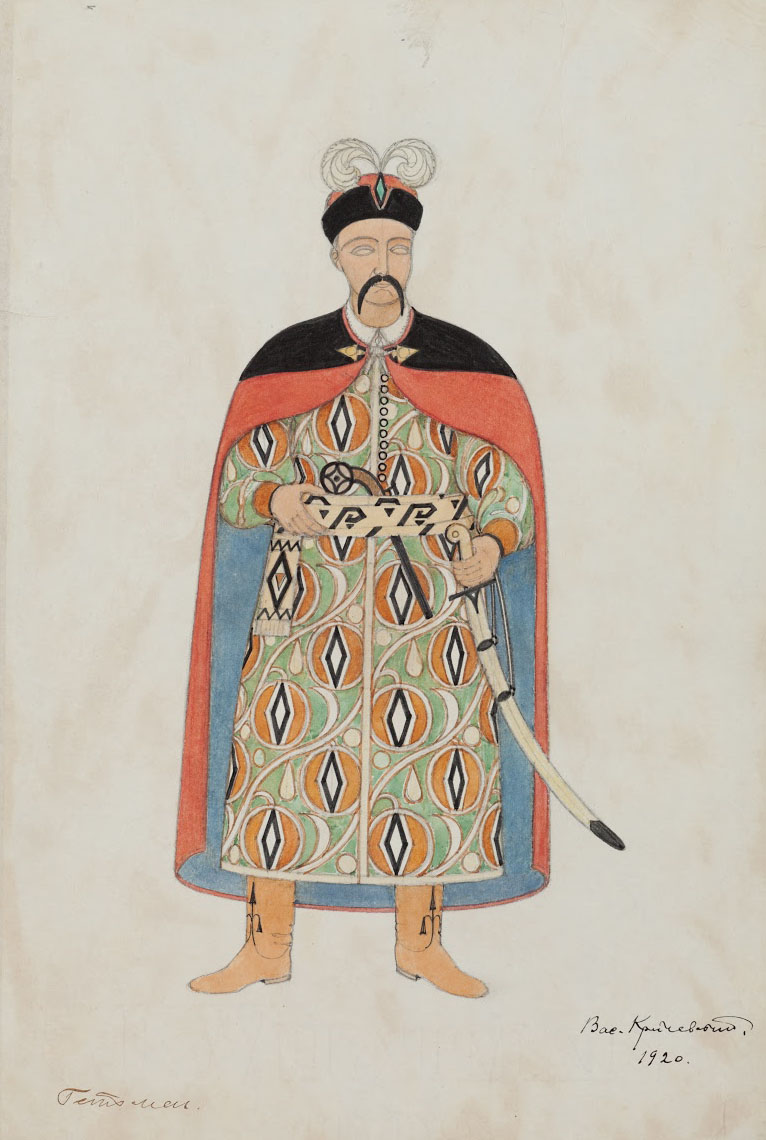
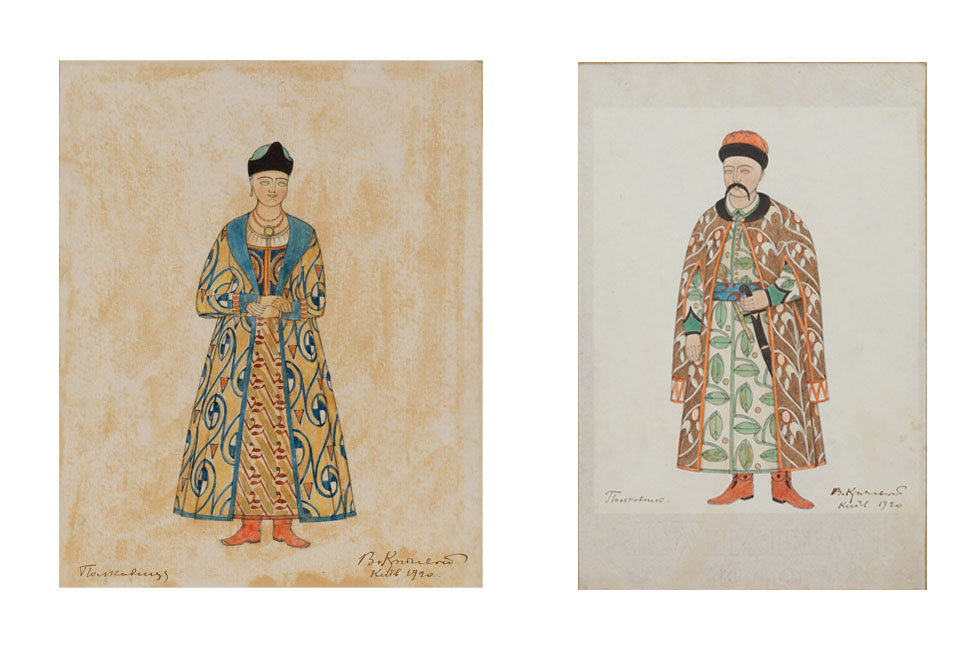
In the summer of 1945, after an exhausting yearlong odyssey as a refugee, Vasyl Krychevskiy and his wife Yevhenia, daughter Halyna and her family, finally found peace and shelter in France. At first, they stayed with the artist’s elder son Mykola Krychevskiy, also an artist, who had settled in Paris much earlier. Later, Krychevskiy would move to the Paris suburb of La Garenne-Colombes. He is now over 70. As the family made its way to Paris Krychevskiy had survived an air assault in which he lost a large part of his works: drawings, paintings, valuable books, articles, films and photos. But in France he managed to rebound so well from all of this that he overcame a bout of depression and began actively working again. In particular, he created the project of a monument to Ukrainians who had participated in the French Resistance. Around 150 works by Krychevskiy found their way into various private collections in Paris. Politician and entrepreneur Simon Sozontiv even wished to buy all the artist’s paintings and sketches for half a million francs, but Krychevskiy refused.
Krychevskiy was an incredibly hard-working man. His personal retrospective exhibition in Kyiv in the summer of 1940 comprised 1055 exhibits: paintings, architectural projects, sketches for stage and film decor covering the period of 1892-1940. This large-scale exhibition at the State Museum of Ukrainian Art (now the National Art Museum of Ukraine) was attended by more than fifty-thousand people.
222 East 6th Street, New York, NY, USA
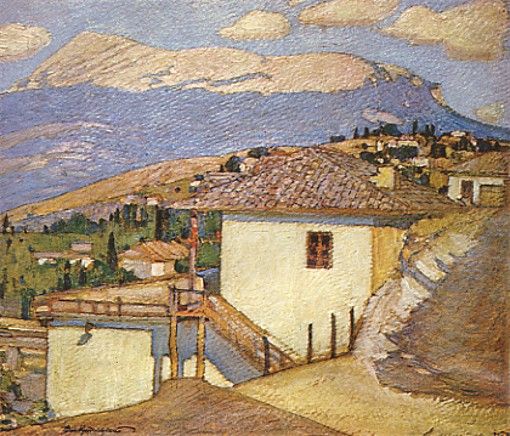
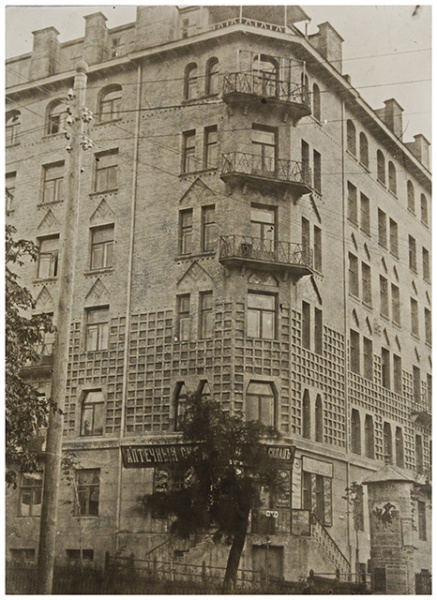
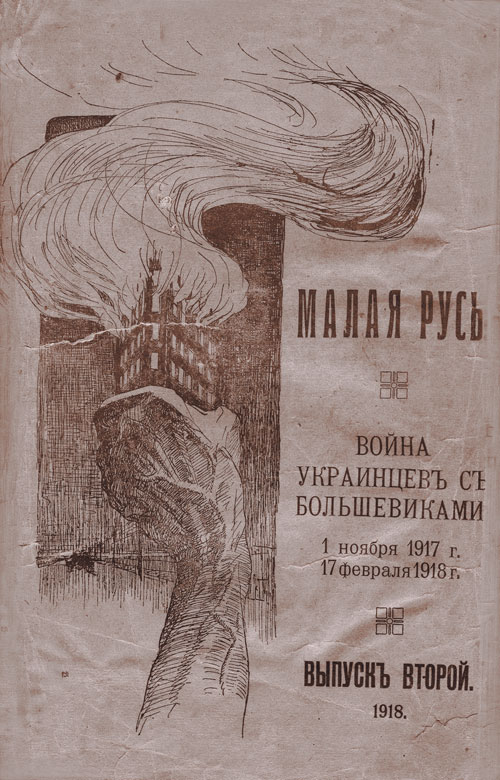
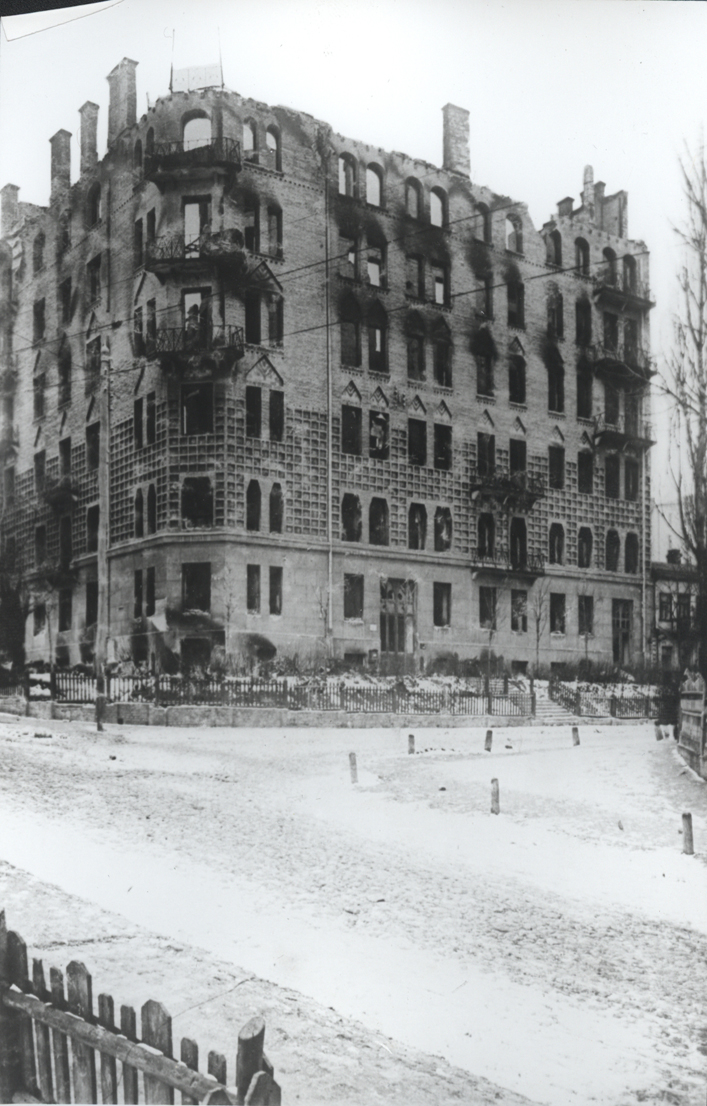
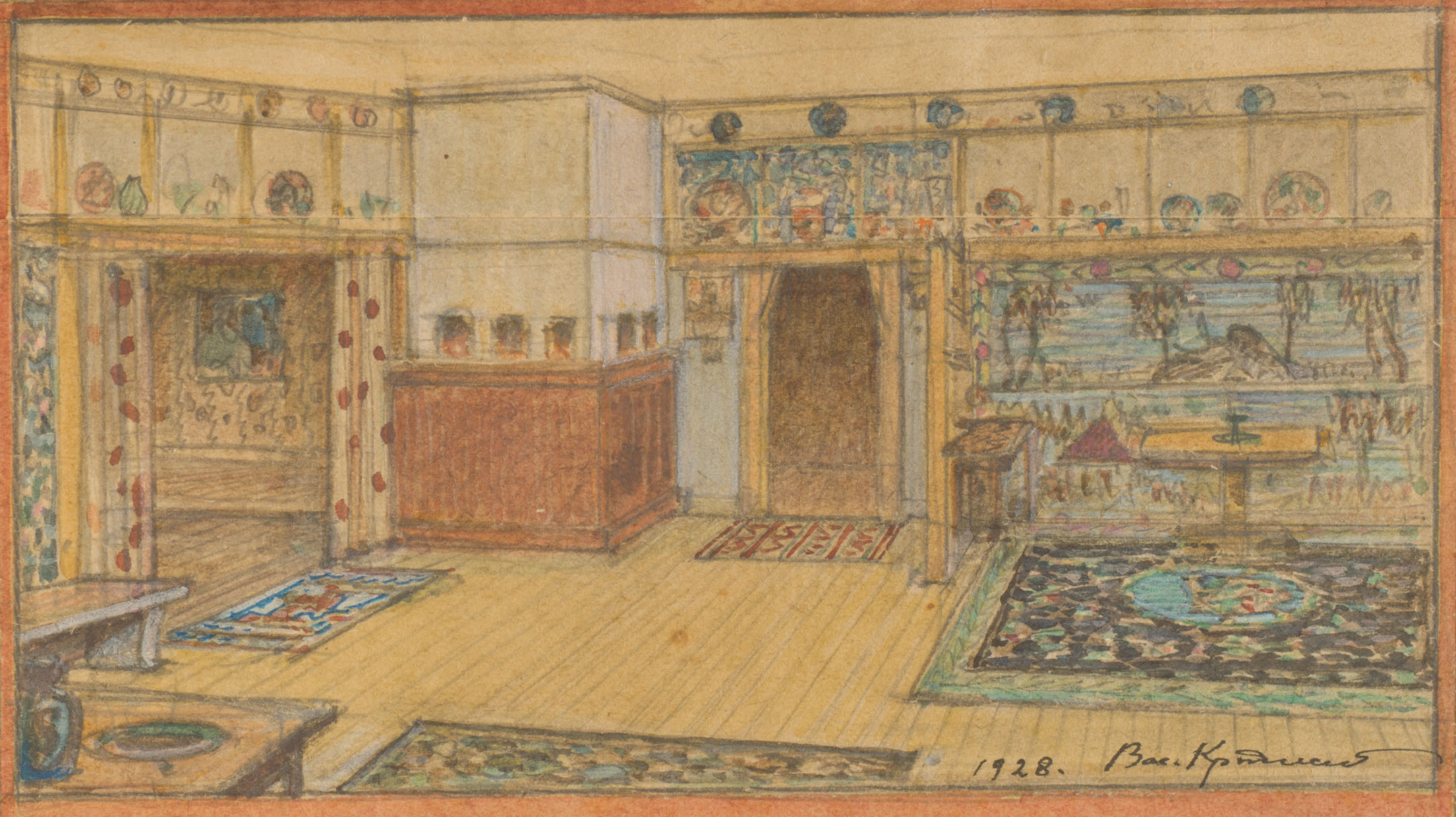
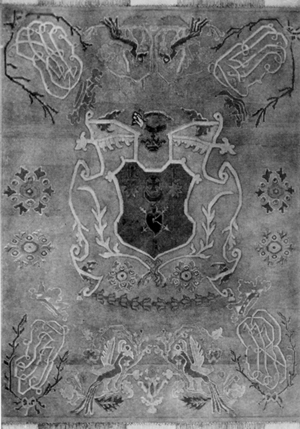
It is the very heart of the Big Apple, Manhattan, that likely houses the largest collection of works by Vasyl Krychevskiy outside Ukraine. Over 300 works were donated to the Ukrainian museum by his stepson and biographer Vadym Pavlovskiy. Krychevskiy himself never visited the United States: when the question arose where to migrate from France, his family chose the warm climate of Venezuela over the colder USA or Canada. However, Krychevskiy’s works have been actively shown in the United States.
Krychevskiy possessed a phenomenal ability to recreate things from memory. In particular, while in emigration, he repainted his work that was lost in a big fire in Kyiv in 1918. Although the his collection was not a total loss, the fire destroyed the bulk of the artist’s possessions, including his immensely valuable collection of Ukrainian, Persian, Chinese and Japanese artefacts, as well as his own work and writings. The fire was the result of a Bolshevik artillery attack on his home and studio in the centre of Kyiv on 7 February 1918.
22 Calle Las Mercedes, Caracas 1083, Miranda, Venezuela
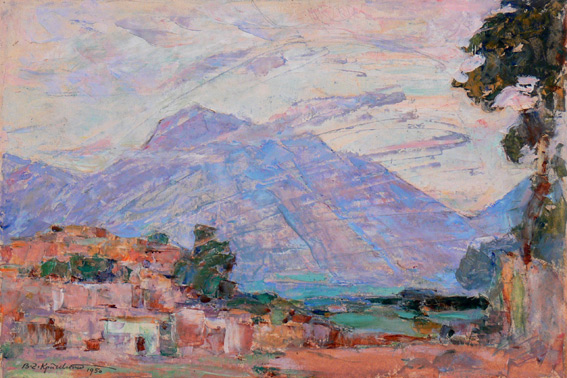
Vasyl Krychevskiy arrived in Caracas with his wife Yevhenia on 1 April 1948. They were invited by daughter Halyna who had moved there earlier with her family. The large immigrant family struggled financially and with the general living conditions in Venezuela, local diseases, and scorpions. But here, like anywhere else, Krychevskiy isolated himself from reality in pursuit of his creative urges. He was now 75, yet his fervour for work was undimmed. On his way to Caracas, he drew sketches of Gibraltar, Guadeloupe, and Martinique, the surrounding landscapes and still-lifes.
At the dawn of his career as an artist, Krychevskiy preferred watercolours, later switching to oil painting. Landscape was his favourite genre - nature, urban landscapes, architecture. Soft impressionist works reflect the painter’s character and ability for careful observation, memorisation, the accurate recreation of detail, and the use of chiaroscuro to express a range of moods. He still managed to show his works in several exhibitions. But having fallen ill in the spring of 1952, he essentially left off from his artistic pursuits, and on 15 November 1952, Vasyl Krychevskiy embarked on one final, eternal journey.
22 Calle Las Mercedes, Caracas, Miranda, Venezuela
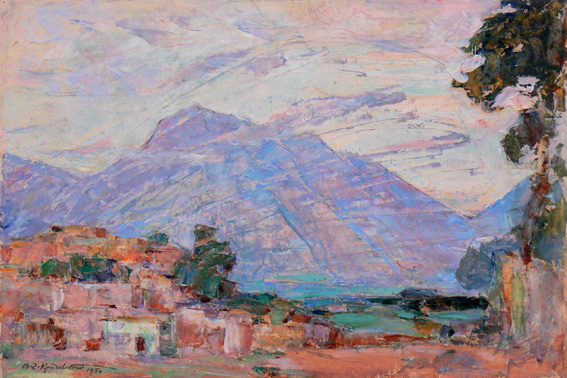
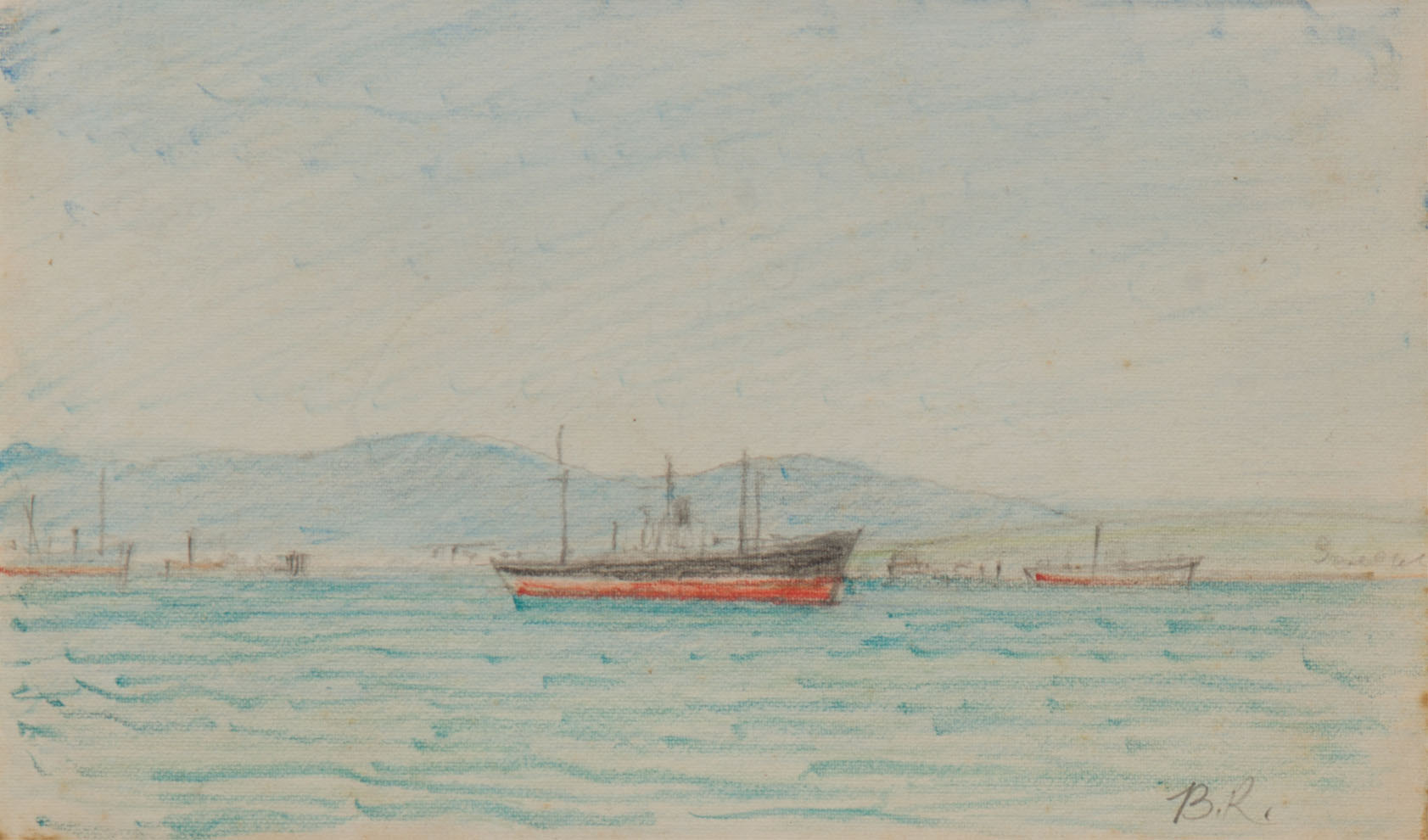
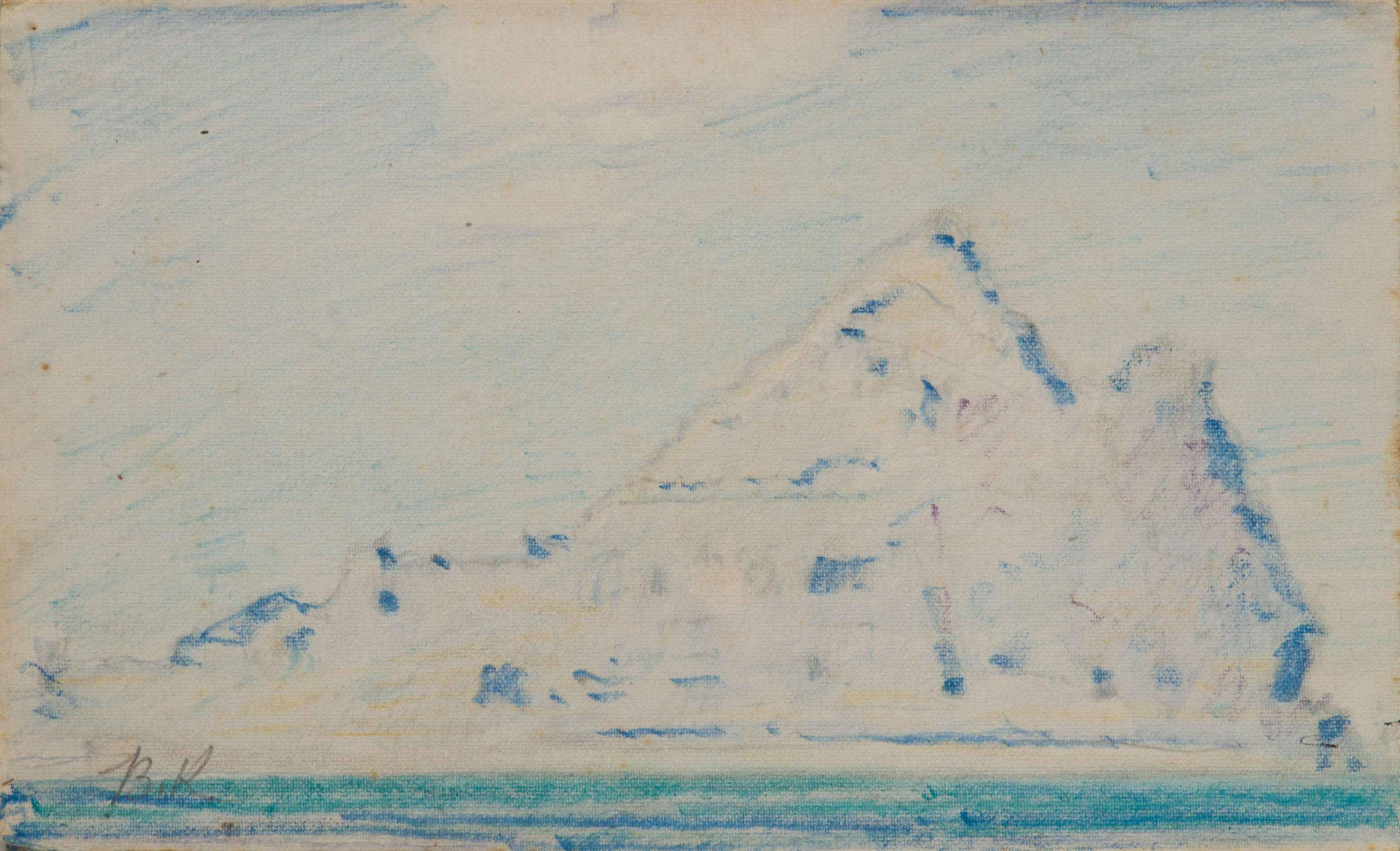
Vasyl Krychevskiy arrived in Caracas with his wife Yevhenia on 1 April 1948. They were invited by daughter Halyna who had moved there earlier with her family. The large immigrant family struggled financially and with the general living conditions in Venezuela, local diseases, and scorpions. But here, like anywhere else, Krychevskiy isolated himself from reality in pursuit of his creative urges. He was now 75, yet his fervour for work was undimmed. On his way to Caracas, he drew sketches of Gibraltar, Guadeloupe, and Martinique, the surrounding landscapes and still-lifes.
At the dawn of his career as an artist, Krychevskiy preferred watercolours, later switching to oil painting. Landscape was his favourite genre - nature, urban landscapes, architecture. Soft impressionist works reflect the painter’s character and ability for careful observation, memorisation, the accurate recreation of detail, and the use of chiaroscuro to express a range of moods. He still managed to show his works in several exhibitions. But having fallen ill in the spring of 1952, he essentially left off from his artistic pursuits, and on 15 November 1952, Vasyl Krychevskiy embarked on one final, eternal journey.
